Cruise Control In Cars Explained (And How To Safely Use It)

Have you ever wished you could set your car's speed and just sit back and relax while driving on a long stretch of highway? If that's the case, then cruise control is just the ticket you've been searching for—and the good news is, it's a standard feature in most cars these days!
Cruise control is a handy feature for drivers that allows you to maintain a constant speed without having to keep your foot on the gas pedal. In this post, we'll explore how cruise control works, its benefits, and how to use it safely to make your driving experience more comfortable.

Understanding Cruise Control
Cruise control, also known as speed control, is an electronic system that allows you to maintain a specific speed without manually controlling the accelerator pedal. The system uses sensors and electronic components to control the throttle and keep your car moving at a desired speed. First introduced in the late 1950s, cruise control has since become a standard feature in most modern vehicles you see on the road today.
How Does It Work?
At its core, cruise control involves a series of sensors that monitor the vehicle's speed and a control unit that regulates the throttle. When the driver sets the cruise control to a specific speed, the system adjusts the throttle to maintain that speed. If the car begins to slow down because of an incline (e.g. going up a hill), the system will open the throttle to accelerate. Conversely, if the car starts to speed up due to a declin (e.g. going downhill), the system will close the throttle to decelerate.
Modern cruise control systems also come with additional features like adaptive cruise control (ACC), which uses radar or cameras to detect vehicles ahead and automatically adjusts the speed to maintain a safe following distance (more on this BELOW).
The History of Cruise Control
The invention of cruise control can be traced back to the late 1940s and early 1950s, when engineer Ralph Teetor developed the first-speed control system. This innovative feature was designed to help drivers maintain a steady speed, reduce fatigue while driving, and improve fuel efficiency. Over the years, cruise control technology has undergone significant advancements, leading to the development of sophisticated systems like adaptive cruise control.
Types of Cruise Control Systems
Today, drivers can choose from a range of cruise control systems, each with its own unique features and functionalities.
Conventional Cruise Control
Conventional cruise control is like your old reliable friend. It's pretty basic and doesn't have any fancy bells and whistles. You just set the speed you want, and it'll keep your car cruising along at that speed, no problem. It's perfect for those long drives on open highways, but it doesn’t automatically react to other cars on the road.
So, if the car in front of you slows down, you'll need to step in and adjust your speed manually. This trusty system comes standard on most cars and is great for saving some fuel on those long road trips .
Adaptive Cruise Control (ACC)
Now, if conventional cruise control is your old reliable friend, then Adaptive Cruise Control (ACC) is like that friend's tech-savvy younger cousin. ACC isn't just maintaining your set speed, it's also keeping an eye on the car in front of you. If that car slows down, ACC slows your car down to keep a safe distance .
It's like having an extra set of eyes on the road, making highway driving a breeze. Plus, some ACC systems can even handle stop-and-go traffic, bringing your car to a full stop and then picking up speed again when traffic gets moving.
Predictive Cruise Control
Predictive Cruise Control is like the fortune teller of cruise control systems. It uses GPS and map data to see into the future and predict what's coming up on the road, like hills or curves, and adjusts your speed accordingly. This means you get a smoother ride and better fuel efficiency, but it all depends on the quality of the GPS and map data. If that's a bit out of date, your fortune-telling cruise control might not be so accurate. It's usually found in more high-end vehicles where top-notch fuel efficiency is a focus for the engineers.
Cooperative Adaptive Cruise Control (CACC)
And then we have Cooperative Adaptive Cruise Control, or CACC. This is like the team player of cruise control systems. It allows cars to talk to each other, coordinating their speeds to maintain a safe distance. It's like having a well-coordinated team of cars all working together to make the traffic flow smoother and reduce congestion. Picture it like a synchronized dance on the highway, where every car knows its place and keeps the right distance. This tech is still pretty new, but it's got a lot of potential. Imagine a future where traffic jams could be a thing of the past.
Remember, these systems are here to make your drive smoother and safer, but they're not a replacement for your attention. No matter how fancy your cruise control is, these systems can be greatly influenced by external conditions like weather and traffic, and they should always be used as aids, not replacements, for attentive driving.
Common Cruise Control Symbols and Indicators
Understanding the various symbols and indicators associated with cruise control is important for safe and effective usage. These symbols typically appear on the dashboard (or on the side of the steering wheel) and may include a speedometer icon, "SET," "RES" (resume), and "CANCEL". Be sure to consult your vehicle's owner's manual for specific details and explanations of these symbols.
Benefits of Using Cruise Control
Cruise control offers several benefits to drivers, especially during long road trips or highway driving.
Fuel Efficiency
One of the main advantages of using cruise control is improved fuel efficiency. By maintaining a constant speed, cruise control helps reduce fuel consumption, leading to better gas mileage. Rapid acceleration and deceleration, on the other hand, can lead to increased fuel consumption.
Comfort and Convenience
Cruise control allows drivers to take their foot off the accelerator pedal, reducing fatigue and improving comfort during long drives. It also helps drivers avoid unintentionally exceeding the speed limit by setting a maximum speed.
When used correctly, cruise control can contribute to safer driving. By maintaining a steady speed, it reduces the likelihood of erratic driving behavior and potential accidents. However, it is important to note that cruise control shouldn't be used in certain conditions, such as heavy traffic or slippery roads .
Troubleshooting Common Cruise Control Issues
Occasionally, you may encounter issues with your cruise control systems. Common problems include cruise control not engaging or disengaging unexpectedly. Possible causes may include a faulty brake light switch, malfunctioning sensors, or issues with the control module. If you experience any problems with your cruise control, it's best to have a qualified technician diagnose and repair the issue for you.
Cruise Control and Road Etiquette
Practicing proper road etiquette while using cruise control is essential for a safe and pleasant driving experience. Here are some tips on how to use cruise control courteously:
- Avoid using cruise control in heavy or congested traffic, as it may hinder your ability to react quickly to changing conditions.
- Be mindful of other drivers when setting your speed. Avoid setting a speed that's significantly slower or faster than the flow of traffic.
- If you are in the passing lane and using cruise control, be sure to adjust your speed or temporarily disengage the system to allow faster-moving vehicles to pass.
- Always signal your intentions, such as lane changes or exiting the highway, even when using cruise control.
The Future of Cruise Control Technology
Cruise control technology plays a vital role in the development of autonomous vehicles, or self-driving cars . In autonomous vehicles, cruise control systems work together with other advanced driver assistance systems (ADAS) to enable the vehicle to operate without direct driver input. These systems include lane-keeping assist, automatic emergency braking, and collision avoidance systems.
As autonomous vehicles become more sophisticated, cruise control technology is evolving to support higher levels of automation. For example, some autonomous vehicles are equipped with advanced cruise control systems that can navigate complex traffic scenarios, merge onto highways, and even change lanes autonomously.
While fully autonomous vehicles are still in the developmental stages, the integration of cruise control technology is a big step toward creating safer and more efficient transportation systems.
As automotive tech continues to advance, cruise control systems are becoming more intelligent and capable. Here are some potential developments we can expect to see in the future of cruise control technology:
- Integration of artificial intelligence (AI) to improve decision-making and responsiveness in adaptive cruise control systems.
- Enhanced connectivity and vehicle-to-vehicle (V2V) communication, enabling cars to share information about traffic conditions and coordinate their speeds for smoother traffic flow.
- Greater customization and personalization options, allowing drivers to set preferences for cruise control behavior, such as following distance and speed adjustments.
Overall, the future of cruise control technology holds promise for creating a more seamless and enjoyable driving experience, with a focus on safety, comfort, and sustainability.
Debunking Myths About Cruise Control
Let's address and debunk some common misconceptions about cruise control:
Myth : Cruise control can be used as a substitute for driver attention.
Fact : Cruise control is a driver assistance feature, not a replacement for attentive driving. Drivers should always remain alert and ready to take control when necessary.
Myth : Cruise control increases the risk of accidents.
Fact : When used appropriately, cruise control can contribute to safer driving by maintaining a steady speed and reducing erratic driving behavior.
Cruise control is a valuable feature that can enhance your driving experience by providing comfort, convenience, and fuel efficiency. Remember to use it safely and appropriately based on driving conditions, and always stay attentive while on the road.
If you found this post informative and want to learn more about car features, driving tips, and automotive technology, be sure to subscribe to our newsletter for regular updates. We're here to help you stay informed and enhance your driving experience.
Frequently Asked Questions About Cruise Control
To further enhance your understanding of cruise control, here are answers to some common questions:
Q : Can cruise control be used in all weather conditions?
A : It isn't advisable to use cruise control in adverse weather conditions, such as heavy rain, snow, or icy roads, as it may reduce your ability to respond quickly to changing road conditions.
Q : Can I use cruise control in urban areas with frequent stop-and-go traffic?
A : Cruise control is best suited for open roads and highways with consistent traffic flow. It isn't recommended for use in urban areas with frequent stops or heavy traffic.
Q : Does cruise control work at any speed?
A : Cruise control typically has a minimum speed threshold, below which it can't be engaged. This threshold varies by vehicle, so check your owner's manual for specific information.
About the Author: This article was crafted by the LOOP Marketing Team. Comprising of seasoned professionals with expertise in the insurance industry, our team is dedicated to providing readers with accurate, up-to-date, and valuable information. At LOOP, we're passionate about helping families navigate the world of car insurance, ensuring they get the best coverage at the most affordable rates. Learn more about our mission and values here.
For more insights on auto insurance and other related topics, visit our blog .
Quick Navigation
Check out how much you could save today.
Browse related articles

Decoding VINs: Your Car's Story Starts Here

How To Get Out Of A Parking Ticket

Good Debt Vs. Bad Debt: What'S The Best Way To Think About Debt?
Life has many roads. your weekly navigator is just a click away..
What is cruise control in a car? Meaning and how does it work?
Cruising on the highway can be a lot of fun. However, it demands maintaining a constant speed for a long time. To achieve that, you need to press the accelerator pedal continuously, which can get tiring after a while. That’s when the cruise control feature of your car comes into play. So, what exactly does it do and how does it work? This article explains cruise control in a car and how to use it in different driving conditions. So, without stepping on the ‘brake’ pedal, read on!

What is cruise control in a car?
It is a system that accurately maintains the speed set by the driver without any external intervention. It automatically controls the speed of a car and only allows the vehicle to hit a speed set by the driver. It does not allow the car to cross that speed limit. This feature has become common among modern cars. You can even find this feature in the top-spec variants of some of the affordable hatchbacks and sedans.
How does the cruise control system work?
Cruise control in a car replicates the inputs of a driver to control the vehicle’s speed. But instead of pressing the accelerator pedal, it uses a different mechanism to maintain a constant cruising speed.
Initially, the system used a cable to control the accelerator (throttle valve). You can find these mechanisms in older cars. It adjusted the vehicle's speed by engaging the throttle with the help of an actuator that is controlled by a cable. The throttle valve is responsible for the power and speed generated by the engine. So, depending on the speed set by the driver, the system automatically adjusted the throttle position.
But with the advent of technology in the automotive industry, the cruise control system in modern cars entirely relies on electronics. Instead of a cable, the system now communicates with the throttle via various sensors connected to a computer (ECU - Electronic Control Unit). So, when you set a speed, the ECU calculates the throttle position and engages the throttle wirelessly.
The system constantly maintains the speed set by you (driver) irrespective of road conditions. For example, if there’s an incline ahead, cruise control adjusts the throttle accordingly to maintain the same speed.
How to use cruise control?
Before engaging the cruise control in a car, remember that the system is not intended to be used in adverse weather conditions. For example, you may refrain from driving the car at cruising speeds when it’s raining heavily. The low visibility and unpredictable road conditions make it unsafe to drive at such speeds. So, always be mindful of the weather condition and your surroundings before engaging the system.
Here are the steps to use cruise control.
Step 1 - Before activating cruise control, build up speed by accelerating the car. However, do not cross the speed limit of that particular road/highway.
Step 2 - Once your car reaches the desired speed, activate cruise control. Generally, the system activation button will be on the steering wheel. However, locating the exact button when the vehicle is parked is better to avoid any distractions while driving.
Step 3 - Next, you can take your foot off the accelerator pedal. If you have set the cruise control correctly, the car should maintain the cruising speed.
Step 4 - Keep your eyes on the road as it is very easy to get distracted when the car is accelerating automatically.
Step 5 - If you wish to accelerate when the cruise control is engaged, you can press the ‘+’ button on the steering wheel to briefly engage the accelerator pedal.
Step 6 - To decelerate, press the ‘-’ button on the steering wheel. You can also tap on the brake pedal. However, as a safety precaution, almost all cars will deactivate the cruise control as soon as you press the brake pedal.
The buttons to activate cruise control or accelerate/decelerate may vary from one car to another. So, do check the owner’s manual before fiddling around with the system. It’s better if you are familiar with the controls before driving the vehicle, as it will avoid unnecessary distractions.
How to install cruise control in a car?
Can you install cruise control in a car? The answer is both yes and no. You may install an aftermarket kit if it’s an old car that does not rely on electronics to control all the engine-related functions. But installing such a kit becomes almost impossible in modern cars due to the complex electronics.
It is a complex process to install the system in new cars as you have to fiddle with electronics, and it also requires the fitment of hardware. So, it can only be done during the time of car manufacturing. Moreover, if you try installing an aftermarket kit, you may void the warranty offered by the OEM (Original Equipment Manufacturer). On top of that, it is not recommended to go for an aftermarket cruise control kit as it may compromise safety.
Newly launched cars are equipped with cruise control except for a few entry-level models. So, instead of investing in retrofitting a system, it's better and safer to spend that money on buying a car with a built-in system.
Adaptive cruise control
The new technology also allows the system to automatically adjust the car's speed depending on the speed of the vehicle ahead. This feature is known as adaptive cruise control. It ensures that the car maintains a safe distance from the vehicle ahead despite the constant change in speed of the vehicle moving ahead. It is instrumental in highways or during rush hour traffic and reduces driver fatigue.
It is also a level 1 autonomous driving system. The system uses radar sensors to calculate the speed and distance of the car ahead. For instance, if the vehicle in front of you slows down/speeds up, a car with adaptive cruise control will reduce speed/accelerate automatically without any external inputs.
You can find this feature in premium cars. But gradually, it is trickling down to not so expensive cars as well. Adaptive cruise control is a part of an advanced driver assistance system.
Pros and cons of cruise control
Cruise control makes driving easy and convenient, and at the same time, it also takes care of safety. But like every other feature, it has its own set of advantages and disadvantages, which are elaborated in the following section.
Below are some of the pros of the cruise control system.
Reduces driver fatigue: The primary role of cruise control is to maintain a constant speed without you having to step on the accelerator pedal. That means you can rest your right foot and can stay relaxed. It is helpful when you drive long distances on highways where you need to maintain a constant speed for long durations.
Improves fuel economy: When maintaining a constant speed, the engine will not get stressed as it need not change the intensity of operation. To put it in a simple way, when the engine runs at constant RPMs (Revolutions Per Minute) , it consumes less fuel. Hence, when driving long distances on highways, the cruise control system can improve fuel economy.
Helps to drive within the speed limit: You may drive at normal speed on busy urban roads. But when you hit the wide and smooth highways, you may end up crossing the speed limit. You may not even realise that you have crossed the speed limit until you glance at the speedometer. Cruise control can help you in this regard as you can easily set a speed limit and let the system do the work. The system will not allow the car to go over the speed set by you.
Increase/decrease speed with a click of a button: Typically, you use the accelerator and brake pedal to increase/decrease the speed of your car. But when the cruise control is engaged, you can even use the buttons to do the job for you. However, ensure that you are familiar with the functions of the buttons, as it may feel unnatural in the beginning. It is best to practice using the buttons in a safe environment before using them on public roads.
Works well with automatic cars: Cruise control works best with automatic cars as you need not worry about changing gears. The ECU or the onboard computer shifts the gears automatically when there is a change in speed and works well when cruising automatically. It means you only need to focus on steering the vehicle.
As mentioned earlier, cruise control also has some cons, which are listed below.
Limited use on Indian roads: Cruise control is suited for wide and long highways where drivers follow the rules. Although India has some excellent highways, many drivers may disregard rules which creates an unpredictable environment. Also, cattle, dogs and other animals may venture into public roads and make the situation even more tricky. Hence, it may be challenging to cruise at high-speeds.
Hampers reaction time: As mentioned above, the roads in India are unpredictable. You may have to perform emergency braking to avoid any obstacles on the road. When driving with manual controls, your right foot will be on the accelerator pedal, and it is easy to move your foot to step on the brake pedal in an emergency. But, when using cruise control, your right foot will be resting on the floor of the car, and it may take a bit more time to reach the brake pedal. This difference in reaction time may be the difference between you avoiding an obstacle or crashing into it.
Can induce drowsiness: If you use cruise control for long durations, you may end up feeling drowsy. Since the car is accelerating at a constant speed, your alertness level may drop in the long run. Hence, it is recommended that you manually control the vehicle once every 10-15 minutes when using the automatic cruising feature on highways.
Cannot use at night: Cruise control is of no use during night drives as the visibility is poor. Even with well-lit roads, the visibility is not as good as daylight. So, allowing the car to maintain a constant speed may be a safety concern, even on roads that are familiar to you.
It does not work well with manual cars: In a manual car, you have to change gears by yourself. The cruise control will handle the acceleration/deceleration, but you still need to shift the gears manually to maintain the optimum RPM. It can be irritating at times when you need to slow down and accelerate immediately. It may not be a dealbreaker, but it kind of refrains you from experiencing the full potential of the automatic cruising system.
Cruise control vs adaptive cruise control: Key differences
The below table highlights the key differences between cruise control and adaptive cruise control.
What is the difference between cruise control and speed limiter?
Sometimes you may get confused between cruise control and speed limiter as both are related to the car's speed. Refer to the table below to understand the difference between both the systems.
List of cruise control cars In India
Cruise control is a feature that we can see in a lot of cars. Gone are the days when this feature was limited to premium vehicles. Even vehicles with affordable price tags are equipped with intelligent features. Here’s the list of popular cars with the automatic cruising system.
List of adaptive cruise control cars in India
Adaptive cruise control is the more advanced version of the standard automatic cruising system. Currently, this system can be seen only in premium cars in India. Below is the list of popular cars with adaptive cruise control.
Frequently asked questions
Here are some of the most commonly asked questions related to cruise control in cars.
No, it is not a standard feature in cars. However, almost all vehicles costing above Rs. 5 lakhs are equipped with cruise control.
It is not advisable to install an aftermarket cruise control kit in your car as new vehicles have complex electronics. Moreover, installing such a kit involves a complicated process, and it may also void the warranty provided by the car manufacturer.
Typically, the cruise control button is located on the steering wheel for easy access. However, the location of the button may vary depending on the make and model.
Yes, you can use cruise control in a manual car. However, you need to manually control the gear shifts when the vehicle slows down or accelerates when the system is engaged.
What is a Car Muffler? How Does a Muffler Work?
Team AckoDrive Apr 11, 2024
What is an Infotainment System? How does Infotainment Work?
Team AckoDrive Apr 8, 2024
What are the Benefits of Electric Cars in India?
Car Battery Life: Everything You Need to Know
Team AckoDrive Apr 5, 2024
How Does a Car Steering Work?
All Articles

- PRO Courses Guides New Tech Help Pro Expert Videos About wikiHow Pro Upgrade Sign In
- EDIT Edit this Article
- EXPLORE Tech Help Pro About Us Random Article Quizzes Request a New Article Community Dashboard This Or That Game Popular Categories Arts and Entertainment Artwork Books Movies Computers and Electronics Computers Phone Skills Technology Hacks Health Men's Health Mental Health Women's Health Relationships Dating Love Relationship Issues Hobbies and Crafts Crafts Drawing Games Education & Communication Communication Skills Personal Development Studying Personal Care and Style Fashion Hair Care Personal Hygiene Youth Personal Care School Stuff Dating All Categories Arts and Entertainment Finance and Business Home and Garden Relationship Quizzes Cars & Other Vehicles Food and Entertaining Personal Care and Style Sports and Fitness Computers and Electronics Health Pets and Animals Travel Education & Communication Hobbies and Crafts Philosophy and Religion Work World Family Life Holidays and Traditions Relationships Youth
- Browse Articles
- Learn Something New
- Quizzes Hot
- This Or That Game New
- Train Your Brain
- Explore More
- Support wikiHow
- About wikiHow
- Log in / Sign up
- Cars & Other Vehicles
- Driving Vehicles
- Efficient Driving
How to Use Cruise Control on a Car
Last Updated: February 20, 2024 Fact Checked
This article was co-authored by Simon Miyerov . Simon Miyerov is the President and Driving Instructor for Drive Rite Academy, a driving academy based out of New York City. Simon has over 8 years of driving instruction experience. His mission is to ensure the safety of everyday drivers and continue to make New York a safer and efficient driving environment. This article has been fact-checked, ensuring the accuracy of any cited facts and confirming the authority of its sources. This article has been viewed 480,774 times.
Many cars come with cruise control systems, a great feature that will automatically keep a car driving at a set speed. This gives your feet a rest, and helps you save gas and avoid speeding tickets. Familiarize yourself with your car's cruise control switches, located on or near the steering wheel. Make sure to use cruise control only in safe conditions, and to stay focused on the road. Once you know how to operate cruise control, you're ready for a comfortable, efficient drive!
Get Car Support Solve Any Problem
We’re sorry we don’t support the car you are looking for. Please enter its make, model, and year below so that we can add support for it.
Operating Cruise Control

- Check your car's operating manual if you are unable to find the cruise control switches.

- Many cars have additional buttons to increase or decrease speed (marked by a +/-) when using cruise control.

- For some car models, cruise control will not operate below a certain speed, such as 40 miles (64 km) per hour.

- To stop cruise control briefly (such as when a car in front of you brakes), just press the brake as you normally would.
- If you are driving a manual, you can also disengage cruise control by pressing the clutch.
- If you are completely done using cruise control, you can press the “OFF” or "ON/OFF" switch.
- If your car has a cruise control “CANCEL” switch, you can also press that to stop it.

- If your car has a +/- button for cruise control, press this when you want to raise or lower your car's speed.
Using Cruise Control Safely and Efficiently

- Using cruise control on busy streets can also be dangerous. Since you yourself are not in complete control of your car, you may be paying less attention. You might brake or react to other cars more slowly than normal, increasing the chance of an accident.

- Wet or snowy roads
- Hilly, steep, or mountainous areas
- Winding roads

Expert Q&A

You Might Also Like

- ↑ Simon Miyerov. Driving Instructor. Expert Interview. 4 December 2019.
- ↑ https://www.youtube.com/watch?v=jKtBSFoAYlg
- ↑ http://www.thecarexpert.co.uk/cruise-control/
About This Article

If you want to use cruise control on your car, make sure you're on the open road, such as a freeway or highway. Additionally, avoid using cruise control in rainy or snowy conditions, or if you're driving through a city, since you'll need to change speed and turn regularly. When you're ready to switch to cruise control, press the "Set" switch, which is usually found on the steering column or on the wheel, when your car reaches the desired speed. To stop cruise control, press on the brake or push the clutch if you're driving a manual car. To learn when to avoid using cruise control and how it can help you save on fuel, read on! Did this summary help you? Yes No
- Send fan mail to authors
Reader Success Stories
Joseph Adizero
Dec 17, 2020
Did this article help you?
Suraj Sinha
Jun 17, 2016
Ashish Vohra
Oct 17, 2017
Jul 26, 2017
Alejandro Martinez
Jul 25, 2016

Featured Articles

Trending Articles

Watch Articles

- Terms of Use
- Privacy Policy
- Do Not Sell or Share My Info
- Not Selling Info
Get all the best how-tos!
Sign up for wikiHow's weekly email newsletter
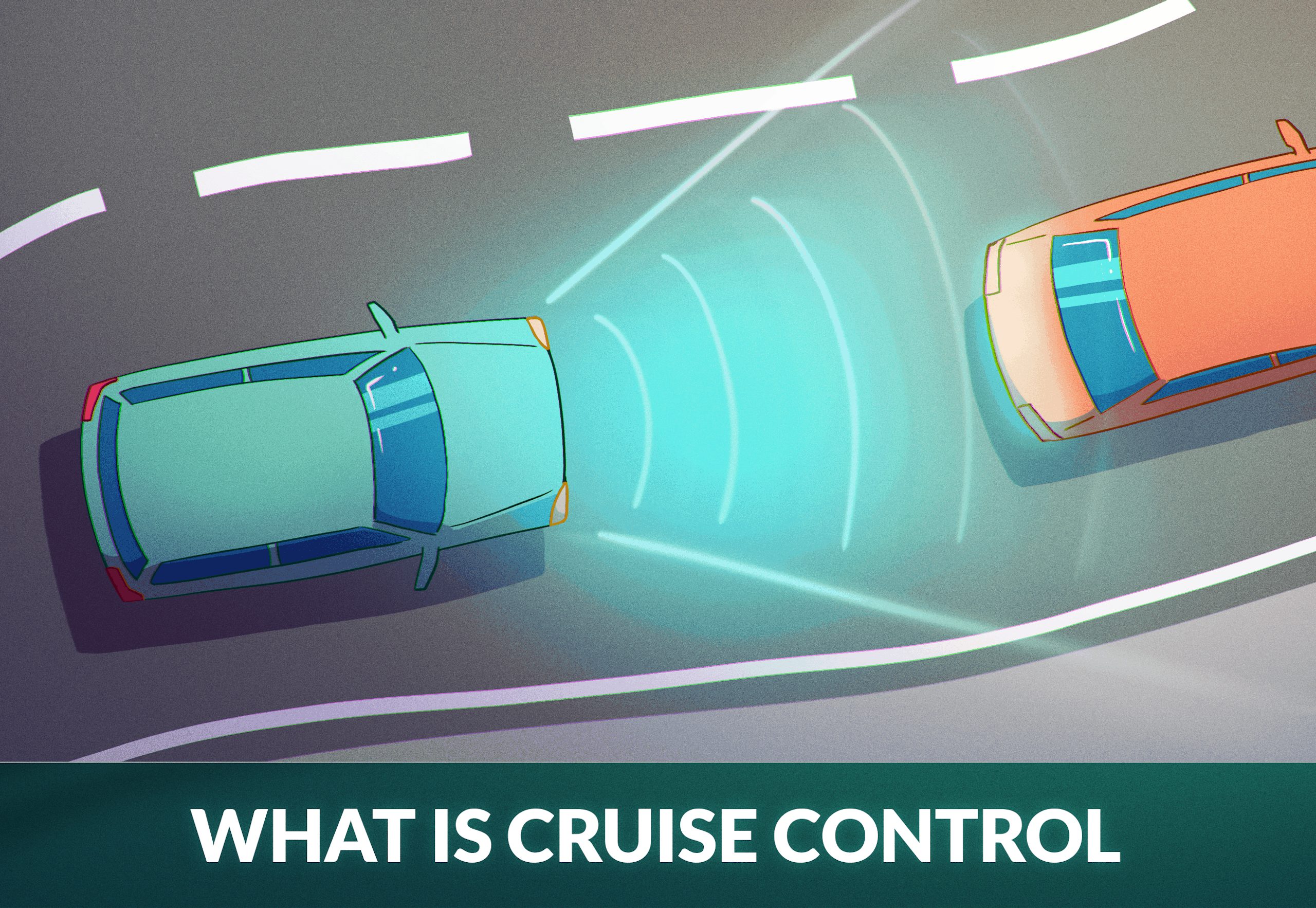
Cruise Control Explained – All You Need to Know
Cruise control has come a long way since first invented and patented by Ralph Teetor in 1950, who originally named it the “Speedostat”. Chrysler Corporation was the first manufacturer to offer the groundbreaking mechanism as an option on several of its luxury vehicle models nine years later. Today, cruise control is rapidly becoming the standard on all new vehicles, providing drivers with increased convenience on their daily drive.
As you’re learning how to operate a vehicle , understanding cruise control will help increase your comfort behind the wheel and knowledge of driving.
What is Cruise Control?
Cruise control is an electronic device within your vehicle that controls the speed of your vehicle. It allows the driver to maintain a constant speed of 25 mph without holding their foot on the accelerator. Although the feature has been around for 70 years, automotive manufacturers continue to improve upon the technology to provide drivers with increased comfort, luxury, and convenience whenever they’re behind the wheel.
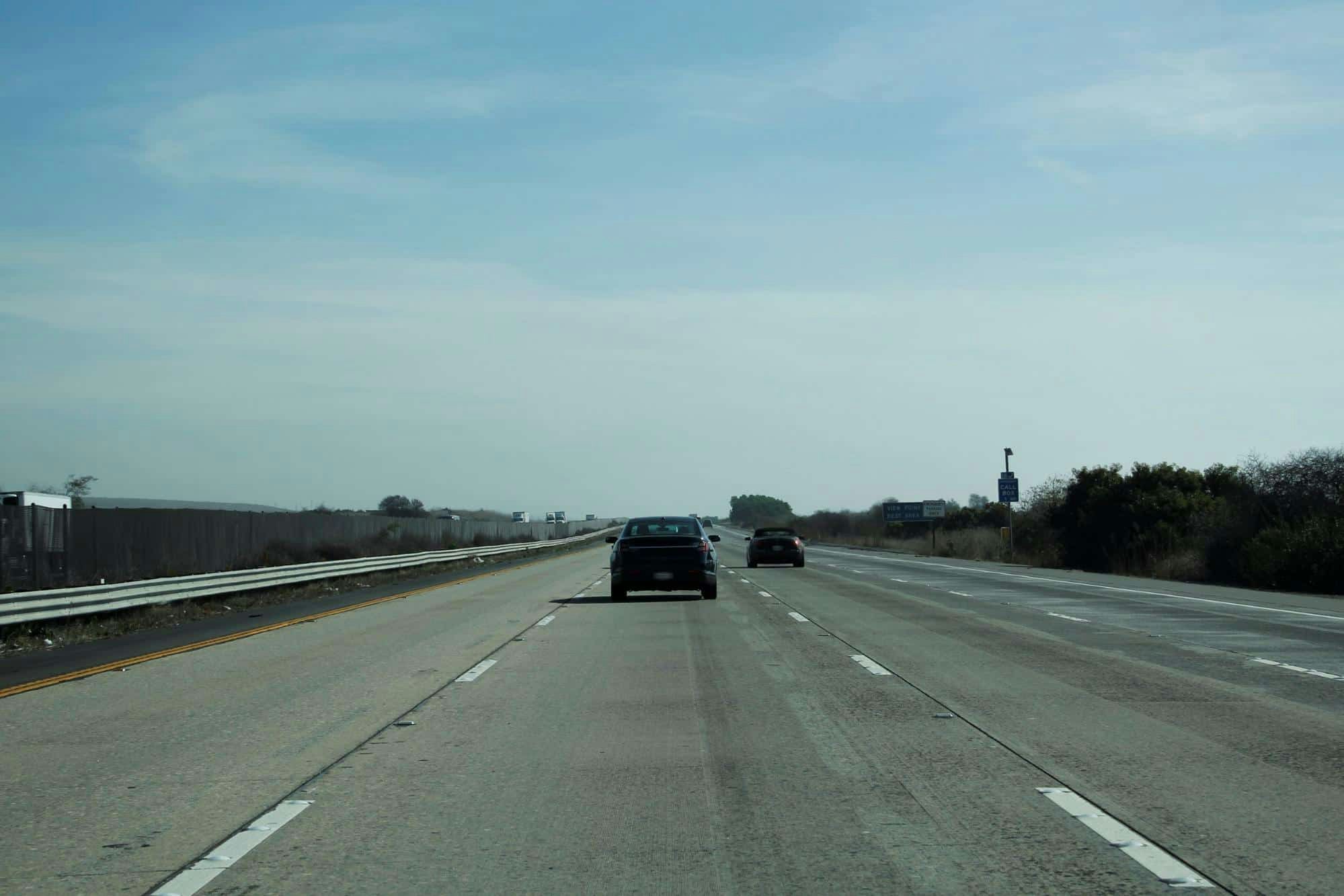
Different Types of Cruise Control
There are 3 types of cruise control systems.
- Speed Limiter
- Adaptive Cruise Control
- Semi-autonomous Cruise Control
What is a Speed Limiter?
A speed limiter will limit how fast the driver can accelerate behind the wheel. All modern vehicles contain a standard speed limiter capping speed between 120 mph and 180 mph depending to protect the vehicle’s engine and discourage reckless driving. However, an additional limiter can be added as an option in many European-made cars, as well as Tesla, Ford, and Nissan. Drivers are still required to keep their foot on the pedal to keep their vehicle in motion, but will not be able to accelerate past a predefined speed limit.
What is Adaptive Cruise Control?
Adaptive cruise c ontrol uses sensors around the vehicle’s exterior to maintain speed while keeping a safe following distance from the car ahead. The system will slow you down and speed you up as the flow of traffic fluctuates throughout your commute, removing a lot of the stress from daily driving. However, adaptive cruise control may not work well in bad weather or protect you from sudden movements, so you will want to always keep your full attention on the road.
What is Semi-autonomous Cruise Control?
Luxury automakers such as Tesla and Audi are implementing the newest rendition of cruise control on their latest vehicle models – Semi-autonomous Cruise Control. It works largely the same as adaptive cruise control, but assists drivers with lane guidance and steering. There are several variations of semi-autonomous cruise control that include additional convenience features for the driver.
How to Use Cruise Control – 6 Step Guide
These are the steps to using cruise control effectively.
- Observe weather conditions
- Build speed
- Engage cruise control
- Set cruise control
- Watch the road and steer
- Brake to disengage
1 – Observe weather conditions
As mentioned, cruise control may become inconsistent in rainy, snowy, or otherwise hazardous conditions. If you must drive in this situation, it may be a better idea to do so manually. Cruise control works best on a clear day with constant traffic flow.

2 – Build speed
Accelerate to your desired speed as you prepare to activate cruise control. US highways have posted speed limits between 55 mph and 75 mph. Do not attempt to set cruise control when you are traveling over the speed limit.
3 – Engage cruise control
Once you’ve reached your desired speed, engage the cruise control. This step will vary widely based on your vehicle make and model, however, many cruise control settings are accessible from the steering wheel controls. Check your owner’s manual for further information.
4 – Set cruise control
After turning on cruise control, you’ll need to set your desired speed. Many systems set the cruise control at the current speed, while others require you to manually set one. You can increase and decrease this speed as needed without interrupting the mechanism.
5 – Watch the road and steer
Watching the road is essential when cruise control is engaged. Cruise control is not a substitute for a human driver and will require supervision at every step. If you are using a semi-autonomous system, you will not need to steer but will need to keep at least one hand on the wheel for safety measures.
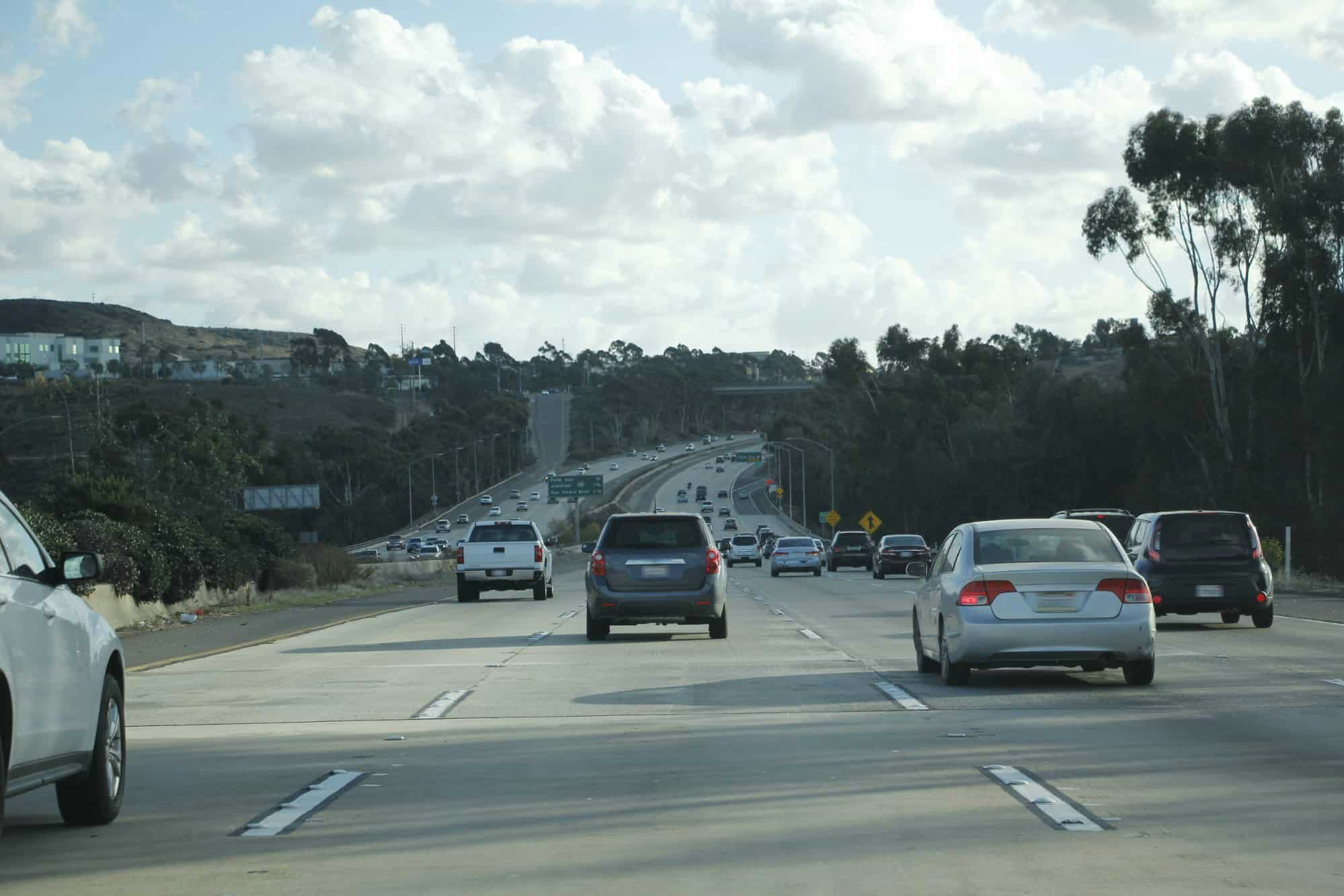
6 – Brake to disengage
When cruise control is no longer needed, or you need to quickly make a maneuver, simply apply pressure to the brakes to disengage the system. Once deactivated, you will be in full control of your vehicle once again.
When NOT to Use Cruise Control
While cruise control is a convenient feature for modern drivers, it is not perfect for all circumstances. In fact, utilizing the system can be quite dangerous if you’re not careful. Be sure not to use cruise control under these conditions.
Heavy Traffic
Heavy, or stop-and-go traffic is not ideal for safely using cruise control. When engaging cruise control on the highway, ensure your lane is clear and there are no vehicles stopping ahead.
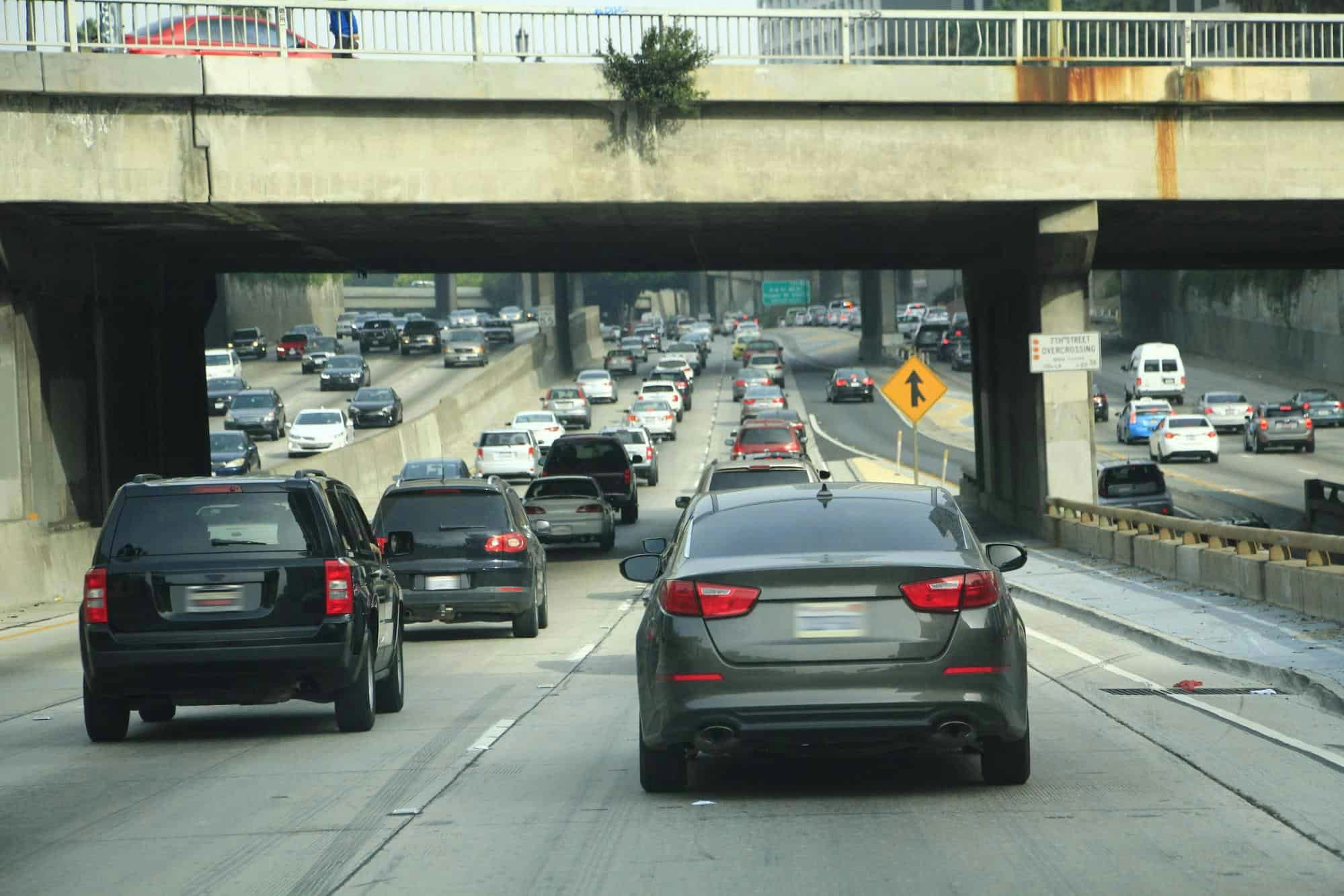
Wet or Icy Conditions
You need to be driving slowly while on wet and icy roads. While cruise control keeps a constant, predetermined speed, it takes away a lot of the manual control needed to stay safe when it’s raining or snowing.
City Driving
While driving through the city, you’ll face a number of stop lights and stop signs that will require manual braking. This action will automatically disengage cruise control.
Winding Roads
Winding roads require more attention than straight, flat streets. Cruise control systems, even adaptable cruise control, may not always detect these streets correctly, causing accidents.
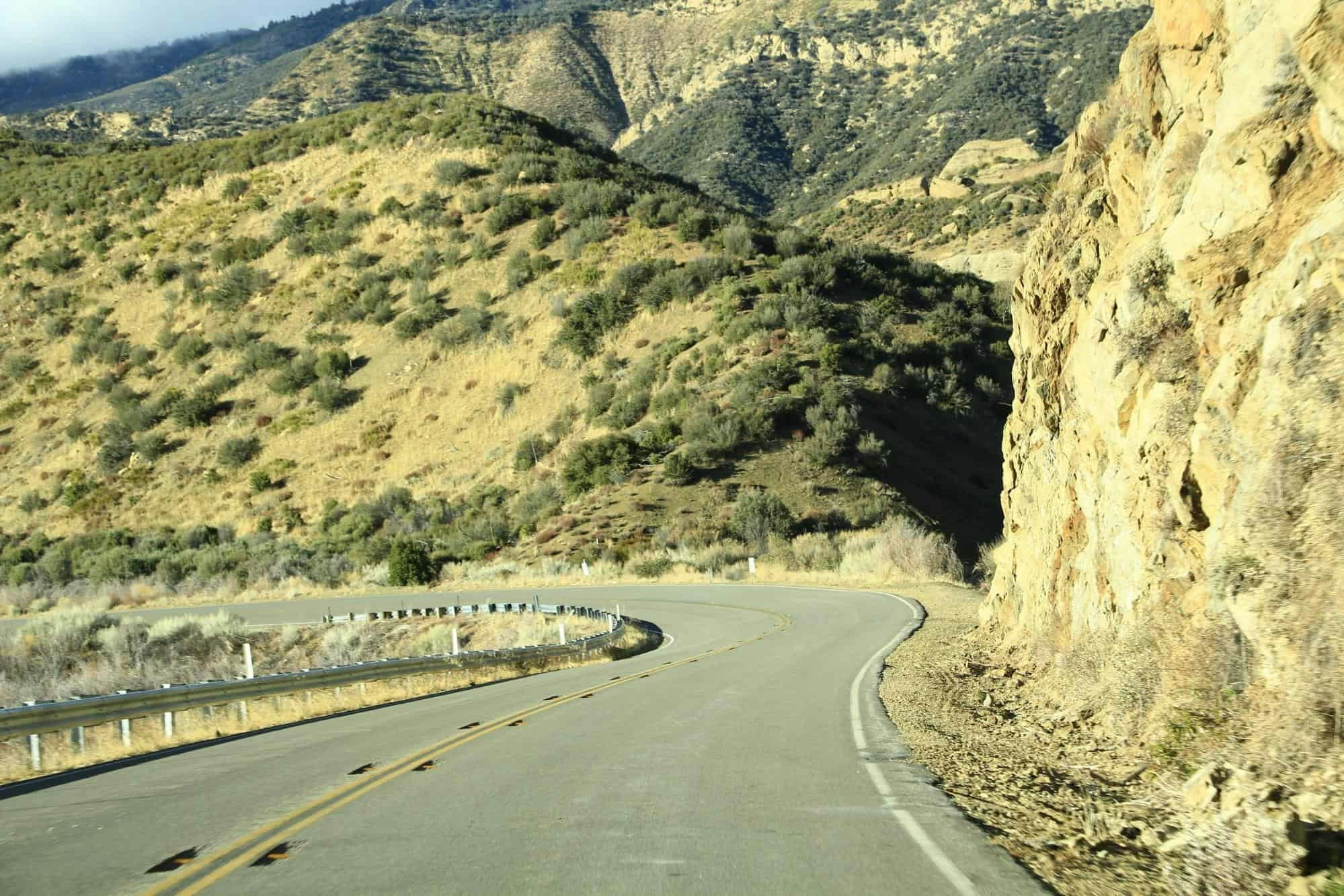
Fatigued Driving
Driving while fatigued is never a good idea, but even less so while using cruise control. Utilizing the system may add to your fatigue, as you give your vehicle more control of the journey. If you’re even the least bit tired, you should never turn on cruise control.
As you can see, cruise control is a great way to relieve much of the stress that comes with everyday driving. The constant rate of speed can also drastically improve fuel efficiency for longer drivers. Cruise control has had a positive impact on the driving industry for 70 years and shows no signs of disappearing anytime soon.

550+ exam-like questions
All you need to ace your test
Perfect for first-timers, renewals and senior citizens
Recommended articles

Traffic Safety is Crucial to Your Business
By kristin pettway, drive smart virginia april is distracted driving awareness month and the perfect opportunity for workplaces to review their traffic safety policies and communications. traffic crashes are the leading cause of workplace deaths in america. even if you don’t have a fleet of vehicles, safe driving should still matter to your business. after […].
Cost Effective Cars
The cheapest and most expensive cars to run in the us there are so many different costs to factor in when you buy a new car. from the price of gas, to insurance and vehicle tax rates in your area. in a landscape where consumer prices fluctuate, particularly in areas like vehicle parts, used car […].
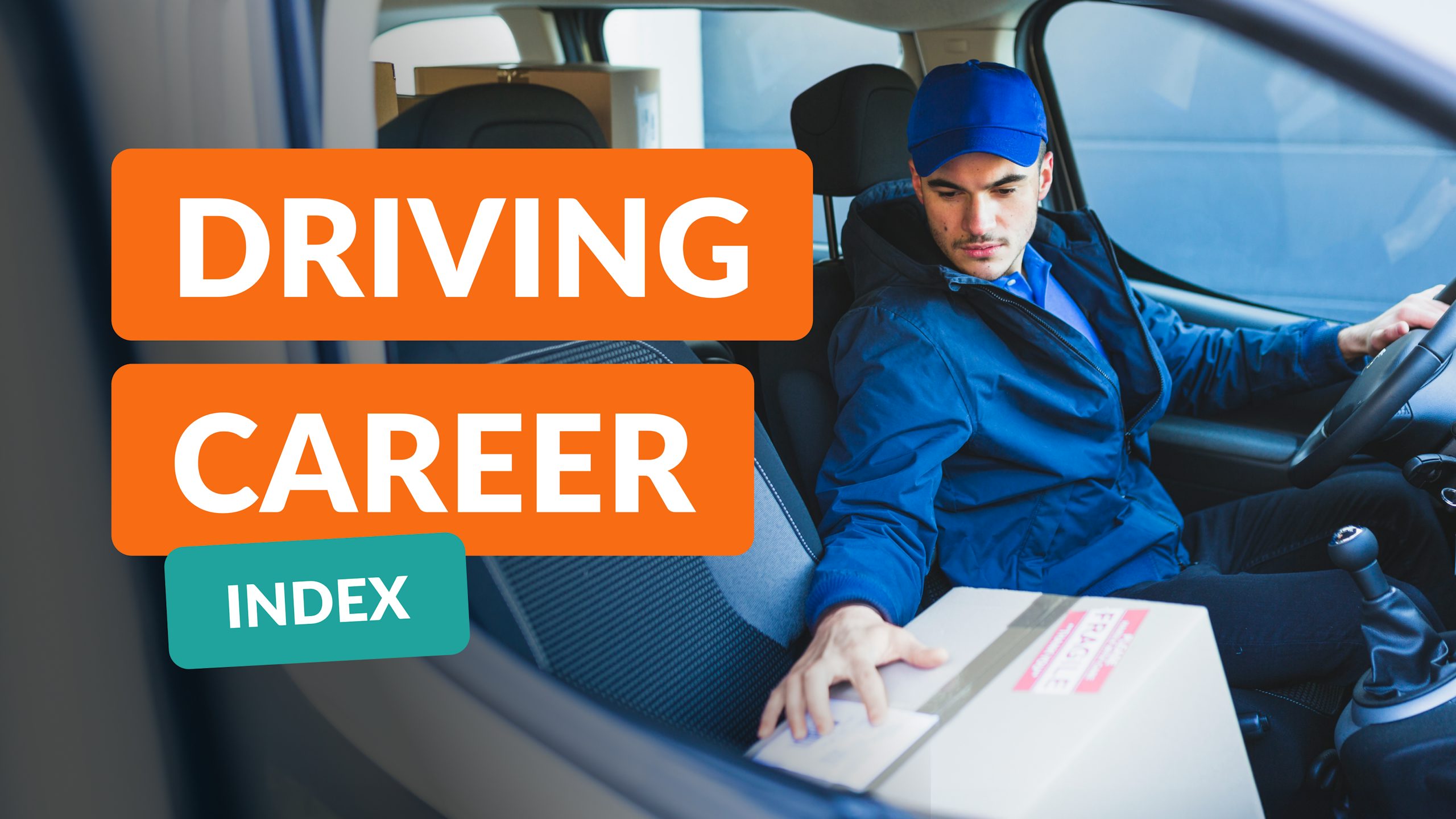
Driving Career Index
A driver’s license opens up numerous job opportunities. but which jobs offer the biggest growth potential with minimal training in this report, zutobi drivers ed analyzed average salary, job availability, employment change rates, and education requirements to identify the top career options for individuals with driver’s licenses. top jobs with the biggest growth opportunities first […].
Ace your DMV test, guaranteed
Get started
Best of the Zutobi blog
- Learner’s Permit Ultimate Guide
- Driving Test Ultimate Guide
- Traffic Lights Guide
- How to Pass the DMV Permit Test
- How to Pass the Driving Test
- Common Reasons For Failing the Road Test
- International Driver’s Permit Guide
- Driver’s License Renewal
- How to Get Your US Driver’s License
- How to Prepare for Your Road Test
- How to Get a Driver’s Permit
- Behind-The-Wheel training
- Terms & conditions
- Privacy policy
- Do Not Sell My Personal Information
- Subscription terms
- Terms & policies
Practice Tests
- Car Practice Tests
- CDL Practice Tests
- Motorcycle Practice Tests
Advertisement
How Cruise Control Systems Work
- Share Content on Facebook
- Share Content on LinkedIn
- Share Content on Flipboard
- Share Content on Reddit
- Share Content via Email
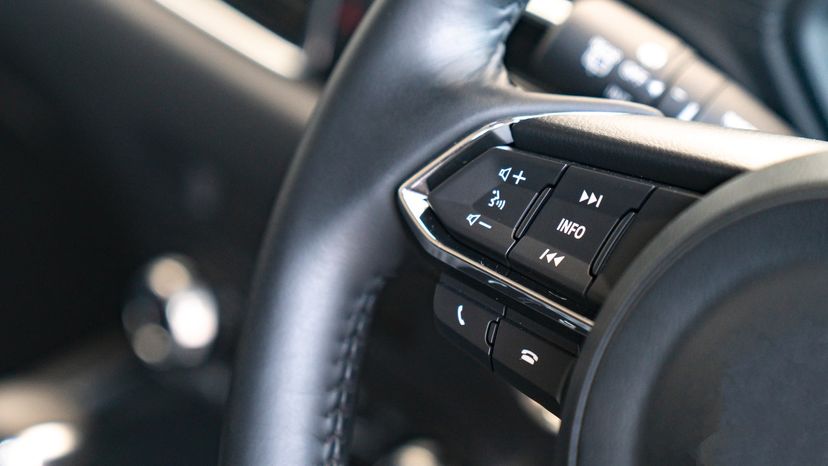
Cruise control is an invaluable feature on American cars. Without cruise control, long road trips would be more tiring, for the driver at least, and those of us suffering from lead-foot syndrome would probably get a lot more speeding tickets.
Cruise control is far more common on American cars than European cars, because the roads in America are generally bigger and straighter, and destinations are farther apart. With traffic continually increasing, basic cruise control is becoming less useful, but instead of becoming obsolete, cruise control systems are adapting to this new reality -- soon, cars will be equipped with adaptive cruise control, which will allow your car to follow the car in front of it while continually adjusting speed to maintain a safe distance.
In this article, we'll learn how a conventional cruise control system works, and then we'll take a look at adaptive cruise control systems that are under development.
What Cruise Control Does
Cruise control acceleration and deceleration, controlling the cruise control, adaptive cruise control.
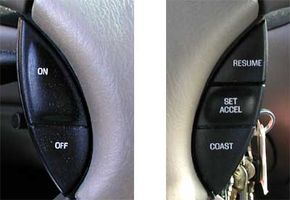
The cruise control system actually has a lot of functions other than controlling the speed of your car. For instance, the cruise control pictured below can accelerate or decelerate the car by 1 mph with the tap of a button. Hit the button five times to go 5 mph faster. There are also several important safety features -- the cruise control will disengage as soon as you hit the brake pedal, and it won't engage at speeds less than 25 mph (40 kph).
The system pictured below has five buttons: On, Off, Set/Accel, Resume and Coast. It also has a sixth control -- the brake pedal, and if your car has a manual transmission the clutch pedal is also hooked up to the cruise control.
- The on and off buttons don't actually do much. Hitting the on button does not do anything except tell the car that you might be hitting another button soon. The off button turns the cruise control off even if it is engaged. Some cruise controls don't have these buttons; instead, they turn off when the driver hits the brakes, and turn on when the driver hits the set button.
- The set/accel button tells the car to maintain the speed you are currently driving. If you hit the set button at 45 mph, the car will maintain your speed at 45 mph. Holding down the set/accel button will make the car accelerate; and on this car, tapping it once will make the car go 1 mph faster.
- If you recently disengaged the cruise control by hitting the brake pedal, hitting the resume button will command the car to accelerate back to the most recent speed setting.
- Holding down the coast button will cause the car to decelerate, just as if you took your foot completely off the gas. On this car, tapping the coast button once will cause the car to slow down by 1 mph.
- The brake pedal and clutch pedal each have a switch that disengages the cruise control as soon as the pedal is pressed, so you can shut off the cruise control with a light tap on the brake or clutch.
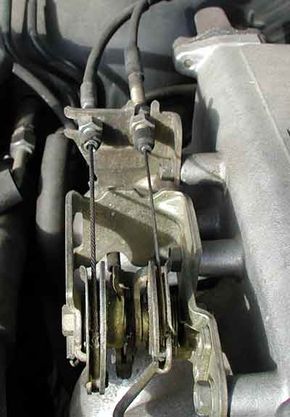
The cruise control system controls the speed of your car the same way you do -- by adjusting the throttle position . But cruise control actuates the throttle valve by a cable connected to an actuator , instead of by pressing a pedal. The throttle valve controls the power and speed of the engine by limiting how much air the engine takes in (see How Fuel Injection Systems Work for more details).
In the picture above, you can see two cables connected to a pivot that moves the throttle valve. One cable comes from the accelerator pedal, and one from the actuator. When the cruise control is engaged, the actuator moves the cable connected to the pivot, which adjusts the throttle; but it also pulls on the cable that is connected to the gas pedal -- this is why your pedal moves up and down when the cruise control is engaged.
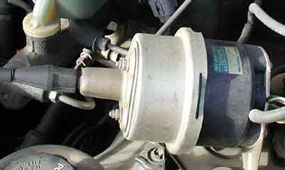
Many cars use actuators powered by engine vacuum to open and close the throttle. These systems use a small, electronically-controlled valve to regulate the vacuum in a diaphragm. This works in a similar way to the brake booster , which provides power to your brake system.
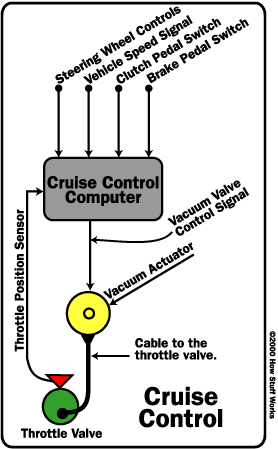
The brain of a cruise control system is a small computer that is normally found under the hood or behind the dashboard. It connects to the throttle control seen in the previous section, as well as several sensors. The diagram below shows the inputs and outputs of a typical cruise control system.
A good cruise control system accelerates aggressively to the desired speed without overshooting, and then maintains that speed with little deviation no matter how much weight is in the car, or how steep the hill you drive up. Controlling the speed of a car is a classic application of control system theory . The cruise control system controls the speed of the car by adjusting the throttle position, so it needs sensors to tell it the speed and throttle position. It also needs to monitor the controls so it can tell what the desired speed is and when to disengage.
The most important input is the speed signal; the cruise control system does a lot with this signal. First, let's start with one of the most basic control systems you could have -- a proportional control .
In a proportional control system, the cruise control adjusts the throttle proportional to the error, the error being the difference between the desired speed and the actual speed. So, if the cruise control is set at 60 mph and the car is going 50 mph, the throttle position will be open quite far. When the car is going 55 mph, the throttle position opening will be only half of what it was before. The result is that the closer the car gets to the desired speed, the slower it accelerates. Also, if you were on a steep enough hill, the car might not accelerate at all.
Most cruise control systems use a control scheme called proportional-integral-derivative control (a.k.a. PID control). Don't worry, you don't need to know any calculus to make it through this explanation -- just remember that:
- The integral of speed is distance.
- The derivative of speed is acceleration.
A PID control system uses these three factors -- proportional, integral and derivative, calculating each individually and adding them to get the throttle position.
We've already discussed the proportional factor. The integral factor is based on the time integral of the vehicle speed error . Translation: the difference between the distance your car actually traveled and the distance it would have traveled if it were going at the desired speed, calculated over a set period of time. This factor helps the car deal with hills, and also helps it settle into the correct speed and stay there. Let's say your car starts to go up a hill and slows down. The proportional control increases the throttle a little, but you may still slow down. After a little while, the integral control will start to increase the throttle, opening it more and more, because the longer the car maintains a speed slower than the desired speed, the larger the distance error gets.
Now let's add in the final factor, the derivative . Remember that the derivative of speed is acceleration. This factor helps the cruise control respond quickly to changes, such as hills. If the car starts to slow down, the cruise control can see this acceleration (slowing down and speeding up are both acceleration) before the speed can actually change much, and respond by increasing the throttle position.
Two companies are developing a more advanced cruise control that can automatically adjust a car's speed to maintain a safe following distance. This new technology, called adaptive cruise control , uses forward-looking radar , installed behind the grill of a vehicle, to detect the speed and distance of the vehicle ahead of it.
Adaptive cruise control is similar to conventional cruise control in that it maintains the vehicle's pre-set speed. However, unlike conventional cruise control, this new system can automatically adjust speed in order to maintain a proper distance between vehicles in the same lane. This is achieved through a radar headway sensor , digital signal processor and longitudinal controller . If the lead vehicle slows down, or if another object is detected, the system sends a signal to the engine or braking system to decelerate. Then, when the road is clear, the system will re-accelerate the vehicle back to the set speed.
The 77-GHz Autocruise radar system made by TRW has a forward-looking range of up to 492 feet (150 meters), and operates at vehicle speeds ranging from 18.6 miles per hour (30 kph) to 111 mph (180 kph). Delphi's 76-GHz system can also detect objects as far away as 492 feet, and operates at speeds as low as 20 mph (32 kph).
Adaptive cruise control is just a preview of the technology being developed by both companies. These systems are being enhanced to include collision warning capabilities that will warn drivers through visual and/or audio signals that a collision is imminent and that braking or evasive steering is needed.
For more information on cruise control, check out the links below.
Cruise Control FAQ
How does cruise control work, how does adaptive cruise control work, will adaptive cruise control stop the vehicle, when would you use cruise control, how useful is cruise control, lots more information, related articles.
- How Car Engines Work
- How Brakes Work
- How Manual Transmissions Work
- How Fuel Injection Systems Work
- How Radar Detectors Work
- Ignition System Quiz
More Great Links
- BMW: Cruise-control-equipped motorcycle
- Cruise Control Block Diagram
- Cruise Control Installers' Instructions
- Cruise Control Service Tips
Please copy/paste the following text to properly cite this HowStuffWorks.com article:

What Is Cruise Control In A Car and How It Works
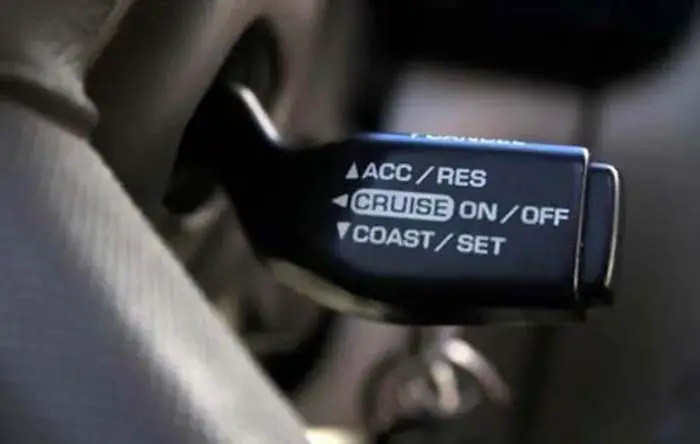
According to the research , cruise control reduces the mental workload of the driver. It reduces fatigue and increases the comfort of driving a long distance. It is also good to avoid speed violations and resists the temptation to speed up the car.
Although cruise control can be a great help on long trips by maintaining a consistent speed and freeing up the driver’s hands, it is important to remember that it is not a replacement for a driver’s attention and care. Drivers must still be vigilant in paying attention to the road and their surroundings, and be prepared to take over control of the vehicle if necessary. Additionally, drivers should periodically check the vehicle’s speed to ensure that it is still within the desired range.
Fortunately, on this page, you can learn everything you need to know about cruise control. In this powerful article, you are going to quickly learn what cruise control is in a car.
Related Post: Advantages & Disadvantages Of Adaptive Cruise Control
What Is Cruise Control In Vehicle
Cruise Control also known as speed control or auto cruise is a system that allows you to keep the car at a constant speed without holding your foot on the accelerator pedal. Technically, it is an electronic feature that reprograms the car’s setting to keep the car at a constant speed regardless of pressing and holding the foot on the accelerator pedal.
This cruise control is a kind of driving on auto-pilot mode. It automatically controls the car’s steady speed by taking the control of the throttle body. It comes in cars having a drive-by-wire system where an electronically controlled throttle body is manipulated by a cruise control computer. The cruise control computer is a small computer that you can fit under the hood or in the cabin behind the dashboard.
Related Post: Does Cruise Control Save Gas? | Confused!? Here’s A Comprehensive & Detailed Guide
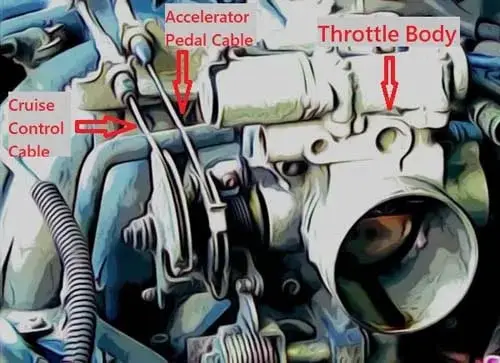
In the early mechanical linkage throttle body, two cables are used for operating the cruise control, one cable goes to the accelerator pedal, and the second cable goes to the vacuum actuator to operate the throttle body for cruise control.
This vacuum actuator also pulls the cable connected to the accelerator pedal and actuates the throttle butterfly valve. Modern cruise control systems have a memory feature which means, it remembers the last time the cruise control system was canceled.
You can resume the previously canceled speed by tapping on the RES button. With the activated cruise control system, you can override the speed of the car by pressing the accelerator pedal. But once, you take the foot off the accelerator pedal, the cruise control reduces the speed until it reaches the last SET speed.
This is an Alert Some cars do not engage the cruise system below a certain speed, typically less than 40 km/h or 25 mph.
Related Post: The Ultimate Guide To Cruise Control Symbol & Adaptive Cruise Control Symbol
Frequently Asked Questions (FAQs)
The purpose of cruise control is to maintain a constant speed by automatically adjusting the throttle. This can be beneficial for the driver, as it reduces the need to repeatedly adjust the accelerator pedal. Additionally, it may help to improve fuel efficiency and emissions by reducing the amount of time the engine spends idling. However, cruise control is not without its drawbacks – it can lead to overuse of the brakes and increased wear on the tires, and it may not be suitable for all road conditions.
The cruise control feature on a car does not drain the battery. This is because the cruise control system is not continuously running when engaged, but rather it only activates when the car is traveling at a consistent speed. When activated, the cruise control system will automatically adjust the throttle and brakes to maintain a set speed, which takes very little power from the battery. Therefore, engaging the cruise control feature will not cause your car’s battery to drain any faster than if you were driving without it.
About The Author
Related Posts
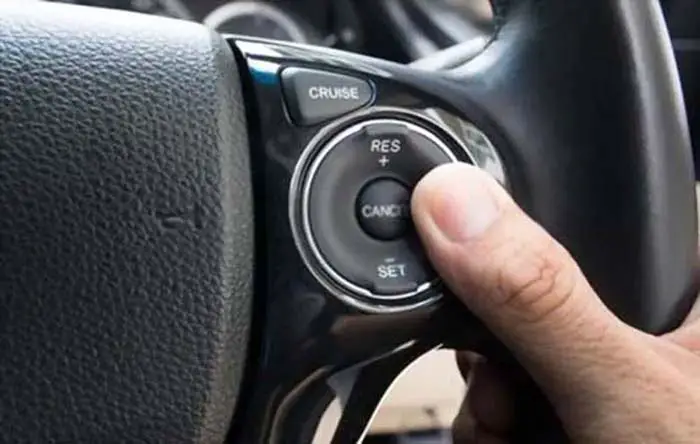
How To Turn OFF Cruise Control, When To Use It & When Not
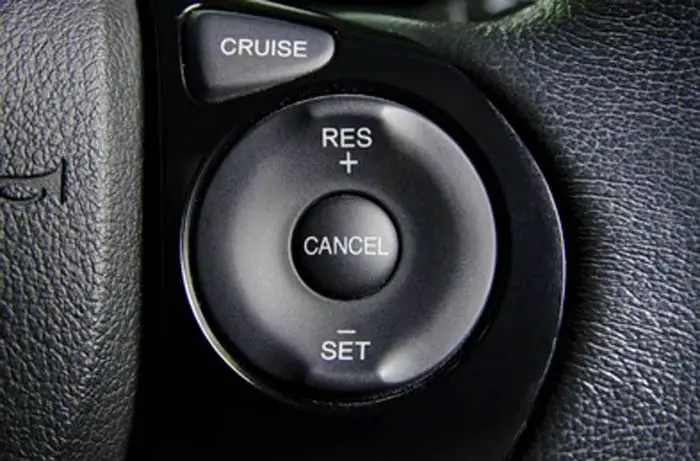
How Does Cruise Control Work: We Have The Best Answer
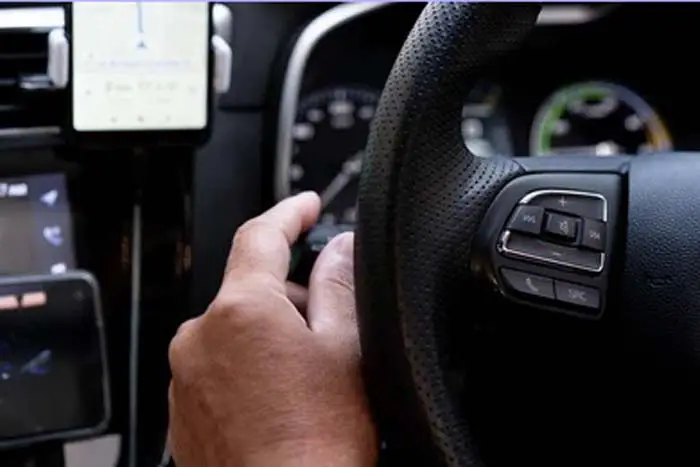
Advantages & Disadvantages Of Adaptive Cruise Control
Leave a comment cancel reply.
Your email address will not be published. Required fields are marked *
Save my name, email, and website in this browser for the next time I comment.
- More from M-W
- To save this word, you'll need to log in. Log In
Definition of cruise
(Entry 1 of 2)
intransitive verb
transitive verb
Definition of cruise (Entry 2 of 2)
- gad (about)
- galavant
- kick around
- knock (about)
Examples of cruise in a Sentence
These examples are programmatically compiled from various online sources to illustrate current usage of the word 'cruise.' Any opinions expressed in the examples do not represent those of Merriam-Webster or its editors. Send us feedback about these examples.
Word History
Dutch kruisen to make a cross, cruise, from Middle Dutch crucen , from crūce cross, from Latin cruc-, crux
1651, in the meaning defined at intransitive sense 1
1696, in the meaning defined above
Phrases Containing cruise
- booze cruise
- adaptive cruise control
- cruise missile
- cruise control
- radar cruise control
- cruise ship
- cruise liner
Dictionary Entries Near cruise
Cite this entry.
“Cruise.” Merriam-Webster.com Dictionary , Merriam-Webster, https://www.merriam-webster.com/dictionary/cruise. Accessed 19 Apr. 2024.
Kids Definition
Kids definition of cruise.
from Dutch kruisen "to cruise, move crosswise," from early Dutch crūce "cross," from Latin crux "cross" — related to cross , crucial
More from Merriam-Webster on cruise
Nglish: Translation of cruise for Spanish Speakers
Britannica English: Translation of cruise for Arabic Speakers
Subscribe to America's largest dictionary and get thousands more definitions and advanced search—ad free!

Can you solve 4 words at once?
Word of the day.
See Definitions and Examples »
Get Word of the Day daily email!
Popular in Grammar & Usage
Your vs. you're: how to use them correctly, every letter is silent, sometimes: a-z list of examples, more commonly mispronounced words, how to use em dashes (—), en dashes (–) , and hyphens (-), absent letters that are heard anyway, popular in wordplay, 10 words from taylor swift songs (merriam's version), a great big list of bread words, 10 scrabble words without any vowels, 12 more bird names that sound like insults (and sometimes are), 9 superb owl words, games & quizzes.


Cruise FAQs
What does cruise mean in a car.
Hey everyone on the road! Have you ever been curious about the true essence of cruise control in a vehicle? Gear up and prepare for an exciting journey as we explore the comprehensive details of this cool function.
In this article, I’ll be your trusty guide, shedding light on the history, inner workings, and benefits of cruise control.
So, sit back, relax, and let’s cruise through the fascinating world of car technology together!
Table of Contents
Key Takeaways
- Cruise control was introduced in the 1950s for maintaining steady speed on long trips.
- Cruise control provides convenience, reduces driver fatigue, and has had a significant impact on driving habits.
- Cruise control is activated by pressing a button on the steering wheel and sets the desired speed without continuous pressure on the accelerator pedal.
- There are different types of cruise control systems, including adaptive cruise control, traditional cruise control, and semi-autonomous driving features.
History of Cruise Control
Cruise control was first introduced in the 1950s to help drivers maintain a steady speed on long trips. The evolution of cruise control technology has come a long way since its inception.
Initially, it was a simple system that allowed drivers to set a desired speed, which the car would maintain automatically. Over the years, advancements in technology have made cruise control more sophisticated and adaptable to different driving conditions.
Today, cruise control systems can automatically adjust speed based on traffic conditions, using sensors to detect vehicles ahead. This technology has had a significant impact on driving habits, providing convenience and reducing driver fatigue on long journeys.
Transitioning into the next section, let’s explore how cruise control works.
How Cruise Control Works
To use cruise control in your vehicle, simply press the button on your steering wheel and set your desired speed. Once activated, cruise control maintains that speed without the need for continuous pressure on the accelerator pedal.
Here are three ways cruise control can benefit your driving experience:
Fuel Efficiency: Cruise control can help save fuel by maintaining a consistent speed, preventing unnecessary acceleration and deceleration. This steady speed reduces fuel consumption, resulting in improved fuel efficiency.
Reduced Fatigue: With cruise control, you can relax your foot and leg muscles, reducing fatigue during long drives. This allows you to stay focused on the road and enhances overall driving comfort.
Consistent Speed: Cruise control helps maintain a constant speed, preventing unintentional speed variation. This promotes safer driving behavior as it reduces the need for sudden braking or accelerating.
Benefits of Cruise Control
One of the benefits of using cruise control is that it helps reduce fatigue during long drives. When I activate cruise control, I can set the desired speed, allowing my foot to rest and reducing the strain on my leg muscles. This is especially advantageous when driving on highways or open roads where maintaining a constant speed is important.
Additionally, cruise control can help improve fuel efficiency by ensuring a consistent speed, which can lead to savings in the long run. However, it is important to note that there are also some disadvantages to using cruise control. For example, it can make it more difficult to respond quickly to unexpected situations on the road. It is crucial to remain alert and be prepared to take over control when necessary.
Nevertheless, understanding the advantages and disadvantages of cruise control is essential when considering its use. Transitioning into the next section, let’s explore the different types of cruise control systems available.
Types of Cruise Control Systems
When it comes to cruise control systems, there are several options to choose from.
One of the most advanced features is adaptive cruise control, which uses sensors to automatically adjust the speed of the vehicle to maintain a safe distance from the car ahead.
On the other hand, traditional cruise control allows the driver to set a specific speed that the car will maintain until manually turned off.
Additionally, there are semi-autonomous driving features that combine elements of both adaptive and traditional cruise control, providing a level of automation while still requiring driver attention.
Adaptive Cruise Control
Adaptive Cruise Control automatically adjusts the car’s speed to maintain a safe distance from the vehicle ahead. This feature uses sensors to detect the distance and speed of the vehicle in front of you. By doing so, it ensures that you maintain a constant speed while avoiding collisions.
Adaptive Cruise Control is an advanced version of traditional cruise control, adding an extra layer of safety and convenience. It allows you to set a desired speed and then automatically adjusts it to match the flow of traffic. This functionality is particularly useful in stop-and-go traffic situations, as the system will slow down or accelerate your vehicle as needed.
Now, let’s delve into the details of traditional cruise control and how it differs from its adaptive counterpart.
Traditional Cruise Control
To use traditional cruise control, you simply set your desired speed and let the system maintain it for you. Cruise control has a long history, dating back to the 1950s when it was first introduced by Chrysler. Initially, it was a mechanical system that used a throttle cable and vacuum to control the speed of the vehicle.
Over the years, cruise control systems have evolved, and now there are various types available. Some cars have a basic system that maintains a constant speed, while others have adaptive cruise control that can adjust the speed based on the distance to the vehicle ahead. These systems use sensors and radar technology to monitor the surrounding traffic.
With the advancements in technology, cruise control has paved the way for semi-autonomous driving features that offer even more convenience and safety on the road.
Semi-Autonomous Driving Features
Semi-autonomous driving features have revolutionized the way we interact with our vehicles. These advanced systems offer a range of benefits and capabilities that enhance both safety and convenience on the road. Here are five key aspects to consider:
- Improved safety: Semi-autonomous driving features can help prevent accidents by providing assistance with braking, steering, and maintaining a safe distance from other vehicles.
- Enhanced comfort: With features like adaptive cruise control, the vehicle can automatically adjust its speed to maintain a safe following distance, reducing driver fatigue and stress.
- Traffic assistance: Semi-autonomous systems can help navigate through heavy traffic by automatically adjusting the vehicle’s speed and keeping it within the lane.
- Limitations: Despite their advanced capabilities, semi-autonomous driving features still have limitations and require the driver’s attention and intervention when necessary.
- Integration with other systems: Cruise control can be integrated with other advanced driver assistance systems, such as lane-keeping assist and collision avoidance, for a more comprehensive driving experience.
Understanding the benefits and limitations of semi-autonomous driving features is essential to ensure safe and responsible use of these technologies.
Now, let’s address some common misconceptions about cruise control.
Common Misconceptions About Cruise Control
When it comes to cruise control functionality, it’s important to understand how this feature works in order to use it effectively.
Cruise control allows drivers to set a desired speed for their vehicle, which the car then maintains automatically.
However, there are potential safety risks associated with cruise control. For example, there’s the possibility of becoming too reliant on the feature and not paying enough attention to the road.
Cruise Control Functionality?
Have you ever wondered how cruise control works in your car? It’s a feature that can make long drives more comfortable and convenient. Cruise control allows you to set a desired speed and maintain it without having to keep your foot on the accelerator pedal. This can be especially useful on highways and open roads where the speed limit is consistent.
Let’s take a look at some advantages and disadvantages of using cruise control:
While cruise control offers convenience and can help reduce driver fatigue, it’s important to remember that it’s not a substitute for attentive driving. In the next section, we will explore potential safety risks associated with using cruise control.
Potential Safety Risks?
Keep in mind that using cruise control may pose potential safety risks that you should be aware of.
While cruise control can be a convenient feature, it is important to understand the potential risks and safety concerns associated with its usage.
One potential risk is the tendency to become less attentive while using cruise control, as the driver may rely too heavily on the system to maintain speed and forget to actively monitor the road.
Another concern is that cruise control may not be suitable for certain driving conditions, such as heavy traffic or slippery roads, where quick adjustments in speed are necessary.
Additionally, sudden changes in traffic patterns or unexpected obstacles may require immediate braking, which can be delayed when cruise control is engaged.
It is crucial to be mindful of these potential risks and exercise caution when using cruise control.
Now, let’s explore some tips for using cruise control effectively…
Tips for Using Cruise Control Effectively
To use cruise control effectively, you’ll want to make sure you maintain a consistent speed on the highway. Here are some tips for using cruise control and maintaining safe driving habits:
Pros and cons of using cruise control:
- Pros: Cruise control can reduce fatigue on long drives and help maintain a steady speed, improving fuel efficiency.
- Cons: It may lead to complacency and decrease driver alertness, especially in heavy traffic or adverse weather conditions.
Maintain a safe following distance: Cruise control should never be used in heavy traffic or congested areas. Always maintain a safe distance from the vehicle in front of you.
Be mindful of road conditions: Cruise control should not be used in inclement weather or on slippery roads. Always be prepared to disengage the system if necessary.
Stay focused and engaged: Cruise control is not a substitute for attentive driving. Always keep your hands on the wheel, eyes on the road, and be prepared to take control of the vehicle if needed.
By following these tips, you can use cruise control safely and effectively.
Now, let’s explore future developments in cruise control technology.
Future Developments in Cruise Control Technology
As I mentioned earlier, cruise control technology has come a long way in terms of efficiency and convenience. However, the future holds even more exciting advancements in store for this technology.
One of the key areas of development is the integration of cruise control with autonomous driving technology. This means that in the near future, cars equipped with cruise control will not only be able to maintain a constant speed, but also navigate and react to traffic conditions autonomously.
This integration will not only enhance the convenience and safety of cruise control, but also pave the way for fully autonomous vehicles. With advancements in artificial intelligence and sensor technology, we can expect to see more reliable and seamless integration between cruise control and autonomous driving systems, making our journeys even more comfortable and efficient.
Frequently Asked Questions
Are all cars equipped with cruise control.
Yes, most cars come equipped with cruise control, which allows drivers to set and maintain a desired speed without using the accelerator pedal. It can be beneficial for long distance driving, but there are also some drawbacks to consider.
Can Cruise Control Be Used in Any Driving Conditions?
Using cruise control in adverse weather conditions can reduce effectiveness and compromise safety. Additionally, relying too heavily on this feature can lead to decreased driver alertness. It’s important to stay attentive and adapt to changing road conditions.
Is It Safe to Use Cruise Control in Heavy Traffic?
In heavy traffic, using cruise control can have both pros and cons. It can help maintain a steady speed, reducing fatigue. However, it may not be able to react quickly to sudden changes, so it’s important to stay alert and ready to take control.
Can Cruise Control Save Fuel Consumption?
Using cruise control can save fuel consumption. For example, during highway driving, maintaining a consistent speed with cruise control can result in better fuel efficiency compared to constantly accelerating and decelerating manually.
Are There Any Disadvantages of Using Cruise Control?
There are some disadvantages of using cruise control, such as potential risks in adverse weather conditions. It’s important to be aware of these risks and use cruise control responsibly to ensure safety on the road.
In conclusion, cruise control has become an indispensable feature in modern cars, providing drivers with a convenient and efficient way to maintain a steady speed. Its history dates back several decades, and advancements in technology have led to various types of cruise control systems.
Despite common misconceptions, cruise control is a safe and reliable tool when used effectively. As future developments continue to enhance its capabilities, we can expect even more sophisticated cruise control technology in the years to come.

Alfons is the visionary leader and driving force behind Voyager Info’s success. As the Editor in Chief, he brings a wealth of experience and an unwavering passion for travel to the helm of our cruise-centric platform.
With a lifelong fascination for exploring new horizons, Alfons discovered his love for the ocean and cruising at a young age. From sailing across pristine Caribbean waters to embarking on daring expeditions to far-flung destinations, he has amassed a treasure trove of first-hand experiences in the world of cruising.
Where to Stay Before Cruise Fort Lauderdale
What Is a Cruise Missile

Alfons is the visionary leader and driving force behind Voyager Info’s success. As the Editor in Chief, he brings a wealth of experience and an unwavering passion for travel to the helm of our cruise-centric platform. With a lifelong fascination for exploring new horizons, Alfons discovered his love for the ocean and cruising at a young age. From sailing across pristine Caribbean waters to embarking on daring expeditions to far-flung destinations, he has amassed a treasure trove of first-hand experiences in the world of cruising.

You may like
When is dream cruise.
Wow, I’m honestly taken aback! Curious about when the dream cruise takes place? I’ve got you covered, friend. Planning the perfect dream cruise is far from simple. There are countless factors to consider, making it quite a complex endeavor. But fear not, for I am here to guide you every step of the way on this nautical adventure.
In this article, we will explore the key elements that will help you determine the best time to set sail on your dream cruise.
First and foremost, you’ll want to take the weather into account. Nobody wants to be caught in a stormy sea, am I right?
Researching cruise itineraries is also crucial, as it will give you a better understanding of the destinations and activities available.
And let’s not forget about planning around special events – who wouldn’t want to witness a breathtaking fireworks display while cruising under the starry night sky?
So, my friend, buckle up and get ready to embark on a journey of discovery. Because finding the perfect time for your dream cruise is just the first step towards creating memories that will last a lifetime.
- Dream cruises can be planned for any time of the year, but it is important to consider weather conditions and pack accordingly.
- Off-season destinations and lesser-known ports can provide a more tranquil experience and authentic cultural experiences.
- Themed cruises, such as culinary or music-themed cruises, offer luxury amenities and the opportunity to connect with like-minded individuals.
- Incorporating cultural events into the itinerary can add excitement and authenticity to the cruise experience.
Consider the Weather
When planning your dream cruise, you’ll want to consider the weather so you can envision yourself basking in the warm sun and feeling the gentle sea breeze on your face.
The weather plays a crucial role in determining what to pack for your trip and what activities you can plan.
If you’re heading to a tropical destination, pack your swimsuits, sunscreen, and beach towels, as you’ll likely spend a lot of time soaking up the sun and enjoying the crystal-clear waters.
On the other hand, if you’re going to a cooler climate, bring along some warmer clothing and jackets for those chilly evenings on deck.
Additionally, researching the weather patterns of your chosen cruise destinations will help you plan your activities accordingly.
For instance, if it’s known to rain frequently, you can schedule indoor activities like spa treatments or casino visits.
So, now that you have an idea about the weather, let’s move on to researching cruise itineraries.
Research Cruise Itineraries
If you’re planning a research cruise, you’ll be intrigued to know that there are numerous fascinating itineraries available. When researching cruise itineraries, it’s important to consider off-season destinations and explore lesser-known ports. Going to off-season destinations can provide a unique experience, as you’ll be able to avoid crowds and enjoy a more tranquil atmosphere.
Additionally, exploring lesser-known ports allows you to discover hidden gems and experience the local culture in a more authentic way. Whether you’re interested in remote islands, historic towns, or vibrant cities, there is a cruise itinerary that will suit your preferences. By venturing off the beaten path, you can create unforgettable memories and uncover new knowledge.
As you plan your cruise, it’s also essential to consider special events that may be taking place during your desired travel dates. This will ensure that you don’t miss out on any exciting experiences along the way.
Plan Around Special Events
When planning my dream cruise, I always make sure to consider any special events happening in the destinations I’ll be visiting. Attending festivals or celebrations adds a vibrant and immersive experience to my trip, allowing me to witness the local culture at its liveliest.
Additionally, taking advantage of themed cruises allows me to indulge in my personal interests, whether it’s a music-themed cruise, a culinary cruise, or even a wellness retreat at sea.
Lastly, incorporating cultural events into my itinerary ensures that I get a well-rounded experience, as I can explore art exhibitions, theater performances, or traditional ceremonies that showcase the unique heritage of each destination.
Attend Festivals or Celebrations
One of the best times to attend festivals or celebrations is during the Dream Cruise. This annual event takes place in August and attracts car enthusiasts from all over the world.
Not only can you witness the incredible display of classic cars along Woodward Avenue, but you can also attend parades that showcase these stunning vehicles. The atmosphere is electric, with music, food, and excitement filling the air.
As you wander through the streets, you’ll have the opportunity to explore local cuisine from various food vendors, offering a delicious array of options. From mouthwatering BBQ to delectable desserts, there’s something to satisfy every palate.
The Dream Cruise is an experience like no other, immersing you in the world of automotive history and culture. So, after attending this incredible event, why not take advantage of themed cruises to continue your adventure?
Take Advantage of Themed Cruises
After immersing myself in the world of automotive history and culture at the Dream Cruise, why not embark on themed cruises to further indulge in delightful experiences?
Themed cruises offer a unique and exciting way to explore different interests while enjoying all the amenities of a luxury cruise. One of the benefits of themed cruises is the opportunity to connect with like-minded individuals who share your passions.
Whether you’re a foodie, a music lover, or a fitness enthusiast, there are themed cruises available to suit every interest. From culinary cruises where you can taste exquisite dishes prepared by renowned chefs to music-themed cruises featuring live performances by top artists, the options are endless.
These themed cruises not only provide entertainment but also educational experiences, with expert speakers and workshops on board. So, why not incorporate cultural events into your itinerary and make your dream cruise an unforgettable adventure?
Incorporate Cultural Events into Your Itinerary
Immerse yourself in the vibrant local culture by incorporating cultural events into your itinerary, creating an unforgettable adventure. When planning your dream cruise, don’t miss out on the opportunity to experience the rich traditions and customs of the ports you’ll be visiting. By incorporating local cultural events into your schedule, you can truly immerse yourself in the essence of each destination. From festivals and parades to art exhibits and traditional performances, there’s something for everyone to enjoy. To give you an idea of what to expect, here’s a sample table showcasing some cultural events from popular cruise destinations:
Incorporating these local cultural events into your itinerary will add an extra layer of excitement and authenticity to your dream cruise. Now, let’s move on to the next step: avoiding peak travel times.
Avoid Peak Travel Times
To maximize savings and avoid crowds, it’s best to steer clear of peak travel times when planning your dream cruise. Did you know that cruise prices can be up to 50% higher during peak season?
To make the most of your trip, consider peak travel times and plan for ideal weather. Here are some things to keep in mind:
- Off-peak season offers lower prices and fewer people on board.
- Shoulder season allows you to enjoy good weather without the crowds.
- Research the cruise destinations to determine their peak and off-peak seasons.
- Consider booking your dream cruise during the weekdays to avoid the weekend rush.
- Be flexible with your travel dates to find the best deals.
By considering these factors, you can save money and have a more enjoyable experience on your dream cruise. Now, let’s move on to the next step and check for cruise line promotions.
Check for Cruise Line Promotions
Take a look at the various promotions offered by cruise lines to find enticing discounts and exclusive deals. Cruise line loyalty programs are a great way to save money, as they often provide special perks and discounted packages to repeat customers. These programs reward your loyalty with benefits such as room upgrades, onboard credits, and priority boarding. Additionally, many cruise lines offer limited-time promotions throughout the year, such as discounted fares or free amenities. It’s worth checking the cruise line’s website or signing up for their newsletter to stay updated on these promotions. By taking advantage of these offers, you can save a significant amount of money on your dream cruise. Now, let’s consider your budget and how to make your dream cruise a reality.
Consider Your Budget
After checking for cruise line promotions, it’s time to consider your budget for your dream cruise. Planning a cruise can be an exciting experience, but it’s important to determine how much you’re willing to spend before making any decisions.
Consider your preferences, such as the length of the cruise, the type of cabin you want, and any additional amenities you may desire. These factors can greatly impact the cost of your trip.
Create a budget that includes not only the cost of the cruise itself, but also any additional expenses such as airfare, transportation to and from the port, excursions, and onboard activities.
By planning your itinerary and considering your budget, you can ensure that your dream cruise is not only enjoyable but also affordable.
Now, let’s dive into the next step and research cruise lines and ships.
Research Cruise Lines and Ships
When researching cruise lines and ships, it’s important to read reviews and ratings from previous passengers. This will give you a better understanding of the overall experience and customer satisfaction.
Additionally, it’s crucial to consider the amenities and activities offered on board to ensure they align with your preferences and interests.
Lastly, look for cruise lines that cater to your specific interests, such as adventure, relaxation, or family-friendly options.
By taking all these factors into account, you can make an informed decision and find the perfect cruise line and ship for your dream vacation.
Read Reviews and Ratings
Experience the enchantment of Dream Cruise through the mesmerizing reviews and ratings, allowing yourself to be transported to a realm of awe and wonder.
Reading reviews and ratings is an essential step in planning your dream cruise. It provides valuable insights into the experiences of previous passengers and helps you make an informed decision.
Not only can you learn about the ship’s amenities and activities, but you can also gain insight into the quality of service, entertainment options, and dining experiences.
Additionally, reviews often mention weather considerations and provide tips for making the most of your itinerary. By delving into these reviews, you can uncover hidden gems and avoid potential pitfalls.
Now, let’s consider the amenities and activities offered, enhancing your cruise experience to new heights.
Consider the Amenities and Activities Offered
Immerse yourself in a world of endless possibilities as you discover the luxurious amenities and exhilarating activities that await you on your journey.
When it comes to amenities, it’s important to compare what different cruise lines have to offer. Some may have state-of-the-art fitness centers, while others may boast extravagant spas where you can indulge in ultimate relaxation. Take a look at the dining options available too. From gourmet restaurants to casual buffets, there is something to satisfy every palate.
As for activities, the choices are abundant. Whether you’re seeking thrilling water sports, engaging entertainment shows, or educational enrichment programs, cruise lines have it all. From morning till night, there is never a dull moment on board.
So, as you consider the amenities and activities available, remember to look for cruise lines that cater to your interests, ensuring an unforgettable experience.
Look for Cruise Lines That Cater to Your Interests
Discover a world of endless possibilities by finding cruise lines that perfectly cater to your interests, allowing you to indulge in unforgettable moments tailored just for you.
When choosing a cruise, consider the themed cruise options available. Whether you’re a foodie, an adventure seeker, or a history buff, there are cruise lines that offer specialized experiences to match your passions.
Immerse yourself in unique cultural experiences, such as wine tastings in Italy, salsa dancing in Cuba, or exploring ancient ruins in Greece. These themed cruises provide a deeper level of engagement and allow you to connect with like-minded individuals who share your interests.
By selecting a cruise line that aligns with your hobbies and preferences, you can ensure that your dream cruise will be an extraordinary journey.
So, when considering your travel companions, think about how their interests align with yours to create an unforgettable experience for everyone involved.
Consider Your Travel Companions
When planning your dream cruise, it’s important to consider who you’ll be traveling with. Different cruise ship options cater to different types of travelers, so it’s essential to choose a cruise line that offers activities and amenities that suit your travel companions.
If you’re traveling with your family, look for cruise lines that provide family-friendly activities such as kids’ clubs, water parks, and age-appropriate entertainment. Some cruise lines even offer babysitting services, allowing parents to enjoy some alone time.
On the other hand, if you’re traveling with friends or as a couple, you might prefer a cruise line that offers more adult-oriented activities like nightlife, casinos, and specialty dining options.
Keep in mind that being flexible with your travel dates can also open up more options for your dream cruise, allowing you to take advantage of special promotions or find the perfect itinerary.
Be Flexible with Your Travel Dates
When it comes to planning a dream cruise, being flexible with your travel dates can make all the difference.
One key point to consider is looking into shoulder season cruises, which are often less crowded and more affordable.
Another option is to keep an eye out for repositioning cruises, where ships are moved to different regions and offer discounted rates.
Lastly, being open to last-minute changes can lead to great deals and unexpected adventures.
So, don’t be afraid to adjust your travel dates and embrace the excitement of a flexible cruise itinerary.
Consider Shoulder Season Cruises
If you’re planning a cruise, you might want to consider booking during the shoulder season for Dream Cruise. This is the time between the peak and off-peak seasons when you can enjoy several benefits.
Firstly, you’ll experience fewer crowds, which means shorter lines and more personal attention from the staff. Secondly, the weather is generally milder during the shoulder season, making it more comfortable for outdoor activities and excursions. Lastly, you can often find better deals and discounts during this time, saving you money on your Dream Cruise vacation.
When it comes to the best destinations for shoulder season cruises, popular choices include the Mediterranean, Alaska, and the Caribbean. These regions offer beautiful scenery, cultural experiences, and a variety of activities to suit every traveler’s interests.
So, if you want to make the most of your Dream Cruise, consider booking during the shoulder season and enjoy all these benefits.
Look for Repositioning Cruises
Repositioning cruises offer a unique opportunity to explore different destinations while enjoying the benefits of a cruise experience. But have you ever considered the cost savings they provide? These cruises typically occur when cruise lines move their ships from one region to another, such as from the Caribbean to Europe or Alaska to the Caribbean. This means that passengers can enjoy a variety of ports of call during the journey.
Booking repositioning cruises early is key, as they tend to fill up quickly due to their popularity. By planning ahead, you can secure the best cabins and take advantage of any early bird promotions. However, it’s important to be open to last-minute changes. Cruise itineraries may be subject to adjustments depending on weather conditions or unforeseen circumstances.
Transitioning into the next section, it’s important to be flexible and adaptable when considering a repositioning cruise.
Be Open to Last-Minute Changes
Stay flexible and embrace the unexpected twists and turns that may come your way, as being open to last-minute changes can lead to unique and thrilling experiences during your journey. Planning for a dream cruise is exciting, but it’s important to remember that sometimes things don’t go as planned.
Here are a few reasons why being open to last-minute changes can enhance your cruise experience:
You may discover a hidden gem: By being flexible with your itinerary, you might stumble upon a lesser-known port of call or an off-the-beaten-path attraction that turns out to be the highlight of your trip.
Avoiding bad weather: Weather conditions can change quickly, and being open to adjusting your plans can help you avoid sailing into rough seas or torrential downpours.
Unexpected opportunities: Last-minute changes can lead to unexpected opportunities like upgraded accommodations or unique shore excursions.
By staying open to last-minute changes, you can make the most of your dream cruise.
Now, let’s discuss how consulting with a travel agent can further enhance your planning process.
Consult with a Travel Agent
When it comes to planning a dream cruise, consulting with a travel agent can be incredibly beneficial.
Not only can they provide expert advice and recommendations, but they also have insider knowledge that can help you make the most of your trip.
Plus, letting someone else handle the planning and booking process takes a huge weight off your shoulders, allowing you to focus on the excitement of your upcoming adventure.
Get Expert Advice and Recommendations
For a truly enchanting experience, let the experts guide you and offer their recommendations on your dream cruise. When it comes to planning the perfect voyage, expert opinions can make all the difference.
Here are three recommended destinations that will take your breath away:
The crystal-clear waters of the Caribbean: Immerse yourself in the vibrant culture, stunning beaches, and incredible snorkeling opportunities in destinations like the Bahamas, Jamaica, and the Virgin Islands.
The majestic fjords of Norway: Sail through dramatic landscapes of towering cliffs, cascading waterfalls, and picturesque villages. Experience the midnight sun or chase the awe-inspiring Northern Lights.
The exotic wonders of Southeast Asia: Discover the vibrant markets, ancient temples, and breathtaking landscapes of countries like Thailand, Vietnam, and Indonesia. Explore bustling cities, tranquil beaches, and lush rainforests.
By taking advantage of insider knowledge and expert recommendations, you can ensure that your dream cruise is an unforgettable journey of discovery.
Take Advantage of Insider Knowledge
Experience the magic of hidden gems and secret spots with insider knowledge, making your voyage an extraordinary adventure. When it comes to planning your dream cruise, having access to insider tips can truly enhance your experience. Whether it’s finding the best snorkeling spots in the Caribbean or discovering the hidden local markets in Mediterranean ports, insider knowledge can take your trip to the next level. To give you a taste of what awaits you, here are a few hidden gems you can uncover during your dream cruise:
These are just a few examples, but there are countless more waiting to be discovered. So, let someone else handle the planning and booking process, and get ready to embark on an unforgettable journey filled with hidden gems and insider tips.
Let Someone Else Handle the Planning and Booking Process
Let someone else take care of all the planning and booking for you, so you can relax and enjoy your vacation to the fullest. Imagine having a personal travel concierge who can handle everything from finding the best flights and accommodations to arranging unique experiences and activities tailored to your interests.
When considering different travel destinations for your dream cruise, a travel agency can provide valuable insight and recommendations based on their expertise and knowledge. They can help you navigate through the various options available, taking into consideration factors such as your budget, preferred travel dates, and desired itinerary.
One of the benefits of using a travel agency is that they have access to exclusive deals and discounts that you may not be able to find on your own. They can also save you time and effort by handling all the necessary paperwork and ensuring that everything is in order for your trip.
With a travel agency by your side, you can have peace of mind knowing that all the details of your dream cruise are taken care of, allowing you to simply relax and enjoy your vacation.
What are the top cruise lines for dream cruises?
The top luxury cruise lines for dream cruises include Regent Seven Seas, Crystal Cruises, and Seabourn. For the best family-friendly experience, consider Royal Caribbean, Disney Cruise Line, and Carnival Cruise Line.
Are there any specific events or festivals that I should plan my dream cruise around?
To truly have the dream cruise experience, it’s essential to plan around specific events and festivals. From the vibrant Carnival in Rio de Janeiro to the enchanting Venice Film Festival, these moments will make your book dream cruise truly unforgettable.
How can I find the best deals or promotions for dream cruises?
To find the best deals and promotions for dream cruises, I recommend researching online travel agencies, signing up for cruise line newsletters, and checking social media for exclusive discounts. Booking in advance and being flexible with your travel dates can also help you secure great discounts.
Are there any specific cruise ships known for offering exceptional dream cruise experiences?
When it comes to luxury cruise ships and dream cruise destinations, there are a few that stand out. Ships like the Symphony of the Seas and the Celebrity Edge offer exceptional experiences that will leave you in awe.
Is it better to book a dream cruise directly with the cruise line or through a travel agent?
Booking a dream cruise directly with the cruise line or through a travel agent? While booking options vary, there are clear advantages to using a travel agent. They provide expertise, personalized service, and can often secure exclusive deals and perks.
After considering the weather, researching itineraries, and planning around special events, I finally booked my dream cruise.
I was able to snag a great deal during a cruise line promotion and chose a ship that had rave reviews.
As I set sail with my loved ones, the anticipation grew.
The moment we stepped foot on the ship, it felt like we were entering a magical world, full of adventure and relaxation.
It was truly a dream come true, an experience that felt like floating on clouds.

Claire, a creative soul with an unquenchable thirst for storytelling, is an integral part of the Voyager Info team. As a dedicated writer, she weaves captivating narratives that transport readers to enchanting cruise destinations and beyond.
Claire’s love affair with writing began at an early age when she discovered the magic of words and their ability to craft worlds and emotions. Her innate curiosity led her to explore various literary genres, but it was travel writing that truly captured her heart. Drawing inspiration from her own globetrotting adventures and encounters with diverse cultures, Claire embarked on a journey to become a travel writer par excellence.
Luxury Voyage to Historic Havana: Regent Seven Seas Sets Sail
Uncover the ultimate blend of luxury and history aboard Regent Seven Seas to Havana – an experience like no other awaits.
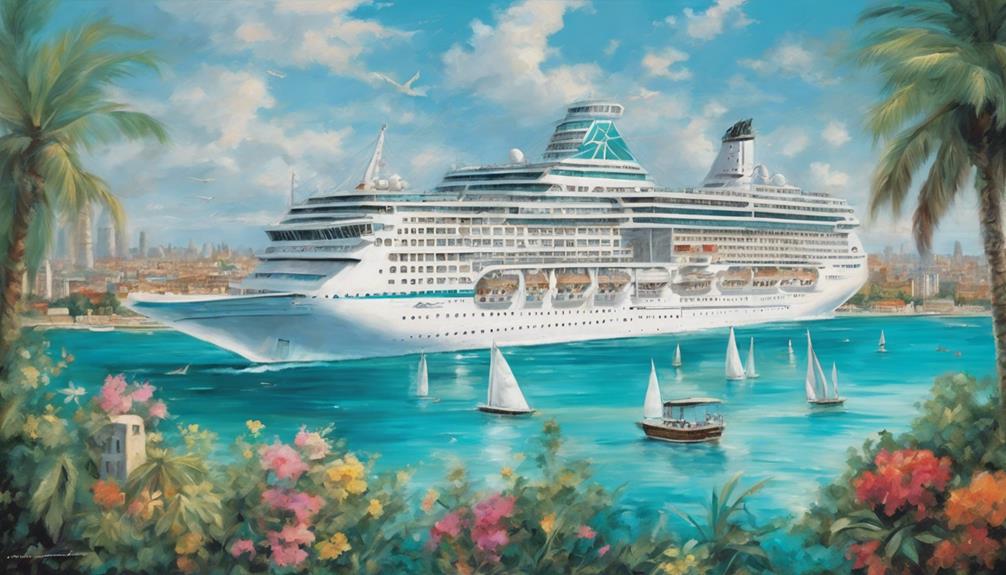
Embark on a luxurious journey back in time with Regent Seven Seas as we set sail to the enchanting city of Havana. The allure of this historic destination combined with the unparalleled luxury onboard Seven Seas Mariner promises an unforgettable experience.
From the moment you step aboard, a world of opulence and discovery awaits. But what truly sets this voyage apart? A blend of modern comfort and timeless elegance that…
- Lavish suites with personalized butler service
- Cultural immersion in Havana's music, cuisine, and art
- Upscale farm-to-table dining with Cuban flavors
- Exclusive itinerary with overnight stays in iconic ports
Exclusive Regent Seven Seas Itinerary Highlights
Embarking on our exclusive Regent Seven Seas itinerary, we're treated to a carefully crafted journey that unveils the rich tapestry of Cuba through four captivating ports of call, including three unforgettable overnight stays in Havana, Santiago de Cuba, and Cienfuegos.
The luxury cruise experience immerses us in the heart of Cuban culture with expert-designed shore excursions that delve into the country's history, arts, and vibrant traditions. In Havana, we explore iconic landmarks like the historic Malecón and the charming streets of Old Havana, where every corner tells a story of the city's past.
Our adventures in Santiago de Cuba take us to the formidable Castillo de San Pedro de la Roca and treat us to the soul-stirring rhythms of live Cuban music at the renowned Iris Jazz Club. Each moment on this journey is a celebration of freedom, where we embrace the spirit of Cuba through its music, art, and warm hospitality.
Unparalleled Luxury Accommodations on Board
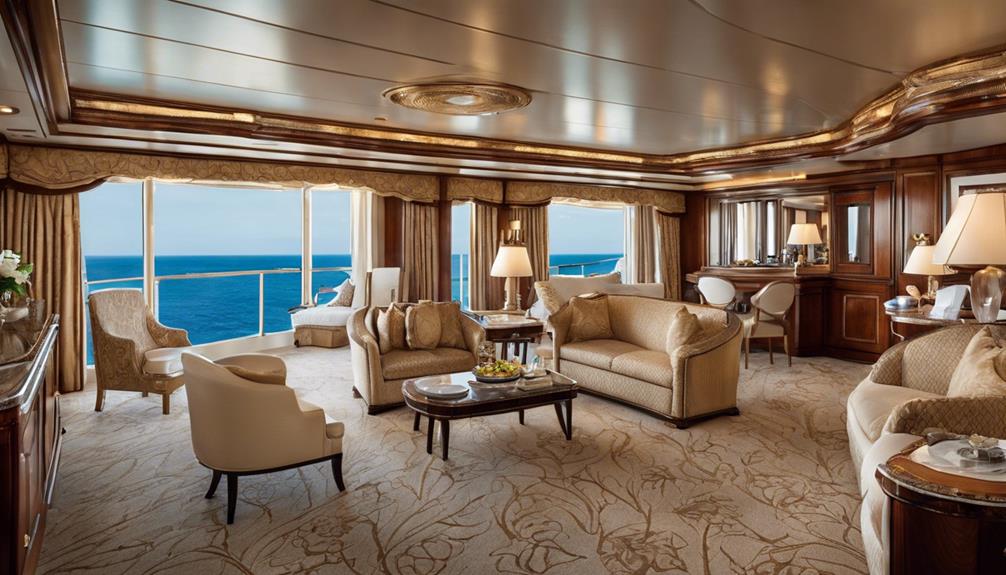
Indulge in unparalleled luxury aboard Regent Seven Seas Cruises, where guests are treated to spacious suites adorned with lavish amenities and personalized butler service. The accommodations on board are designed to provide the utmost comfort and extravagance, ensuring a truly indulgent experience for all passengers. Each suite boasts premium bedding, marble bathrooms, and stunning ocean views, creating a serene oasis at sea. The elegant public spaces, including chic lounges and a sophisticated theater, offer the perfect settings for relaxation and entertainment.
To highlight the luxurious accommodations further, here is a breakdown in a table format:
Embark on a journey where luxury meets comfort, and every detail is meticulously crafted to provide an unforgettable and seamless voyage.
Authentic Cuban Cultural Experiences
As we immerse ourselves in the vibrant culture of Havana, guests aboard Regent Seven Seas Cruises are presented with authentic Cuban experiences that showcase the rich heritage and artistic essence of this captivating city.
Witness live music performances and cabaret shows that pulsate with the rhythms of Cuba, immersing you in the soulful melodies that define the island's musical legacy.
Indulge in farm-to-table cuisine at Havana's newest restaurants, savoring the vibrant fusion of flavors that reflect the local culinary traditions and ingredients unique to Cuba.
Immerse yourself in the art of traditional rum and cigar making, discovering the craftsmanship and history behind these iconic Cuban exports, offering a glimpse into the country's storied past and present.
Embark on a journey through Havana's art scene, historical structures, colonial architecture, and Cuban heritage sites, where each step unravels the layers of this city's rich tapestry, inviting you to explore, engage, and connect with the authentic essence of Cuba.
Gourmet Dining and Culinary Delights
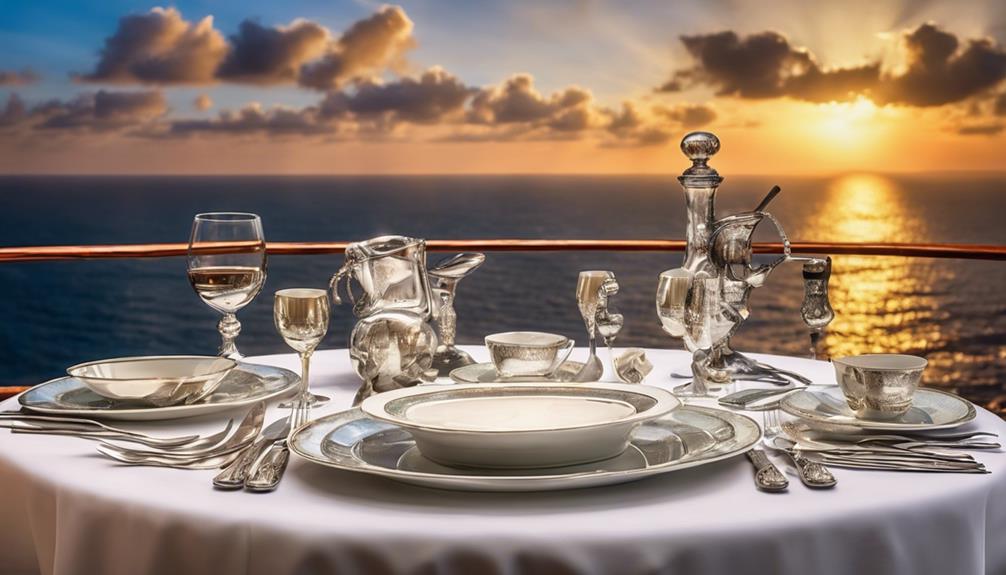
Our luxury voyage to historic Havana introduces guests to a world of exquisite gourmet dining and culinary delights, elevating the experience with upscale farm-to-table cuisine and expertly crafted menus showcasing local flavors and ingredients. Onboard the Regent Seven Seas Cruises, guests can indulge in traditional Cuban dishes and fine wines at exclusive restaurants, immersing themselves in a gastronomic journey through the vibrant flavors of Cuba. The cruise line offers a variety of gourmet dining options, including specialty restaurants with diverse menus to cater to every palate and preference.
Guests can embark on a culinary adventure with immersive dining experiences, savoring the rich heritage of Cuba through flavorful dishes and engaging demonstrations. This luxury voyage promises not only a feast for the senses but also an unforgettable exploration of Cuban culinary traditions.
Premium Excursions and Onshore Activities
Embark on meticulously curated Cuban shore excursions designed by Regent Seven Seas for a comprehensive exploration of the vibrant history and culture of Havana. When venturing on these exclusive experiences, guests can expect:
- Immersive Museum Tours: Dive into Cuba's rich past with guided visits to renowned museums, where each artifact tells a story of the island's fascinating heritage.
- Historical Site Discoveries: Walk in the footsteps of history as you explore iconic landmarks and hidden gems, uncovering the layers of Havana's captivating narrative.
- Engaging Local Art Experiences: Delight your senses with authentic engagement in Cuba's local art scene, meeting talented artists and witnessing the creativity that defines this vibrant culture.
With expert guest lecturers onboard to provide valuable insights and context, these premium excursions and onshore activities truly enhance the luxury cruise experience in historic Havana. From the moment you step off the ship, a world of discovery and adventure awaits, promising a journey filled with meaningful connections and unforgettable moments.
Is Regent Seven Seas a Luxury Cruise Line?
Yes, Regent Seven Seas is a luxury cruise line. We offer upscale accommodations, gourmet dining, and personalized service. Indulge in fine wines, spirits, and exclusive cultural activities. Our focus is on creating intimate, personalized experiences.
What Is the Average Age of Regent Seven Seas Cruises?
The average age of guests on Regent Seven Seas Cruises is typically 50 years and older. Many are experienced travelers seeking luxury experiences. The cruise line caters to affluent travelers who appreciate all-inclusive luxury and personalized service.
Where Does Regent Seven Seas Sail?
We sail to diverse destinations, from vibrant cities to secluded islands. Our ships navigate crystal waters, unveiling new horizons. Regent Seven Seas offers a gateway to unparalleled luxury and adventure, where every voyage is a tale to remember.
How Much Is the Regent Seven Seas Cruise?
The Regent Seven Seas Cruise offers an all-inclusive experience starting at $5,499 per person. The package includes airfare, transfers, dining, Wi-Fi, and unlimited shore excursions. Indulge in upscale dining, fine wines, and spirits for a luxurious voyage.
As we sail away from the colorful streets of Havana, we can't help but feel grateful for the unforgettable experiences we've shared.
From savoring exquisite Cuban cuisine to exploring historical landmarks, this luxury voyage with Regent Seven Seas has truly exceeded all expectations.
It's amazing how a journey can bring strangers together and create lasting memories.
Thank you, Havana, for a magical adventure we'll always cherish.
What Cruise Ship Is In San Francisco Today

Standing on the vibrant shores of San Francisco, gazing out at the magnificent bay, excitement washes over me. Today, a majestic cruise ship is set to make its grand entrance into this celebrated port.
The excitement is palpable as locals and visitors alike eagerly await the arrival of this floating wonder. What ship will grace our shores today? What stories will it carry, and what adventures await those lucky enough to step aboard?
As the day unfolds, we will uncover the answers to these questions and more. Join me on a virtual voyage through the bay, as we discover the latest cruise ship arrivals, learn about their magnificent vessels, and get insider information on the luxurious amenities they offer.
Whether you’re a seasoned cruiser or dreaming of your first voyage, this article will be your guide to the world of cruise ships in San Francisco. So, let’s set sail and embark on this thrilling journey together.
- Stay updated on future cruise ship arrivals.
- Visit the official port authority website.
- Subscribe to their newsletter.
- Stay informed about upcoming cruise ship itineraries.
Explore the Iconic Port of San Francisco
Take a stroll along the bustling waterfront and witness the majestic cruise ships that grace the iconic port of San Francisco today.
As you explore the local attractions, you’ll experience the vibrant culture that makes this city so unique.
Start your day by visiting the famous Fisherman’s Wharf, where you can indulge in fresh seafood and enjoy breathtaking views of the bay.
Continue your journey to Pier 39, a lively spot filled with shops, restaurants, and entertainment.
Don’t forget to check out the historic Alcatraz Island, which offers a fascinating glimpse into the city’s past.
After immersing yourself in the local attractions, it’s time to discover the latest cruise ship arrivals and embark on your own adventure at sea.
Discover the Latest Cruise Ship Arrivals
Hop aboard and explore the exciting lineup of new arrivals docking in the stunning Bay Area! Get ready to embark on a virtual reality cruise like no other. Step behind the scenes and discover the latest cruise ships to grace the San Francisco port. Immerse yourself in the breathtaking beauty of the Bay as you virtually tour these magnificent vessels.
To enhance your experience, we have prepared a handy table to help you navigate through the information. Take a look:
With virtual reality cruises and a behind-the-scenes tour, you can experience the wonders of these ships from the comfort of your own home. So, get ready to take a virtual voyage through the bay and uncover the secrets of the cruising world.
Take a Virtual Voyage Through the Bay
Imagine yourself gliding through the calm waters of the Bay, the sun casting a golden glow on the iconic Golden Gate Bridge, as you embark on a virtual voyage that unveils the hidden treasures of this captivating destination. With our virtual reality tour, you can explore the historical landmarks that have shaped San Francisco’s rich maritime history.
Feel the excitement as you virtually step onto the Alcatraz Island, home to the infamous prison that once held notorious criminals.
Experience the grandeur of the Palace of Fine Arts, a stunning architectural masterpiece that transports you to a different era.
Marvel at the intricate details of the Coit Tower, a prominent landmark offering panoramic views of the city’s skyline.
As you immerse yourself in this digital journey, get ready to learn about the magnificent vessels that have graced San Francisco’s shores.
Learn About the Magnificent Vessels
Get ready to explore the fascinating world of the magnificent vessels that have graced the shores of the Bay. As you delve into their rich history and discover the secrets they hold, you will find that these majestic ships are not only marvels of engineering but also symbols of human ingenuity and adventure.
As you embark on this virtual voyage, you will have the opportunity to explore ship architecture and learn about maritime history. From the sleek lines of the modern cruise ships to the elegant design of the historic sailing vessels, each ship tells a unique story.
Discover the innovations that have shaped the maritime industry and gain a deeper understanding of the incredible feats achieved by these floating giants. Now, let’s dive into the next section and get insider information on ship amenities.
Get Insider Information on Ship Amenities
Visitors can indulge in a variety of luxurious amenities on board, such as relaxing in the spa, savoring exquisite cuisine in the gourmet restaurants, or enjoying live entertainment in the vibrant theaters.
But the ship offers much more than just these indulgences. Guests can also explore ship itineraries, allowing them to embark on exciting adventures and visit breathtaking destinations. From tropical getaways to cultural expeditions, there’s something for everyone.
Additionally, the onboard accommodations are designed to provide comfort and elegance. With spacious cabins, plush bedding, and stunning views, guests can unwind and recharge in style. Whether you prefer a cozy interior room or a lavish suite, there are options to suit every preference.
So, as you learn about onboard accommodations, get ready to find out about onboard entertainment and activities that’ll keep you entertained throughout your cruise.

Find Out About Onboard Entertainment and Activities
Discover the endless array of entertainment options and thrilling activities that await you onboard. Here are three exciting ways to make the most of your time on the cruise ship:
Live Shows: Immerse yourself in captivating performances by talented musicians, dancers, and comedians. From Broadway-style productions to stand-up comedy, there’s something for everyone to enjoy.
Poolside Fun: Lounge by the pool and soak up the sun while enjoying live music or participating in poolside games and contests. Whether you prefer relaxing or being part of the action, the pool area offers entertainment for all.
Adventure Activities: Get your adrenaline pumping with thrilling onboard activities like rock climbing, zip-lining, or surfing. Channel your inner adventurer and embark on a unique experience that will leave you with unforgettable memories.
As you explore the onboard entertainment and activities, you’ll surely work up an appetite. Now, let’s dive into learning about the dining options on board.
Learn About Dining Options on Board
Indulge in a wide variety of delectable dining options that will satisfy your taste buds and leave you craving for more. Onboard our cruise ship, we offer a diverse range of dining experiences to suit every palate. From elegant fine dining restaurants to casual buffet-style eateries, you’ll find something to satisfy your appetite at any time of day. Our dining venues showcase specialty cuisines from around the world, allowing you to embark on a culinary journey without leaving the ship. Whether you’re in the mood for Italian, Asian, or classic American dishes, our talented chefs will create mouthwatering meals that will delight your senses.
To give you a glimpse of our dining options, here’s a table showcasing some of our venues:
When dining on our cruise ship, it’s important to observe dining etiquette to ensure a pleasant experience for everyone. Dress code and table manners are typically followed, creating a refined atmosphere.
After enjoying our delicious dining options, get ready to discover exciting shore excursions that will enhance your cruise experience.
Discover Exciting Shore Excursions
Prepare yourself for an unforgettable adventure as you explore the thrilling shore excursions awaiting you during your cruise experience. Embark on a journey to discover exciting shore excursions that will take you to popular tourist attractions.
Explore the vibrant city of San Francisco with a guided tour of the iconic Golden Gate Bridge, where you can capture stunning panoramic views of the city and the bay.
Immerse yourself in the beauty of Alcatraz Island with a visit to the historic prison that housed some of America’s most notorious criminals.
These shore excursions offer an opportunity to delve deeper into the culture and history of the destinations you visit. From picturesque landscapes to fascinating landmarks, each excursion promises a unique experience.
As you wrap up your exploration of shore excursions, get ready to learn valuable tips on booking your own cruise experience.
Get Tips on Booking Your Own Cruise Experience
Before you embark on your own unforgettable adventure, take note of these valuable tips for booking an incredible cruise experience.
When it comes to finding the best cruise deals, timing is key. Keep an eye out for special promotions and discounts offered by cruise lines during off-peak seasons or last-minute bookings.
Additionally, consider booking through a reputable travel agent who can provide expert advice and access to exclusive deals.
As for packing for a cruise vacation, make sure to bring essentials such as sunscreen, comfortable clothing, and swimwear. Don’t forget to check the cruise line’s dress code to pack appropriate attire for formal nights or themed events.
Lastly, stay updated on future cruise ship arrivals by visiting the official port authority website or subscribing to their newsletter. This will ensure you’re always in the know about the next exciting ship to dock in San Francisco.
Stay Updated on Future Cruise Ship Arrivals
Stay in the loop about upcoming cruise ship arrivals by subscribing to the port authority’s newsletter, so you can stay as informed as a seasoned traveler with a personal concierge.
The newsletter provides valuable information about future cruise ship itineraries, ensuring that you don’t miss out on any exciting opportunities.
Whether you’re dreaming of sailing through the Caribbean or exploring the majestic Alaskan wilderness, the newsletter keeps you updated on all the latest cruise options.
Planning a cruise vacation can be overwhelming, but with the newsletter’s tips and suggestions, you’ll feel like a pro.
From choosing the perfect cabin to booking shore excursions, the newsletter provides valuable insights that will make your cruise experience unforgettable.
So, don’t miss out on any upcoming cruise ship arrivals and subscribe to the port authority’s newsletter today.
How much does it cost to book a cruise experience in San Francisco?
Booking a cruise experience in San Francisco can vary in cost depending on factors such as cruise line, duration, and cabin type. To find the best price, it’s recommended to compare costs and consider booking during off-peak seasons.
What are the specific dining options available on board the cruise ship in San Francisco?
The best dining recommendations in San Francisco include a variety of options from seafood to farm-to-table cuisine. Popular food trends in cruise ship dining feature innovative menus, diverse flavors, and a focus on fresh, local ingredients.
Can I bring my own food and drinks on board the cruise ship in San Francisco?
Absolutely! You can bring your own food and drinks on board. However, please note that alcohol is not allowed. The cruise ship also accommodates dietary restrictions, ensuring a delightful dining experience for everyone.
Are there any age restrictions for participating in shore excursions in San Francisco?
There are age restrictions for participating in shore excursions in San Francisco, but there are plenty of family-friendly activities available for cruise ship passengers.
How can I stay updated on future cruise ship arrivals in San Francisco?
To stay updated on upcoming cruise ship events in San Francisco, I recommend checking the Port of San Francisco’s official website or subscribing to their newsletter. They provide information on the best viewing spots for cruise ship arrivals.
So if you’re looking for a thrilling adventure on the high seas, San Francisco is the place to be! With its iconic port and a constant flow of magnificent cruise ships, there’s never a dull moment.
From the comfort of your own home, you can take a virtual voyage through the bay and marvel at the beauty of these vessels. With insider information on ship amenities and dining options, you’ll feel like you’re part of the experience.
Don’t miss out on the exciting shore excursions and be sure to stay updated on future cruise ship arrivals. It’s a journey unlike any other, like sailing into a sunset painted with dreams.
Affiliate disclaimer
As an affiliate, we may earn a commission from qualifying purchases. We get commissions for purchases made through links on this website from Amazon and other third parties.

Choosing a Ship Name: Importance, Controversy, and Considerations
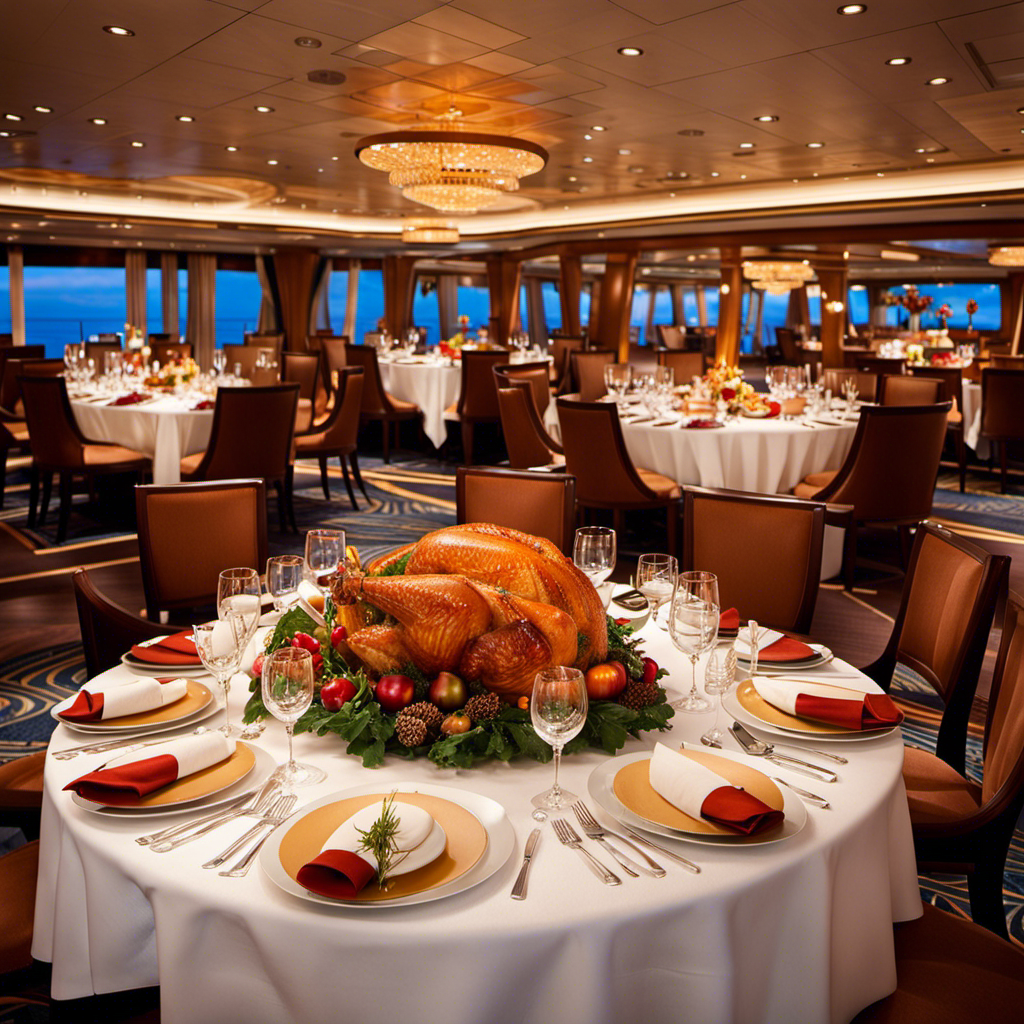
Cruise Line Thanksgiving Recipes for a Memorable Feast
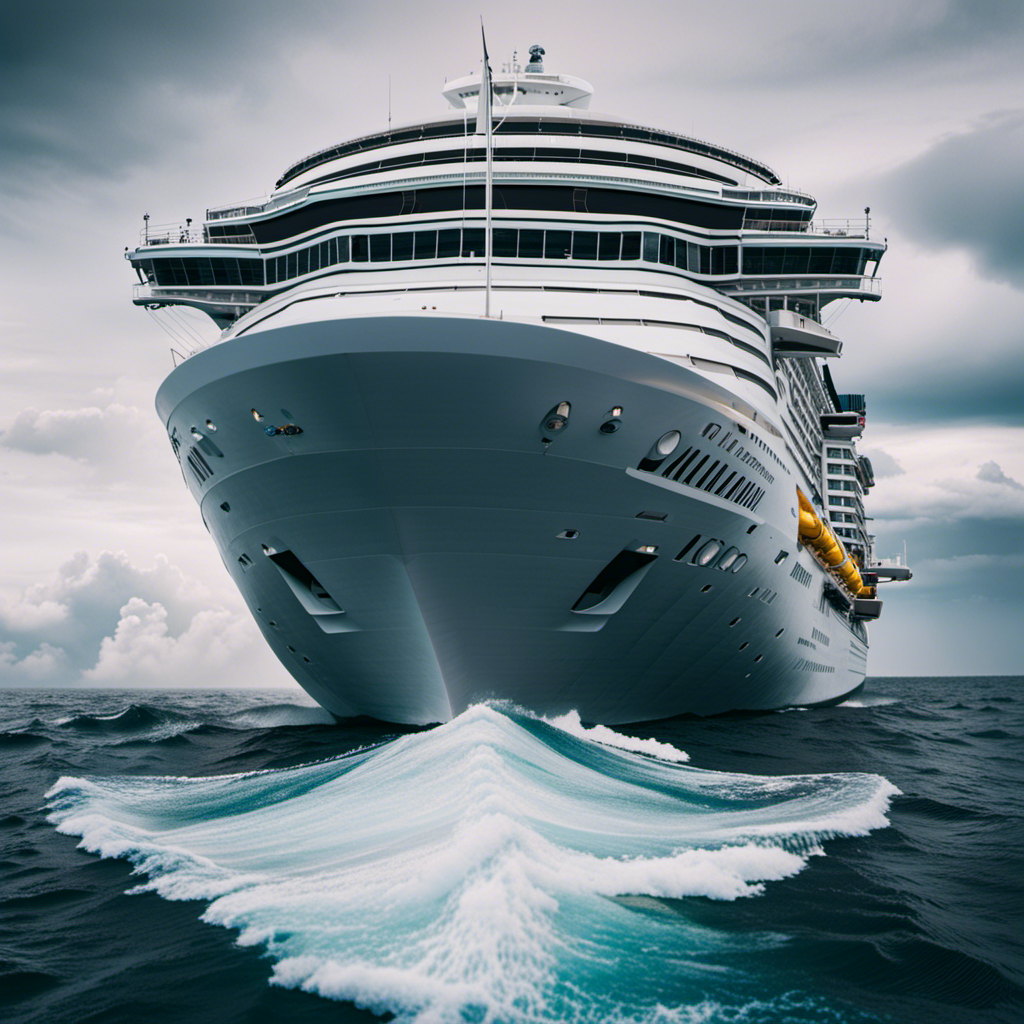
CDC’s Four-Step Plan: Navigating Challenges for Cruise Lines
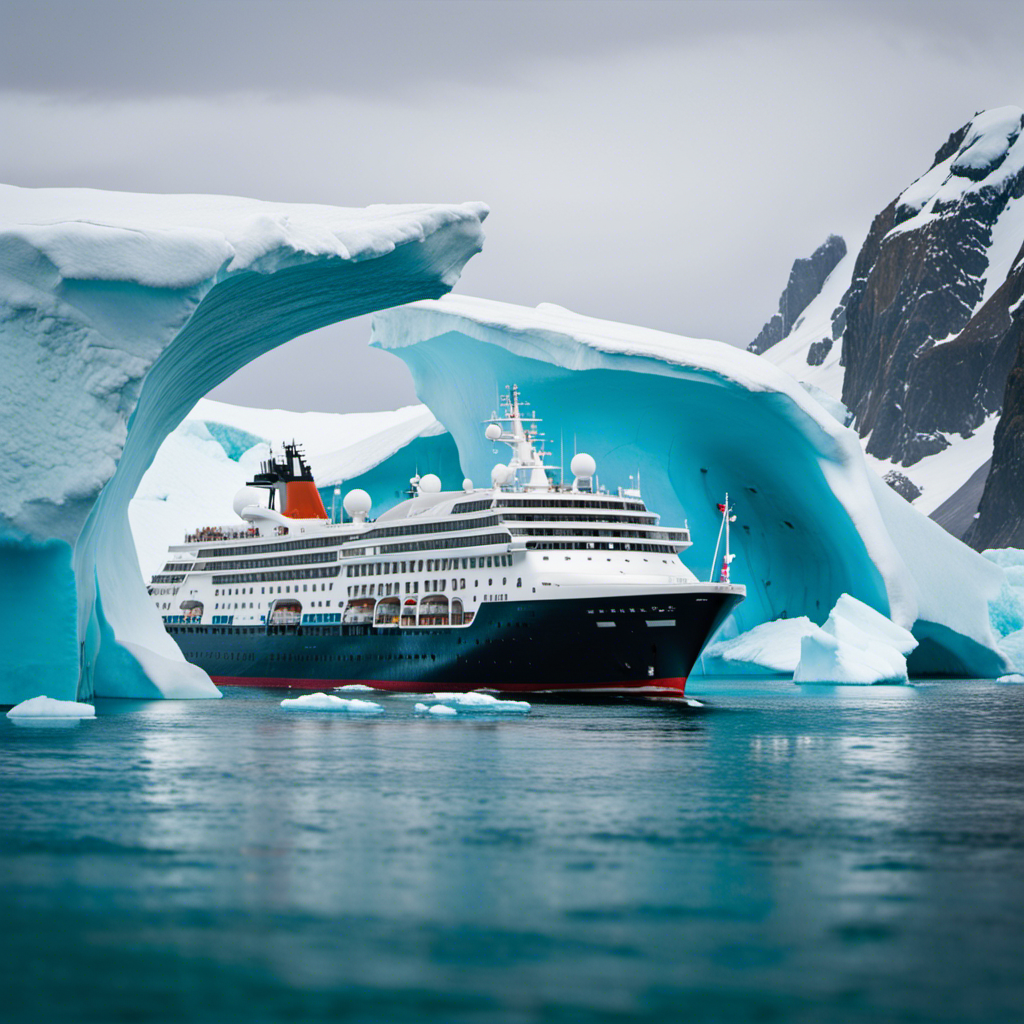
Unforgettable Antarctica: Luxury, Wildlife, and Exploration
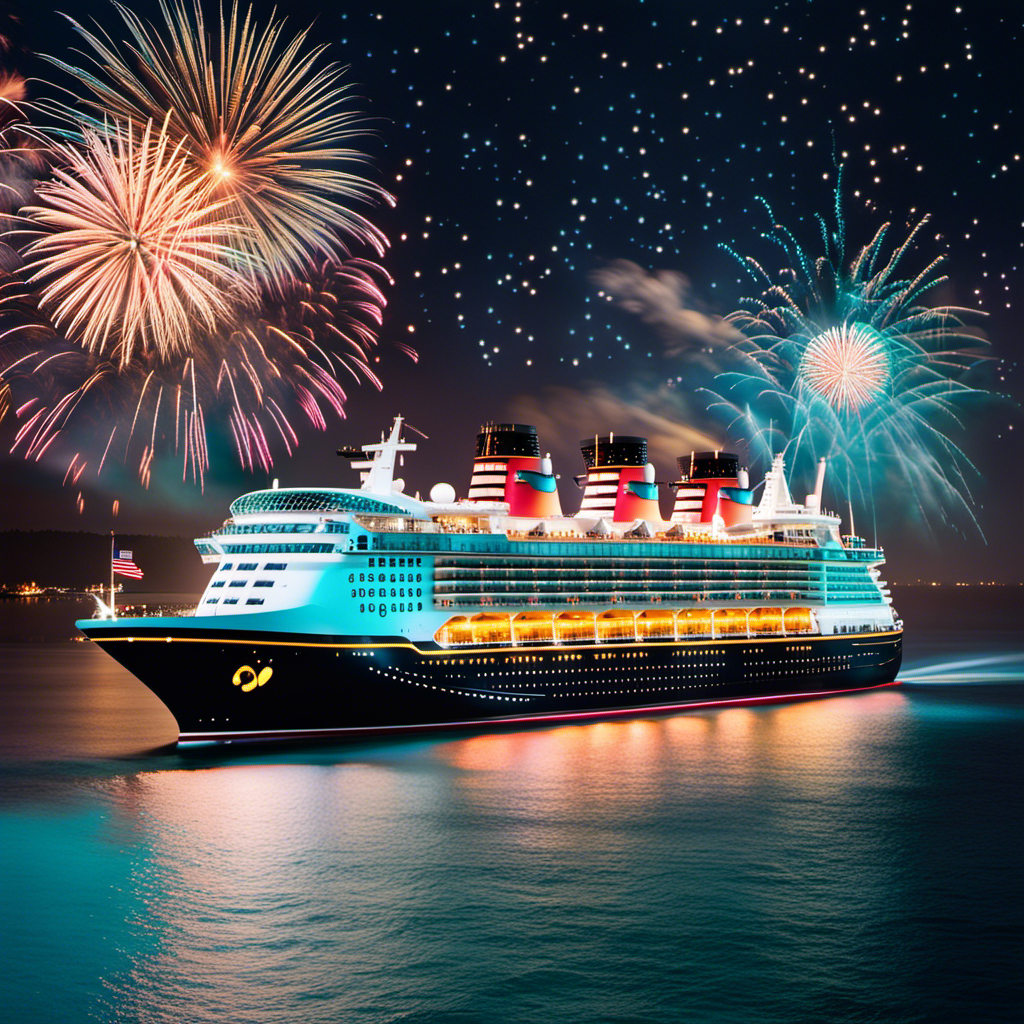
Celebrating Disney Cruise Line’s Milestone Anniversary
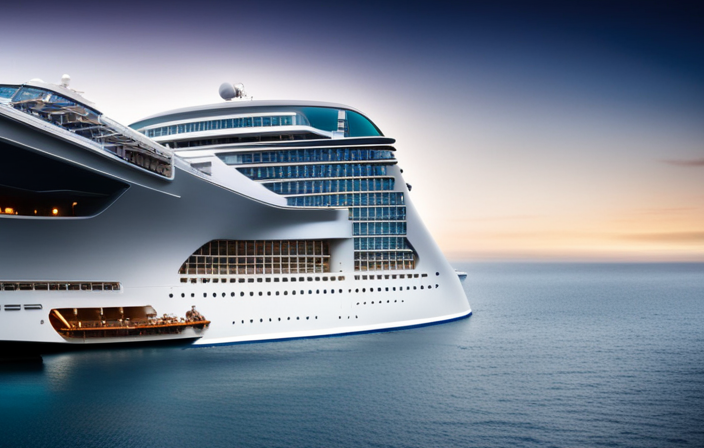
Which Celebrity Cruise Ships Have Been Refurbished

What Drinks Can You Bring On Princess Cruise

How To Turn On Cruise Control Tesla Model 3

What Is The Weather Like On A Transatlantic Cruise In April

How To Set Cruise Control Tesla Model Y

Ultimate Adventure and Relaxation Guide at Playa Mia Grand Beach Park

What Makes Sharkbanz Your Ultimate Fearless Travel Protection?

Enchanting Destinations in Vietnam: Exploring Hoi Hanoi Halong Bay

Exploring Juneau: History Wilderness Local Delights Uncovered

Azamara Onward: Origins, Renovation, and Future Plans

How To Check Weather For A Cruise

How To Get From Venice To Chioggia Cruise Terminal

How Do You Qualify For An Ultra Cruise On Carnival
- What's My Car Worth?
- Buyer's Guide
What Is Adaptive Cruise Control?
Adaptive cruise control (ACC) is a system designed to help road vehicles maintain a safe following distance and stay within the speed limit. This system adjusts a car's speed automatically so drivers don't have to.

Adaptive cruise control (ACC) is a system designed to help vehicles maintain a safe following distance and stay within the speed limit. This system adjusts a car's speed automatically so drivers don't have to.
Adaptive cruise control is one of 20 terms used to describe its functions so that you might see adaptive cruise control as the following in advertisements and vehicle descriptions:
- Active cruise control
- Dynamic cruise control
- Radar cruise control
- Automatic cruise control
- Intelligent cruise control
ACC functions by sensory technology installed within vehicles such as cameras, lasers, and radar equipment, which creates an idea of how close one car is to another, or other objects on the roadway. For this reason, ACC is the basis for future car intelligence.
These sensory technologies allow the car to detect and warn the driver about potential forward collisions. When this happens, red lights begin to flash, and the phrase 'brake now!' appears on the dashboard to help the driver slow down. There might also be an audible warning.
Advantages of Adaptive Cruise Control
Limitations of adaptive cruise control.
Although there are many advantages to adaptive cruise control, there are still limitations to consider. One of the main faults in this system is the fact that it is not entirely autonomous. The driver of the vehicle still needs to practice safe driving habits that will work in tandem with this technology to produce the best results. Similarly, adverse weather conditions like snow, rain, or fog might confuse the system's sensors, as well as environmental factors such as driving through tunnels.
What Is the Difference Between a Level 1 Autonomous Car and a Level 2 Autonomous Car?
According to SAE International, when a car only has autonomous cruise control , it is considered to be a level 1 autonomous car. In contrast, a vehicle with autonomous cruise control and an additional feature, such as lane control, gets classified as a level 2 autonomous car.
How Much Does an Adaptive Cruise Control System Cost?
According to ExtremeTech, The cost of an adaptive cruise control system will vary depending on how many features you want. If you're going to have an ACC with all available features, you should be willing to pay anywhere between $2000 and $2500. If you are looking for minimal cruise control that would benefit speeds of up to 20-25 miles per hour, these more basic ACCs can cost as low as $500. The good news is that as ACC becomes more common, it will most likely reduce in price.
History of Adaptive Cruise Control
U.S. News says Mitsubishi first introduced adaptive cruise control in Japan in 1992 . This was a lidar-based distance detection system that detected objects that were getting too close. It was labeled as 'Debonair' and it was programmed to provide a warning to the driver about oncoming objects. The main difference was that it was the driver's job to apply the brakes and reduce their speed.
However, two years later in 1995, the Mitsubishi Diamante featured an upgraded approach to the Debonair called 'Preview Distance Control.' Unlike the original technology, this laser-powered system could adjust a driver's speed by downshifting or controlling the throttle. The driver was still responsible for applying the brakes.
From the early 2000s onward, big names in the car industry, such as Ford, BMW, Mercedes, Cadillac, Volkswagen, Infinity, Hyundai, Toyota, and Audi, created their versions of adaptive cruise control in their vehicles. These individual features have evolved into a high-tech system with automatic braking and speed control.
Types of Adaptive Cruise Control
Radar-based systems.
According to eInfoChips, radar-based systems work by placing radar-based sensors on or around plastic fascias to detect your vehicle's surroundings. Each radar sensor works together to create a comprehensive picture of the vehicle's proximity to other cars or potentially hazardous objects. This type of sensor can look different depending on the design and model of the car.
Laser-Based Systems
As mentioned by Electronic Design , this type of ACC system operates out of a large black box typically placed in the grille of your vehicle. It uses laser technology to detect the proximity of objects to your car. It does not operate well during rainstorms and other weather conditions.
Binocular Computer Vision Systems (Optical)
According to ExtremeTech, this is a relatively new ACC system put into use in 2013. It uses small cameras that are placed on the back of a vehicle's rearview mirror to detect front-facing objects.
Assisting Systems
Assisting systems are radar-based add-ons that customers can buy together. These pre-crash systems can offer lane control, brake assistance, cruise control, proximity alerts to objects like corners, and steering power.
Multi-Sensor Systems
According to Fierce Electronics , adaptive cruise control systems sometimes integrate more than one type of sensor to aid in a vehicle's operation. Multi-sensor systems incorporate several different sensor types to provide a driver with advanced information. These sensors might include GPS data equipment or cameras to gather information about a vehicle's geographic environment and proximity to other cars.
Predictive Systems
As mentioned by Autoblog, prediction systems are a type of ACC that uses sensory data to predict the actions of neighboring vehicles. This means that your car might slow down to brace for another vehicle suddenly switching lanes and, in doing so, promotes passenger safety.
Adaptive cruise control is evolving each year. Car companies are continuously making adjustments to this technology and, in doing so, creating more common and affordable options that can be purchased with a new car or added to older car models, making driving safer for everyday people.
Information and research in this article verified by ASE-certified Master Technician Keith Canete of YourMechanic.com . For any feedback or correction requests please contact us at [email protected] .
https://www.einfochips.com/blog/why-automotive-companies-should-adopt-radar-based-adas-systems/
https://www.electronicdesign.com/markets/automotive/article/21797633/adaptive-cruise-control-laser-diodes-as-an-alternative-to-millimeterwave-radars
https://www.autoblog.com/2015/01/14/new-honda-smart-cruise-control-predicts-other-motorists-future/
https://www.fierceelectronics.com/components/three-sensor-types-drive-autonomous-vehicles
https://www.extremetech.com/extreme/157172-what-is-adaptive-cruise-control-and-how-does-it-work
https://mycardoeswhat.org/safety-features/adaptive-cruise-control/
https://cars.usnews.com/cars-trucks/what-is-adaptive-cruise-control
https://www.caranddriver.com/features/columns/
https://www.sae.org/
.css-190qir1:before{background-color:#000000;color:#fff;left:0;width:50%;border:0 solid transparent;bottom:48%;height:0.125rem;content:'';position:absolute;z-index:-10;} Research .css-188buow:after{background-color:#000000;color:#fff;right:0;width:50%;border:0 solid transparent;bottom:48%;height:0.125rem;content:'';position:absolute;z-index:-10;}

Tundra vs. Tacoma: Comparing Toyota Pickup Trucks

Honda HR-V vs. CR-V: Examining the Differences
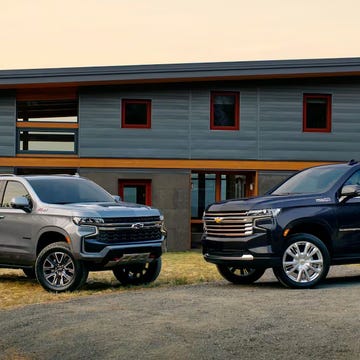
Chevy Tahoe vs. Suburban: Here Are the Differences
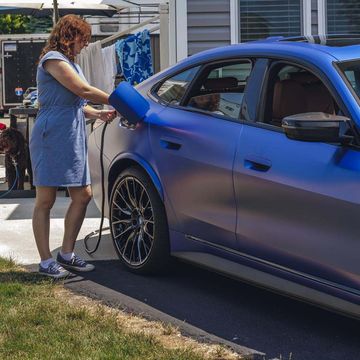
What Are the Different EV Charging Levels?
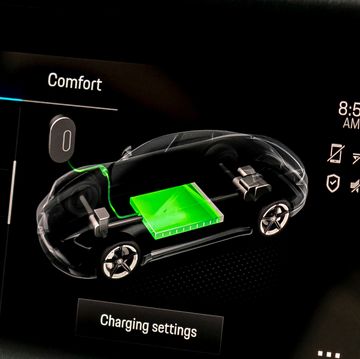
Electric Car Battery Life
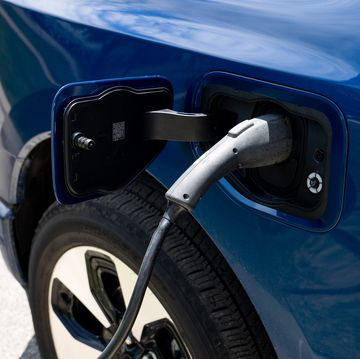
Electric Cars vs. Gas Cars: Pros and Cons

How to Clean Leather Car Seats
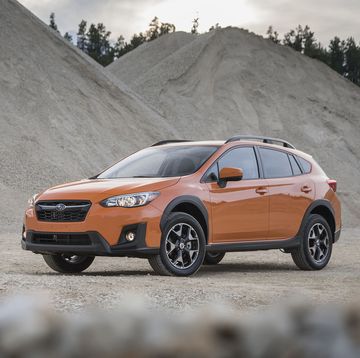
What to Buy: Subaru Crosstrek or Subaru Forester?

What to Buy: Jeep Cherokee or Jeep Grand Cherokee?
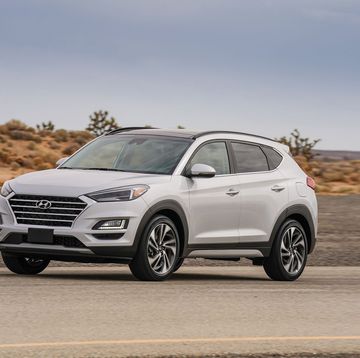
What to Buy: Hyundai Tucson or Hyundai Santa Fe?
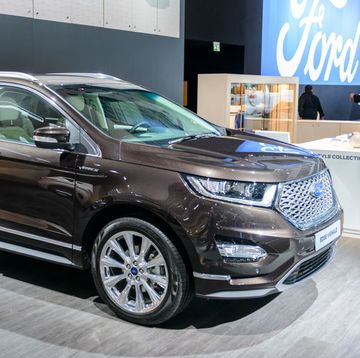
2019 and 2020 Ford Edge Colors
- Dashboard Warnings

What Does Cruise Main Mean in a Car? Everything You Need To Know!
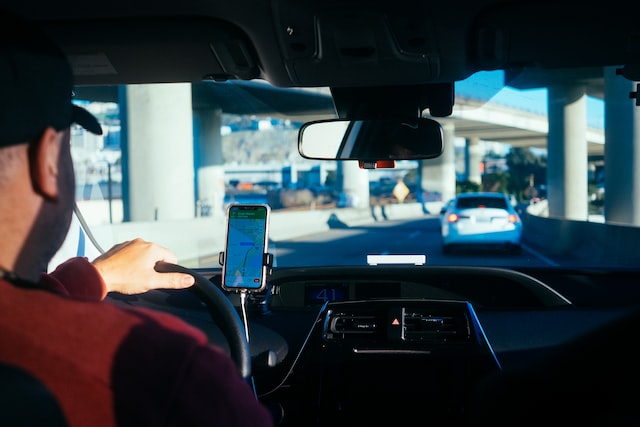
Cargroot is reader-supported. When you buy through links on our site, we may earn an affiliate commission.
Have you recently heard someone using the term Cruise main and wondered what it means? If yes, you are not alone. Not many drivers and car users know of this expression, but once you get the hang of this feature, there is no turning back.
A cruise main is a switch for the control system in your vehicle that maintains a steady set speed using an electric throttle. This speed also goes by the name cruising speed, hence the name cruise main.
Once you switch your car to the cruise main mode, this mode will automatically begin its operation and adjusts the speed of your vehicle to set a cruising speed. With the cruise main engaged in your car, you can maintain the set speed even without pushing the pedal.
We have compiled a comprehensive guide for you explaining the meaning of cruise speed, its working, when to use this mode, and what are the situations where this mode should be avoided, along with some additional information you would love to know about the cruise main system in your vehicle.
We will also take you through some advantages of using the cruise main system and some safety tips to help you along the way.
What Is the Meaning of Cruise Main?
The cruise main, as mentioned above, is a control system in the car that is concerned with adjusting the car’s speed and making it move at a set speed without having to press the pedal. Though this is what a beginner like you needs to know about the cruise main term, let us clarify one thing here.
Cruise Main is actually the button that’s used to turn on and off the cruise control system. The main system, however, cannot function completely just by pressing the cruise main button. You have to set the other settings of the system, decide on the speed, and perform multiple other operations before you can finally use this system.
You can use the cruise control system to adjust the vehicle’s speed, which enables you to maintain a steady speed that you can set without using the electronic throttle’s input.
In current times, you can find cruise control as a major part of standard car equipment, and it has only come with lots of positives. Thanks to this system, long hours of drives would no longer tire you as such, and you can relax a bit and stop caring about constantly looking at the tachometer for the speed limit adjustments.
A Little History of Cruise Control System
To explain the cruise control system better, let us take a peek into its history. The first ever cruise control system was invented back in the 1940s by Ralph Teetor. However, this was not the first time it was used in car production. In the year 1965, American Motors produced the first car featuring the cruise control system.
But it took over a decade for this system to gain popularity, especially when, in 1973, the fuel prices increased, and manufacturers started considering cruise control systems to save up on fuel costs.
Today, we can find the adaptive cruise control system in most vehicles that are used to maintain a constant car speed and can help you on long journeys. The best part about this system is the great efficiency it offers.
For instance, if a car at a slow speed gets in front of you while driving on the road, the cruise control system will automatically reduce your car’s speed. Similarly, it works to adjust the speed of your vehicle according to the speed limit.
Working of the Cruise Control System
The modern cruise control system comes on the engine control unit of the vehicles. As all the controls of this system feature electronic transmission, including brakes, steering, and throttle, there is no need for additional components. The only manual controls you need are buttons and the basic driver controls.
Though now this system is electronic, this wasn’t the case during the early days of the cruise control system. Earlier, this system featured drive-by-wire throttle bodies, and the entire system was cable-operated.
The cable network was such that one wire went from the pedal to the throttle body for the person in the driving seat to control the throttle. However, the leading cruise control cable reached the throttle body via the electric motor.
Later on, the cruise control motor goes to the tachometer and the control unit of the vehicle’s engine. This was followed by the electric body’s opening and closing of the throttle body while keeping an eye on the tachometer data once the speed was set.
How to Use Cruise Control?
Now that you know how the cruise control system works, let us take you through the entire process you need to know to use this system on your vehicle.
As mentioned earlier, the main button to turn on this system is Cruise Main, but this is not the only control you need to switch on for moving your car to the cruise control system. Here we have listed all the controls and buttons you need to know of to use the cruise control system effectively.
- As we have discussed before, the Cruise Main button is used to turn the cruise system on and off and has nothing to do with the cruise speed.
- As evident by its name, the Set button is concerned with setting the acceleration and the deceleration. This control is used for setting the speed for the cruise control system, the speed you want to travel with at any given instant.
- The Res button isn’t found in all cars, making it evident that it doesn’t have a crucial role in the cruise control system. This button is used to reset the previous speed of your cruise control system. On pressing this button, your system will become a plain canvas for you to set the new speed you want.
- The last two buttons of the cruise control system are named either “accel” and “decel” or “+” and “-.” in addition to the Set button, these also deal with controlling the acceleration and deceleration. However, both these buttons are used once you have set the speed using the Set button.
- By pressing any of these two buttons, you will i ncrease or decrease the cruise speed by 3 to 4 mph.
- In the end, you can push the Cruise Main button once again to stop the working of the whole cruise control system.
Why Use the Cruise Control System?
Though the cruise control system doesn’t have any apparent harm, and all you can notice when first hearing about this system are the positives it brings to the table, some people still contemplate using this speed control system on their vehicles.
If you are also one of them, we have listed some major benefits of using this system. These benefits might help you make the final decision.
Maintain Constant Speed
One significant benefit you will get while using the cruise control system. No one loves to drive for long hours on straight and boring roads. The worst part is that you can’t even fall asleep during this long journey if you have gotten hold of the driver’s seat.
But don’t worry, using the cruise control system; you can now leave the car to move on the road on its own as this system will adjust the speed depending on the road conditions and the surroundings, allowing you to relax.
Fuel-Efficient
One of the main reasons you should consider using the cruise control system is its fuel efficiency. As we have mentioned in the history part, one of the things that got the cruise system all the fame and popularity it has now is the time when the fuel prices were increased, and manufacturers moved towards this for its fuel efficiency.
Your engine will use the same fuel level when you drive at a constant and steady speed. Using the cruise control system, the speed can be adjusted, changing the fuel level being used, thus causing a significant reduction in fuel costs.
No Speeding Tickets
If you don’t want to get speeding tickets just because you have lost sight of the tachometer, the cruise control system is something you need to consider. As for this system, the speed is controlled by the machine itself with the help of different sensors; there are very few chances for you to get a speeding ticket. Isn’t it great?
Turning Off the Cruise Control
If this is your first time using the cruise control system, and you have no idea how to turn it off, here are the steps you can follow.
- Press the brake pedal, and the cruise control system will stop working.
- You can also press the Cruise Main to turn off the cruise control system.
Increasing the Cruising Speed
Following are the steps you need to go through to increase the cruising speed of your vehicle.
- Hit the “SET” button and hold it for a few seconds.
- Your vehicle’s speed will begin accelerating. Once it reaches the desired speed, let go of the “SET” switch.
- Now, press the “SET” button and let go of it immediately to adjust the preset speed.
You can also increase the cruising speed using the accelerator pedal. Here is what you need to do for this:
- Press the accelerator pedal and wait till your vehicle reaches the desired speed.
- Once the desired acceleration is reached, let go of the accelerator pedal.
You have successfully increased the cruising speed of your vehicle.
Decreasing the Cruising Speed
Here is what you need to follow to reduce the cruising speed:
- Once you have set the cruising speed for your vehicle and your vehicle is moving at that speed, press “SET” and hold it.
- Wait till your car decelerates to the desired speed and release the “SET” button.
- Hit the “SET” switch and let go of it immediately to adjust the preset speed.
How To Cancel the Cruise Control System Temporarily?
If, during your long driving journey, you want to turn off the cruise system temporarily, here is how you can do this:
- Press the brake pedal slightly and wait for a few seconds till the system turns off.
- You can also press the “CANCEL” switch to turn off the cruise control system.
- When you want to turn it on again, simply hit the “RESUME” button.
Cruise Control Safety Precautions
Though the cruise control system is harmless for the most part, there are still some precautions and safety tips you need to pay heed to avoid any mishaps. Here are some of the cruise control system safety precautions for you to save yourself from any unfortunate events:
Avoid Overspeeding
One of the first things you need to keep in mind while using the cruise control system is the cruising speed. Though this system is efficient and packed with highly responsive sensors, setting the vehicle at a steady speed is still recommended. Ensure that you are not accelerating the car too much, as this can lead to accidents.
Not In Corners
If you are moving your car mainly in the corners of the road, no matter how much you are sure of it, it’s hard to control the vehicle’s speed. In this case, you might as well have to make a lot of adjustments in the cruising speed, which is why it’s best not to use the cruise control system when in corners.
Don’t Drive On Slippery Roads
Avoid using the cruise control system if the road you are driving on is too slippery. It’s because, to work effectively, this control system needs to determine the available friction on the road, which is nearly impossible if the road is slippery.
Don’t Sleep
As we have mentioned in the benefits part, you can relax using the cruise control system while in the driver’s seat, but this doesn’t mean you can take a nap. Though most drivers are tempted to take a short nap, considering the risk trackers on the cars and the high efficiency of the cruise control system, it’s still not something experts recommend.
Conclusion – What Does Cruise Main Mean in a Car?
In this guide, we have explored the meaning of the cruise main and the cruise control system in detail. We have also taken you through all the steps you need to go through for setting up or using the cruise control system, along with some simple steps for increasing and decreasing the cruising speed.
We have also listed some of the main advantages of using the cruise control system and some precautions to pay heed to while doing that. Hopefully, this guide has answered all your questions regarding the cruise control system, and you are now fully prepared to tune your car into this mode.
LEAVE A REPLY Cancel reply
Save my name, email, and website in this browser for the next time I comment.

Car Feels Like It Is Going To Stall When Stopped –...

[Solved] Car Shaking in Reverse – Why & How to Fix...

C121c Torque Request Signal Denied? Causes, Diagnosis & Fixes!

What Does SVC Tire Monitor Mean? Benefits, Causes & Fixes!

Oil Pressure Gauge Goes Up When Accelerating
- Terms & Conditions
- Cookie Policy
- Privacy Policy
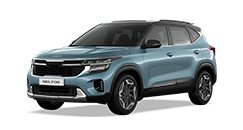
- Commercial Vehicle
- Find a Dealer
- Request a Brochure
- Request a Quote
- Request a Test Drive
- Service Center
- Service Policy
- Book a Service
- Our Movement
- Our Inspiration
- Sponsorship
- Sustainability
- Local Company
- Investor Relations
- Discover Kia >
- What is cruise control?
“Cruise control allows you to maintain a set speed without using the accelerator. Once you've selected the speed, you can take your foot off the accelerator and the vehicle will cruise at that speed.”
What Is Cruise Control
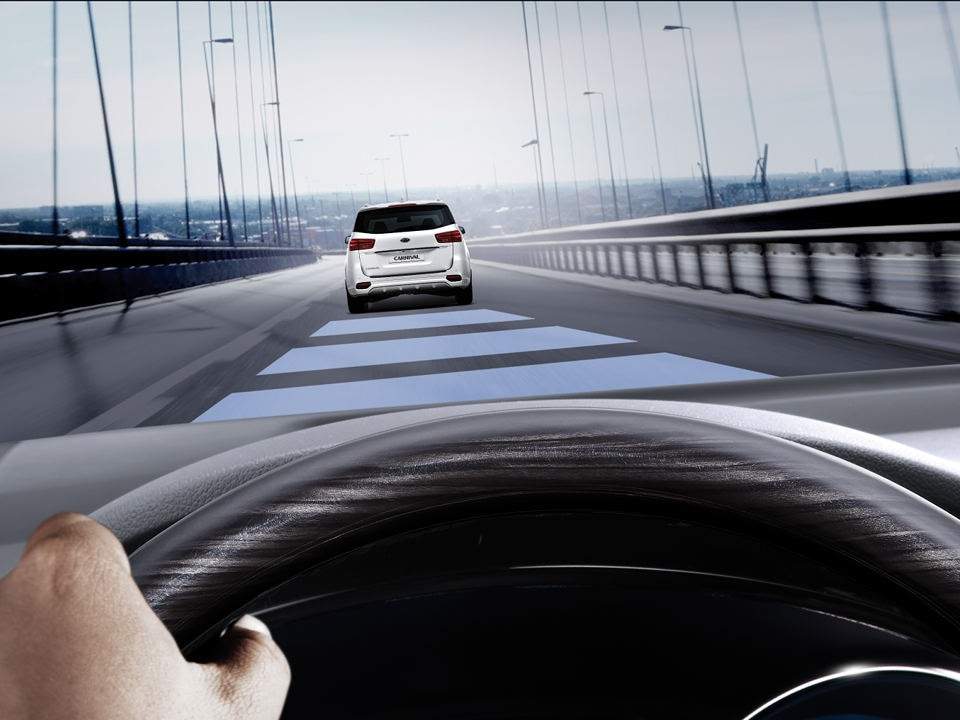
Cruise control is a feature that comes in handy when you drive at a constant speed. It is an electric system that allows you to set your car to a specific speed, letting you take your foot off the accelerator pedal. So, it can ease foot-fatigue and stress over a long drive. Another great benefit to using cruise control is that you are going to have greater fuel efficiency. Your vehicle will consume much less fuel if you cruise at a steady speed rather than accelerating at each section of the open road. When you accelerate sharply, it makes your engine use more energy, and you could be using 60% more fuel than one who uses cruise control. Ultimately, it's not hard to save on fuel if you let your vehicle automatically maintain a steady cruising speed.
The leading edge of cruise control today is adaptive cruise control. Almost all cars now will be equipped with this smart system. Just as conventional cruise control, adaptive cruise control allows you to set a desired travel speed. But the difference is that the adaptive cruise control maintains a safe distance between the car in front of you and your car at a consistent pace by using the forward-mounted sensors. For instance, if the car ahead of your vehicle begins to slow, adaptive cruise control will use the engine brake to automatically slow the pace of your vehicle and maintain the selected distance. Many say adaptive cruise control is a step to autonomous cars in the future. But it is not quite fully autonomous driving, since you have to keep your hands on the wheel and be fully cognizant of the road.
How To Use Cruise Control
Typically, the cruise control buttons can be found on the right-hand side of the steering wheel. Depending on the car, the location of the controls can vary, but the functionality of the cruise control will usually be similar across the board. Here are the basic buttons you can use to operate cruise control.
ON/OFF : To set the cruise control, press the ON/OFF button. You will see the cruise light illuminate on the dashboard which means the system is activated. To turn the system off, press this button again.
Res + : Press this button if you want to increase the cruising speed. Each time you hit the button, the vehicle will accelerate by 1 mph. You can also use this button to resume your previously set speed.
Set - : This button will decrease the set speed. Each time you press the button, the cruising speed will decrease by 1 mph. Once you reached the desired speed, hit the “Set” button and the “Cruise Set” icon will appear on the dashboard. Then you can take your foot off the gas pedal and the car will maintain the speed for you.
Cancel : When it's time to cancel the cruise control mode, like when you exit the highway or if there is heavy traffic ahead, press this button to disengage the cruise control system. Or you can simply depress the brake pedal to cancel the system.
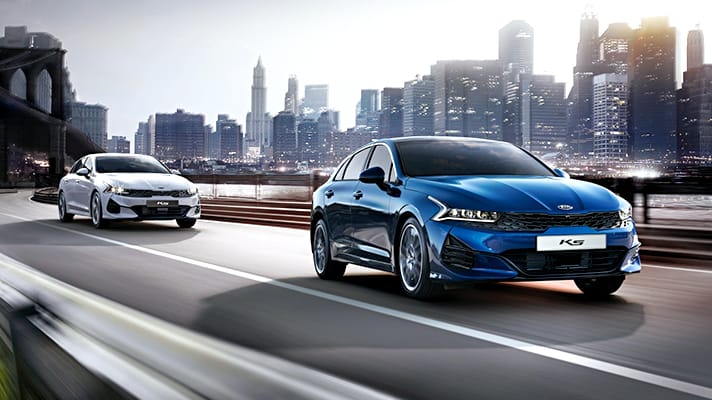
Safety Tips for Using Cruise Control
However smart the cruise control may be, there are some situations where you SHOULD NOT use the feature altogether. Here are some golden rules to live by when it comes to using your cruise control.
- On wet roads, it could be dangerous to use cruise control. It will be less effective in the rain, and cruise control may upset the balance and reaction times under rainy conditions.
- During rush hour, it is a good idea to leave the cruise system off. With conventional cruise control, you will have to continuously turn it off when traffic slows down and you can get into an accident if you are distracted while it is active.
- On challenging winding roads, you should not use cruise control. Note that cruise control is primarily designed to enable you to cruise on the highway at a set speed. If you are not doing so, it is best not to use it.

- Shopping tools
- Discover Kia
- 2023 Seltos
- 2023-sportage

What Does Cruise Main Mean In A Car? (Control Light On)
Have you ever seen the term “cruise main” in your car and had no idea what it meant? Cruise main is a term used in cars to describe a system that helps the vehicle maintain its speed. You may not have used it before. But if you’re planning a long road trip, it’s worth considering.
A cruise main control system uses an electronic throttle to maintain a set speed, also called a cruising speed. When activated, the cruise main will automatically adjust the idle speed and throttle position to maintain the desired speed.

When engaged, this system will automatically adjust your car’s speed to maintain the set cruising speed even if you take your foot off of the pedal. Learn more about Cruise Main in today’s blog post!
Overview Of Cruise Main
The cruise main switch is typically a simple button attached to the steering wheel that the driver can easily operate. In most cases, the switch will be clearly labeled with the word “cruise” or a symbol indicating that it controls the cruise control system.
How Is It Beneficial?
Cruise Main is said to be beneficial for those who want to avoid getting speeding tickets and those who want to be able to drive more safely . But what are the other benefits of using the cruise main in your car? Let’s take a look.
Saves Your Car’s Fuel
For one, cruise control can help you save on gas. By keeping your car at consistent speed control, you can avoid wasting gas by accelerating and braking too much. It can add up to big savings over time, especially if you do a lot of driving.
Stay Safe On Roads
Another benefit of cruise control is that it can help you stay safe on the road. You’re more likely to get into an accident if you’re constantly changing speeds. But if you keep your car at a steady speed, you’re less likely to have an accident . You’re less likely to make sudden moves that could cause an accident.
Helps You Relax On Long Trips
Lastly, cruise control can help you relax on long trips. If you’ve ever driven for hours, you know how tiring it can be. But if you have cruise control, you can just set it and forget it. You won’t have to worry about constantly adjusting your speed or worrying about traffic. You can just relax while your car does all the work.
How To Use Cruise Control In Your Car?
Here’s a quick rundown of how to use cruise control in your car:
- Find the cruise control button – It’s usually located on the steering wheel, near the car’s other audio and Bluetooth buttons.
- Set your desired speed – Once you’ve found the cruise control button, press and hold it until the desired speed is reached.
- Release the button – You can release the cruise control button once you reach your desired speed. The car will maintain that speed until you press the brake pedal or the cruise control button again.
- Resume your desired speed – If you need to slow down for traffic or a turn, press the resume button (usually located near the cruise control button) to return to your desired speed.
See Also: Service Stabilitrak Meaning: Understanding Stabilitrak System And Steering Wheel Messages
How To Turn Off Cruise Control?
You might want to turn off your adaptive cruise control for a few reasons. Maybe you’re approaching a stop sign or traffic light and must slow down. Or perhaps you’re going downhill and don’t want the car to speed up too much.
Whatever the reason, it’s easy to turn off your cruise control. Just press the brake pedal, and the cruise control will disengage. You can also turn the cruise control knob off to the “Off” position.
If you need to slow down for a stop sign or traffic light, it’s best to press the brake pedal instead of relying on cruise control to do it for you. You can keep your foot on the gas and avoid jerky starts and stops.
Check Out How To Use Cruise Control-EASY Driving Lesson:

Tips To Use Cruise Control Safely
Here are a few tips on how to use cruise control safely:
Pay Attention To The Road
You need to know what’s happening even though you’re not actively accelerating. Cruise control won’t brake for you, so if there’s a sudden slowdown ahead, you’ll need to be ready to hit the brakes.
Use It In Good Weather
Cruise control can be tricky in heavy rain or snow since your car’s speed can fluctuate with different road conditions. If the weather is bad, it’s best to turn off cruise control and drive manually.
See Also: What Does VSA Mean On A Car? (Vehicle Stability Assist Warning Light On)
Don’t Use It On Winding Roads
Cruise control can be dangerous on twisty roads since your car might go too fast for the conditions. If you’re driving on a windy road, it’s best to turn off the cruise control and drive manually.
Be Prepared To Take Over
Even if you’re using cruise control, you should still be ready to take over at any time . If something unexpected happens, you’ll need to be able to react quickly.
Can Cruise Control Increase Gas Use?
This question has no definitive answer, as fuel economy can vary greatly depending on several factors. If you have a fuel-efficient car, cruise control can help you save money on gas. Cruise control may not make much difference if you have an older, less fuel-efficient vehicle.
Does the cruise control turn off when you brake?
The answer to this question largely depends on the type of cruise control system your vehicle is equipped with. For example, many older cruise control systems will disengage when the brake pedal is depressed.
However, newer cruise control systems often have a feature to remain engaged even when the brake pedal is depressed. So, it depends on the specific system your vehicle is equipped with.
What Does Coast in a Car Mean?
Coasting is when the driver takes their foot off the gas pedal and coasts without using the brakes. Coasting conserves fuel and can be used as a driving technique to save gas. There are a few different ways that you can coast in a car: – One way is to take your foot off the gas pedal and naturally let the vehicle slow down. – You can also downshift to a lower gear to help the car slow down . – And finally, you can use the brakes to bring the car to a stop slowly.
When Should Cruise Control Not Be Used?
There are a few circumstances in which you should not use cruise control. These include when the weather is bad, driving in heavy traffic, or on a winding road.
Additionally, it’s important to be aware of your vehicle’s speed limit and not raise the cruise control. Finally, if you need to make a sudden stop, it’s important to disengage the cruise control.
Why do I always have my cruise control on?
The first possibility is that your car’s cruise control system is stuck in the “on” position. It can happen for several reasons, but the main cruise control switch that turns the system on and off is the most common problem. If this switch is damaged or malfunctioning, it could cause the cruise control to stay on permanently.
Another possibility is that there is a problem with the cruise control itself. If it’s not working properly, it could send a signal to the car telling it to keep the cruise control on. Many things, including a loose wire or a faulty sensor , can cause it.
Final Considerations
Cruise control can be a great asset on long road trips , but it’s important to use it safely. Pay attention to the road and keep your hands on the wheel , even when cruise control is engaged. And if you’re ever in doubt, it’s always best to disengage the system and drive manually.
Recommended Reads

Find Me On:
Here at AxleWise we know that finding the best car advice is a real pain! There are so many different websites out there, all claiming to be the best resource on the world wide web. AxleWise was created with you in mind our sole purpose is to help and provide you with accurate and educative information!
Address: 6220 Westpark Dr, Houston, TX 77057 | Phone: +1 (956)-254-0232 | Email: [email protected]
Copyright © 2024. All rights reserved.
Updated on 07-22-23

Understanding the Cruise Control Symbol on Your Car Dashboard. Decoding Standard Symbols
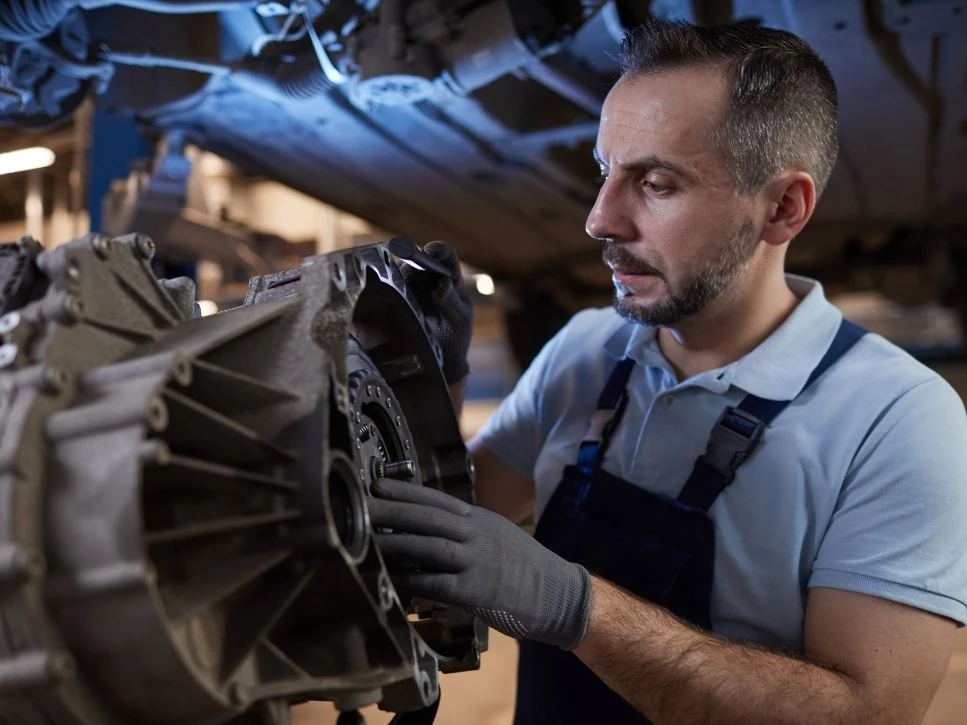
As a driver, understanding the symbols on your car dashboard is essential for vehicle safety and functionality. The cruise control symbol is one such symbol that may be confusing or unfamiliar to some drivers. In this blog post, we will discuss what the cruise control symbol means and how to use it.
What is Cruise Control?
Cruise control is a feature in cars that allows you to maintain a constant speed without the need to continuously press on the accelerator pedal. By using cruise control, you can give your foot a break during long drives or on stretches of highway where you don’t need to vary your speed.
What Does the Cruise Control Symbol Look Like?
The cruise control symbol can vary depending on your car make and model, but it typically looks like a speedometer with an arrow or a car with a speedometer inside of it. Sometimes, the symbol may also have the word “Cruise” written below or beside it.
How to Use Cruise Control
To use cruise control, follow these steps:
- Accelerate to your desired speed.
- Locate the cruise control button on your steering wheel or dashboard. It’s usually labeled with the same symbol we discussed earlier.
- Press the cruise control button to turn it on. You should see the symbol light up on your dashboard.
- Once you’re traveling at your desired speed, press the “set” or “resume” button on your steering wheel or dashboard. This will activate the cruise control and maintain your current speed.
- To turn off cruise control, simply press the “off” button or tap the brake pedal.
Important Safety Considerations
While cruise control can be a helpful feature on long drives, it’s important to remain alert and aware of your surroundings while using it. Do not use cruise control in heavy traffic or on winding roads. Additionally, always wear your seatbelt and keep a safe following distance from the car in front of you.
In conclusion, understanding the cruise control symbol on your car dashboard is important for any driver who wants to take advantage of this helpful feature. By following the steps we outlined above, you should be able to use cruise control safely and effectively on your next long drive.
👉 You may also like - What Could Potentially Happen if Your Intake Air Temp Sensor is Unplugged? An Exploration
What does the cruise control symbol on my car dashboard represent?
The cruise control symbol on your car dashboard represents the availability and status of the cruise control feature. It is typically depicted as a speedometer icon with an arrow or a vehicle icon with speed lines. The symbol is designed to indicate that the cruise control system is active and ready to be engaged.
How does the cruise control feature work?
The cruise control feature allows you to set a desired speed for your vehicle to maintain without continuously pressing the accelerator pedal. Once activated, you can increase or decrease the set speed using the controls provided. The system automatically adjusts the throttle to keep your vehicle at the set speed, providing convenience and reducing driver fatigue on long drives.
What are the common methods to activate the cruise control feature?
The specific method to activate the cruise control feature can vary depending on the vehicle make and model. However, it commonly involves locating the cruise control buttons on the steering wheel or the dashboard. Typical controls include an “On/Off” button, “Set” or “Resume” button to set the desired speed, and buttons to increase or decrease the set speed.
Can I use the cruise control feature in all driving conditions?
No, the cruise control feature should not be used in all driving conditions. It is recommended to use cruise control only in appropriate situations, such as on long, straight highways with little traffic. Avoid using it in heavy traffic, city driving, or in inclement weather conditions, as these scenarios may require frequent speed adjustments or immediate braking.
What should I do if the cruise control symbol starts flashing on my dashboard?
If the cruise control symbol on your dashboard starts flashing, it indicates a potential issue with the cruise control system. The exact meaning of the flashing symbol can vary between different car models. To determine the specific problem, consult your vehicle’s owner’s manual or seek assistance from a qualified mechanic who can diagnose and resolve the issue.
Is it safe to rely solely on the cruise control feature while driving?
No, it is not safe to rely solely on the cruise control feature while driving. Cruise control is meant to assist drivers in maintaining a constant speed, but it does not replace the need for attentive and responsible driving. It’s important to remain aware of the road conditions, traffic, and any unexpected situations that may require immediate control of the vehicle. Always be prepared to override or disengage the cruise control feature when necessary.

Can Your Cruise Control Get Stuck? Here's What to Do If it Happens
How can you safely jump start a car without another vehicle a comprehensive guide.

Mastering ASE Testing - The Ultimate Guide for Success

Keeping Current - Charging System Diagnosis and Repair
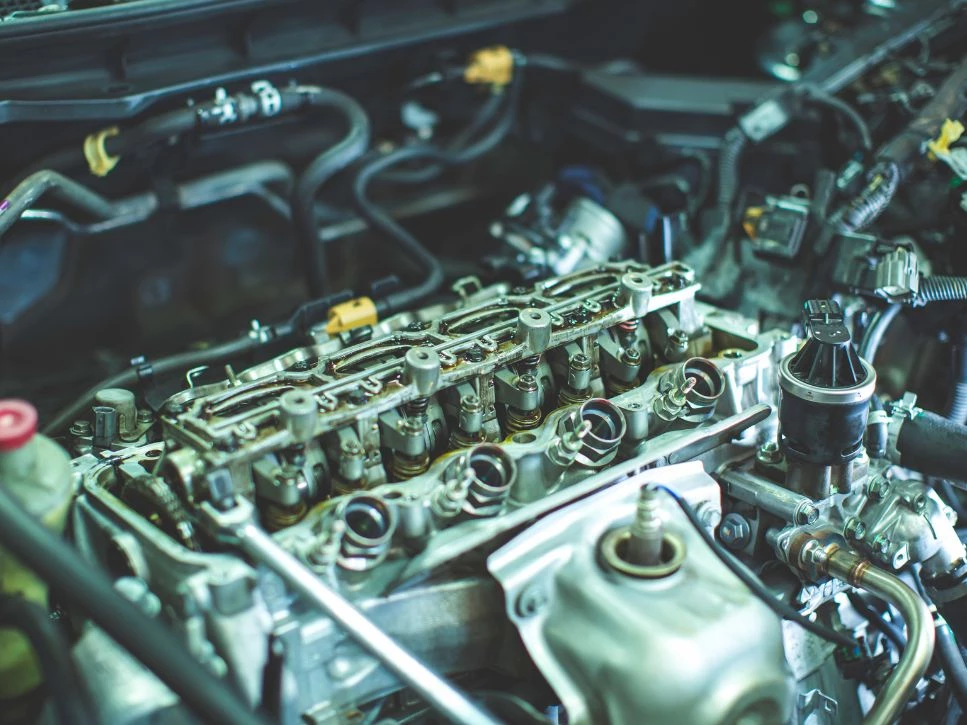
The complete ASE practice test with answers and explanations
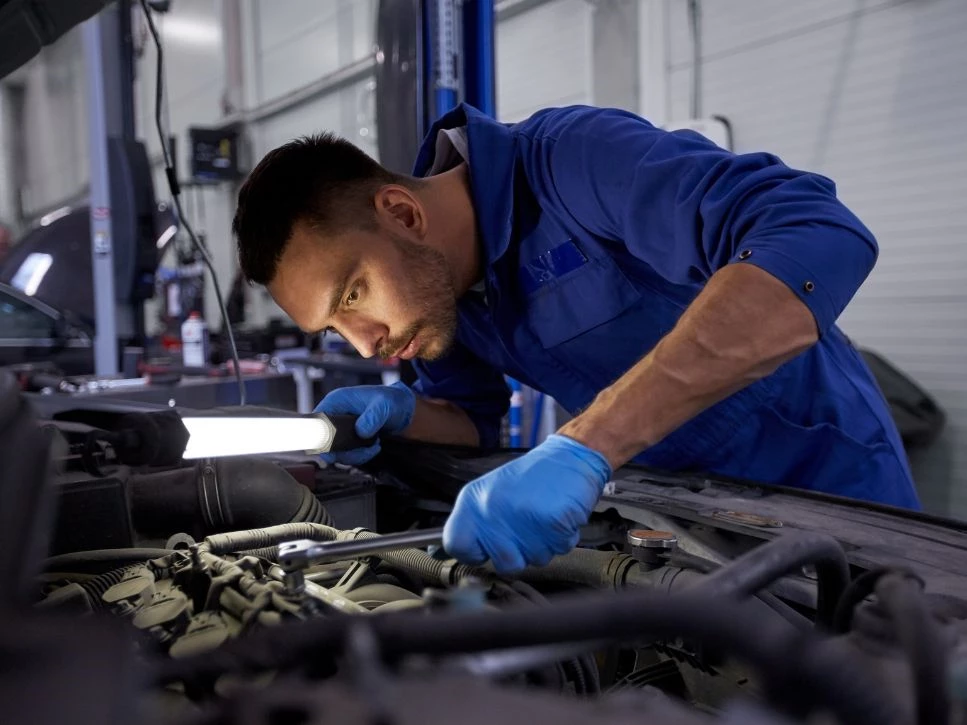
Enhancing the Ride - Accessories Diagnosis and Repair
What Does Cruise Main Mean In A Car – A Complete Answer
The cruise main is commonly used in many modern automobile brands thanks to its great convenience and high-security levels.
But some questions remain: What does cruise main mean in a car? This article will clear out your perplexions and provide detailed guidelines on cruise main meaning and tips to use it properly.
What are you waiting for? Let’s get started!
What Does Cruise Main Mean In A Car? – An Overview
What is cruise main? Cruise main is a term exclusively used in the automotive field, featuring a system that helps control vehicles’ speed and consequently lower the chances of accidents on the road.
The cruise control button adheres to the steering wheel. In some automobiles, it is also labeled with a “cruise” symbol to be easily noticed. In this way, drivers can operate it without a hitch.
Its system uses an electronic throttle body to maintain the cruising speed by adjusting the throttle position and switching to the desired velocity.
The cruise control indicator light is an additional feature that prevents drivers from accidentally activating this system.
Nowadays, the cruise main light Honda Civic is one of the favorable ones, famous for its duration span, quality, and saving energy.
The cruise main’s introduction is regarded as a revolution in the field of speed setting, which can keep the possibility of accidents to a minimum and helps drivers recuperate after many hours of driving.
How To Use Cruise Control In Your Car
Below is a brief rundown on how to use the cruise main system in your automobile. Please follow our steps to reap the best result:
Switch On The Cruise Control
First, you need to activate the main cruise by hitting the button near the car’s radio or Bluetooth system. Once you successfully turn it on, a flash will pop up on your dashboard.
It is strongly recommended that you locate the cruise main first. Fumbling around trying to find something is extremely dangerous when you are on the road, as some unexpected incidents can suddenly arise.
Build Your Speed
Cruise control is initiated for the driver’s safety by controlling the speed. Therefore, if you want to utilize this system, you must set the most appropriate velocity.
Undoubtedly, setting the system at speed above the legal speed limit is unwise.
Therefore, it’s ideal for you to set a steady speed of between 55 and 70 miles per hour without constant stopping, which is legalized within the motorway or carriageway speed limit.
Set The Speed
Afterward, flick the “set” button by moving it upward and holding it until the desired speed is reached. A notification will be shown on your dashboard, and its indicator will turn to a green light.
You can lift your foot off the accelerator, and the car will automatically maintain the set velocity.
Important Notes
- Suppose you want to resume your desired speed after slowing down or speeding up due to some factors, such as weather, accidents, or traffic congestion. In that case, you only need to hit the “resume” button to return to your programmed velocity.
- Tap the “up” arrow or the “+” button to raise the automobile’s velocity. Don’t press the pedal, which often overrides the system, inducing many perils.
- Choose the “down” arrow or the “-” button to decrease. When the brake is applied, the cruise control system will be disengaged for safety reasons. So you should only use the brake in emergency cases.
- The “cancel” button is created to pause cruise control. By hitting this, you can have total control of your speed while the cruise system is still activated.
How To Turn Off Cruise Main
There are a few reasons why you want to turn the cruise main off. Perhaps, you are going downhill, so you want to decelerate for your driving safety.
Another case is when you meet an accident on the road or approach a traffic light.
Following is a detailed guide for you to consider:
- Engage the brake pedal to disable the cruise control system. However, as mentioned above, this act is quite dangerous, so you should use it during emergencies.
- Moving the cruise main knob to the “off” position is a viable alternative.
Some Helpful Tips To Use Main Control
For newcomers, it is a real challenge to handle the cruise main. Therefore, we will present some practical tips for you to use it properly.
Take Close Notice Of The Road
When you use the adaptive cruise control, you can remove your foot from the accelerator and recuperate to reduce fatigue and pressure after a tiresome journey.
But you should pay attention to your surroundings.
By doing so, you can react and undertake timely actions against unexpected incidents on the route, such as avoiding potholes or other oncoming obstacles.
Use It In Good Weather
Using an automatic speed system in hazardous weather conditions, namely flood, tornado, or ferocious gale, can be extremely risky. It’s because your car velocity may fluctuate with different road conditions.
On these days, you should drive manually to control your speed and avert wheels from skidding out of the route.
Choose A Smooth Road
As a first-time user, you may not be acquainted with cruise control.
You may feel utterly confused when driving on a rough road filled with rocks or potholes since you must steer clear of road obstacles while dealing with the cruise main system.
Our advice is to choose a smooth route to practice. If your driving skills are improved, you can challenge yourself by opting for an undulating driving route.
But the number one priority is your safety. Remember that!
Frequently Asked Questions
Does cruise control use more gas.
No exact answer is given to solve this question, as fuel consumption depends on several contributors, such as engines or petrol prices.
If your car is fuel-efficient, you save gas by up to 15 percent on a flat road thanks to the cruise main system.
This is because your engine may consume less petrol at a constant speed without any accelerations or declarations.
But if you possess an old one with less power-efficient engines, cruise control does not significantly affect your total fuel consumption.
Does Cruise Control Turn Off When You Brake?
The answers may vary greatly, as your types of cruise main system are the biggest factor. When the brake is applied, many old cruise controls are inactive for users’ safety.
However, with the booming explosion of the Industry 4.0 era, some newly invented and modern cruise main systems are equipped with some new features.
Thanks to this gear, they cannot be disengaged even when the brake pedal is depressed while ensuring drivers’ safety.
What Does Coast Mean In A Car?
Coasting is a new term widely used in automotive to describe an easy move without using power. The driver moves their foot’s position from pressing the gas pedal and coasts with no assistance of brakes.
Below are some helpful steps for you to coast in your automobile:
- Remove your foot from the brake pedal, and the vehicle will naturally slow down and run with its programmed velocity.
- If you have difficulty slowing down your car, switch to a lower gear as the last resort.
- Use the brake pedal to turn the cruise control system off. Your automobile will subsequently lower its speed.
Coasting seems to be a feasible solution to the problem of gas waste by saving an amount of fuel. But this technique should not be adopted. Why?
- You can pick up speed faster than you expect.
- You may find it more difficult to take a sharp turn around a corner, which is likely conducive to accidents.
- If you must re-engage vehicle gears when meeting an unexpected hazard, you may have less time to prepare and react to this.
- Your coasting habit also opens up for car damage and the engine wear, such as squeaking brake pedals .
When Should You Not Use Cruise Control?
Cruise control is not recommended under a few circumstances, including bad weather, heavy traffic, or winding roads.
However, some brand cars like Honda Civics or Ford can still run smoothly in some harsh conditions like snow or downpour.
Why Is My Cruise Control Always On?
Your car’s cruise control may be stuck in the “on” state because the button malfunctions or gets broken. The mechanic will help you solve this issue.
Another possibility is that the cruise main system is out of order. Some problems from the inside out, namely a faulty sensor or a loose wire, may be responsible for this.
Final Thoughts
This post includes all the needed details about the cruise main system.
Hopefully, after reading this guide, your confusion on this matter will be erased, and you can find the most suitable answer to the question: What does cruise main mean in a car?
If you want to purchase one, we recommend a cruise main Honda , as Honda accords cruise main light and other products. What wonderful news, right?
Please follow our website for more reliable sources. It is our pleasure to help you!
Leave a Comment Cancel reply
Save my name, email, and website in this browser for the next time I comment.

What Does Cruise Main Mean on a Car?
Car interiors get increasingly more complicated with each year that passes. Even back in the nineties, higher-end cars were packed full of buttons.
The emphasis on touchscreen infotainment systems has certainly helped decrease the number of buttons and knobs, but some will likely never be replaced. That’s the case with the cruise control buttons, which can be a bit confusing to use if you don’t know what the abbreviations mean.
The Cruise Main is the cruise control system on and off button and nothing more. If we were to expand a little on that, it would probably go something like “Cruise control Main switch.” Of course, that’s not the only button for that system, but the rest depend on you to turn on the cruise control first by pressing Cruise Main button.
What Is Cruise Control
Cruise control is a system that allows the car to maintain a constant speed set by the driver without his throttle input.
Cruise control is a part of the standard car equipment today for a good reason. It decreases muscle fatigue and mental stress because you don’t have to worry about speed limits and constantly check your tachometer.
Ralph Teetor invented the first cruise control as we know it today in the 1940s. However, the first time we saw it in a production car was in 1965 by American Motors.
Still, it wasn’t too popular until the ’70s. That’s until 1973 when the oil crisis hit, and car manufacturers advertised that cruise control increases fuel economy.
Today the standard cruise control has evolved into Adaptive Cruise Control in many cars. It’s a much more complicated system that relies on radars.
What adaptive cruise control does is it maintains the speed set by the driver, but if there is a car in front of you driving slower, your vehicle will slow down too. That calls for even less driver input, and it’s also a nice safety system.

How Does Cruise Control Work
Modern cruise control systems are programmed into your vehicle’s engine control unit. Since everything is electronically controlled, the throttle, brakes, and even steering, there is no need for additional parts apart from driver controls and buttons.
However, that wasn’t always the case. Before we had the drive-by-wire throttle bodies, cruise control was cable operated.
One cable would go from the throttle pedal to the throttle body for the driver to control the throttle. The cruise control cable goes from an electric motor to the throttle body.
That cruise control motor taps into the tachometer and the engine’s control unit. After that, once the driver sets the speed, the electric motor opens and closes the throttle body while monitoring the tachometer data.
Cruise Control Safety Precautions
Before we explain how to operate all the buttons and what they all mean, we must mention some safety precautions. When driving with cruise control, ensure your foot is always near the brake pedal.
Set your right foot next to the throttle, basically close to where it would typically be during normal driving.
That’s because, in case of an emergency, it can be very difficult to find the brake pedal if your foot is almost under the seat. Believe me; I’m saying this from experience.
Another thing you should pay attention to is the Cruise Main button. As we have stated earlier, it’s a safety system and an important one.
You essentially need to press two buttons to activate cruise control because they are either on the steering wheel or the indicator stalks. That makes it really easy to press them by accident and put yourself in danger.
How to Use Cruise Control
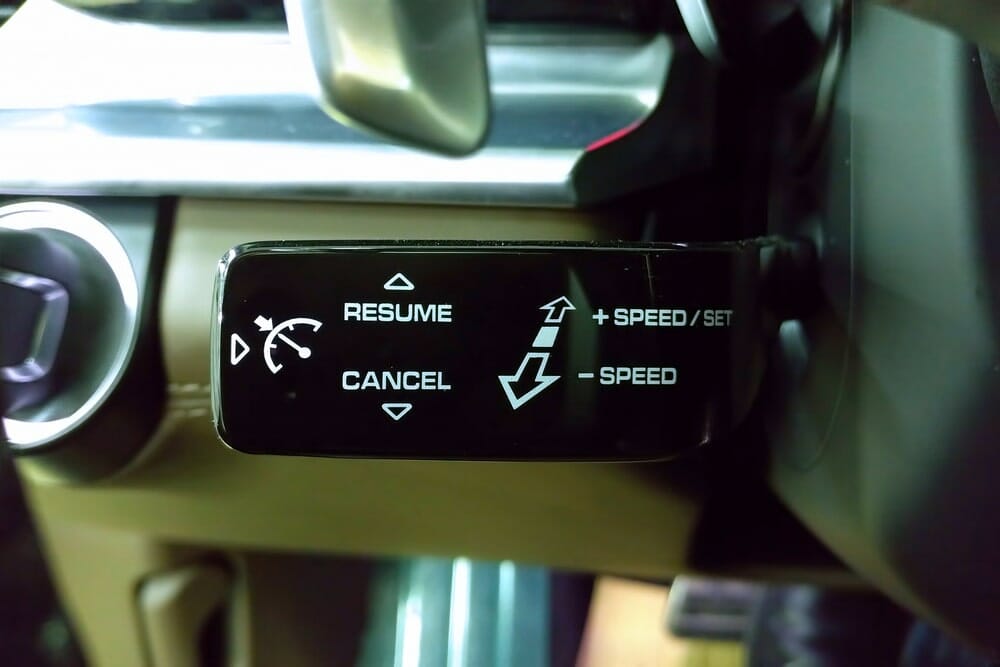
- So the first and most important button of the cruise control system is the “Cruise Main.” If you know you won’t be using cruise control anymore during the trip, turn it off.
- That’s also the first button you need to turn the cruise control system on, which can also be marked with the cruise control symbol, as seen in the image above. So, here is the explanation of all cruise-control-related buttons.
- The Cruise Main/Cruise Control Symbol is to turn the system on and off; that doesn’t set the cruise speed.
- The Set button can sometimes be seen on two buttons, one for acceleration and the other for deceleration. You push the Set button for the cruise control to maintain the speed you are traveling at that moment.
- The Res button is one of those that not all cars have. If you see this button, the other one will be designated as Set, which does what we described previously. The Res button, however, is to reset the speed you had set the last time you used cruise control.
- The last two buttons are marked either as “accel” and “decel” or “+” and “-.” Once you have turned the cruise control on and set your speed, you use these buttons to accelerate or decelerate without having to turn the system off and on again. A single press of these buttons usually increases or decreases the speed by 3-4mph.
- Lastly, once you are done, push the “Cruise Main” button one last time to turn the whole system off.
What Can Stop Cruise Control From Working?
Several things can cause the cruise control to stop working, including a blow cruise control fuse.
It can also fail in modern and relatively modern cars due to a bad brake pedal switch, throttle body sensor, or a faulty ABS system. However, it can be due to vacuum line leaks, a dead cruise control motor, or a broken cable in older cars.
At What Speed Can the Cruise Control Be Activated?
You can activate cruise control at any speed above 20-30mph. That said, it’s best to use it at highway speeds, especially if you have a manual transmission vehicle and no adaptive cruise control.
How Many Sensors Are Used in Cruise Control?
Standard cruise control doesn’t use any sensors you can’t already find in all vehicles, like the speed and throttle position sensors.
Adaptive cruise control, on the other hand, uses a distance sensor in addition to all others. The adaptive cruise control uses the distance sensor to accelerate and decelerate, matching the speed of the car in front of you without your input.

When Should Cruise Control Be Used?
It’s best if you use cruise control on the highway when you know you will be driving for long distances without many interruptions. That’s the safest way to use it.
Modern adaptive cruise control systems with an automatic transmission vehicle can be used in start and stop traffic because they match the vehicle’s speed in front. That means your car goes when the traffic goes and stops when the traffic stops.
What Is the Benefit of Cruise Control?
The first benefit is reducing muscle fatigue on long trips, and the second is increasing fuel economy. However, the increase in fuel economy is minor, and it’s barely noticeable even during highway driving.
The last benefit only applies to adaptive cruise control systems, and that’s safety. An ACC system will brake on its own if the car in front brakes, reducing the risk of a car crash.
Can You Brake on Cruise Control?
Yes, you can brake while using cruise control, but that automatically disengages it. If you want to activate the cruise control again, you can push the “Res” button for the system to resume at the last speed you had set. However, if you want to set the speed, you are currently traveling at, press the “Set” button.
How Safe Is Cruise Control?
Cruise control isn’t particularly dangerous if drivers use it correctly. That means you won’t put yourself or anyone else in danger as long as you keep your foot close to the brake pedal and use the Cruise Main/On and Off button.
Also, modern adaptive systems are extra safe by engaging brakes instead of the diver if it notices you are going to crash.
What Is the Lowest Speed for Cruise Control?
The lowest speed you can activate cruise control at is 25mph in most cars. That’s because, at those speeds, you are driving in urban areas with much higher chances of emergency braking.
While cruise control doesn’t take away from the braking performance, it will lower your reaction time which is crucial in such circumstances.
So, now that we have covered everything you need to know about cruise control systems, the importance of the Cruise Main button is clear. Since it serves as an on and off button for the whole system, it ensures you don’t activate cruise control by accident.
That can put you and other road users at risk, but putting people at risk can also happen if you don’t use cruise control responsibly. That’s why we emphasized the safety precautions before explaining how to use the cruise control.
Also, if some of the controls and buttons were unclear, hopefully, we have managed to explain everything as clearly as possible. We know it can be confusing since the button markings are not universal for every vehicle.
For more information, check out these other articles:
7 Reasons Cruise Control Stopped Working & How to Fix It
Why Is My Cruise Control Light Blinking? (Common Causes)
Is Cruise Control Bad For Your Car? (When to Use It)
Ran When Parked - Car, Vehicle & Truck Guides and Repair Journals.
What Does Cruise Main Mean? Throw Away Your Confusion
What does cruise main mean ? This question often echoes in the corridors of countless travel forums. But the interesting thing is that you’ve sailed into the right harbor because this piece promises to cast away the fog surrounding this term, illuminating its significance in the vast sea of cruise lingo.
It means that by the time you dock at the end, the mystery will be history, and you’ll be clear about the said term’s meaning, its importance, and everything that relates to it.
JUMP TO TOPIC
- 1.1 Historical Origins
- 1.2 The First Mention in Records
- 1.3 Evolution Through the Years
- 2.1 Cruise for Today’s Drivers
- 3.1 Why Does the Said Term Matter?
- 3.2 Beyond Just Jargon
- 3.3 Its Relevance in Modern Cruising
- 3.4 Connecting With Maritime Traditions: Digging Into the Details
- 4.1 Popular Misconceptions Debunked
- 4.2 The Reason Behind the Arising Confusion
- 5.1 Locating Key Amenities
- 6.1 Everyday Usage Among Cruise Enthusiasts
- 7.1 Integrating the Language of the Sea
- 7.2 Relevance in Cruise Booking and Planning
- 8 Main in Popular Culture
- 9 Conclusion
What Does Cruise Main Mean? A Brief Overview
Cruise main means that the cruise control system in a vehicle is activated but not set to a specific speed. It means the car is ready to maintain a steady speed once set by the driver. So, all you’ll have to do next is to set the speed.
Historical Origins
The concept of the given indication light has its roots deeply embedded in the development of automotive technology. During the mid-20th century, as automobiles began integrating more advanced features, the need for a system to maintain consistent speeds over long distances became apparent.
The term originated as manufacturers started developing preliminary cruise control systems. While the phrase wasn’t widely recognized initially, with the widespread adoption of cruise control in the 1970s and 1980s , the terminology became more common.
It encapsulated the idea of a car being primed to ‘cruise’ but awaiting the driver’s command to set the desired speed.
The First Mention in Records
Delving deep into automotive records reveals the said indicator’s initial mentions to be intrinsically linked with the broader development of cruise control mechanisms. Interestingly, as cruise control gained traction in vehicle designs, so did the nuances of its indicators and functionalities.
Evolution Through the Years
From the old basic cruise control mechanisms to the sophisticated systems we see in modern cars, its evolution isn’t any less fascinating. As technology advanced, so did the ways cars talk to drivers, leading to the inception of the main indication light of cruise , among other signals.
What Does Cruise Traditionally Represent?
Cruise traditionally represents seamless, uninterrupted movement. In maritime contexts, it referred to ships sailing continuously without set destinations. In the realm of automobiles, a cruise signifies a vehicle’s ability to maintain consistent speed with the help of cruise control technology.
Cruise for Today’s Drivers
Cruise lets you enjoy more comfortable long-distance drives, reducing driver fatigue .
As technology advanced, the cruise took on a more specific meaning, associated with the innovative feature of cruise control, enabling vehicles to sustain set speeds over extended or long periods automatically.
The Significance of Main
The term “main” in cruise main is an indicator. When the main indication light of the cruise illuminates, it signals that your cruise control is activated but hasn’t been set to a specific speed. Think of it as the car being ready to cruise but awaiting your next command.
Why Does the Said Term Matter?
The said term matters because it embodies a significant leap in vehicular technology and driver convenience .
Understanding the said term equips drivers with the knowledge of their vehicle’s state, signaling that while the cruise control system is activated, it awaits a specific speed setting.
Beyond Just Jargon
Beyond its direct functional implications, the term shows how automobile manufacturers constantly innovate to enhance drives. Being more than mere jargon, it serves as a bridge between drivers and the intricate world of automotive technology, ensuring safer and more informed driving practices.
Its Relevance in Modern Cruising
Today’s vehicles, from the popular Honda Civic to the esteemed Accord, come equipped with advanced versions of cruise control, such as adaptive cruise control . Yet, it remains a foundational aspect. It’s the precursor step before setting your desired cruising speed.
For those wondering, “What is cruise main Honda Accord?” or “What is cruise main Honda Civic?,” the answer lies in the car’s readiness to set a cruising speed.
Connecting With Maritime Traditions: Digging Into the Details
Cruise instantly conjures images of vast oceans , majestic ships, and voyages to distant lands. While it is primarily an automotive term, its maritime counterpart has rich historical importance. For centuries, cruising was integral to sea explorations, trade, and naval strategies.
Ships would cruise coastlines, exploring new territories or monitoring familiar waters. This maritime tradition underscores the essence of continuous, deliberate movement with purpose.
In a symbolic way, the modern car’s cruise control mirrors this age-old tradition , allowing for a steady, uninterrupted journey, reflecting humanity’s age-old desire for exploration and progress, whether by land or sea.
Mistaken Interpretations and Common Myths
The realm of automobile terminology is riddled with a bundle of misconceptions. Many people mistakenly believe that when the main inside the cruise is illuminated, the vehicle automatically maintains a set speed . This misinterpretation can lead to potential driving or road mishaps.
Another prevalent myth is that prolonged use of cruise control can harm the vehicle’s engine or affect fuel efficiency adversely.
Such misconceptions underscore the importance of not only introducing technological advancements but also ensuring that the general populace correctly understands them to harness their full potential safely and efficiently.
Popular Misconceptions Debunked
A common myth is that having the main indication light on could be detrimental to the car. Clearing it, it doesn’t hurt to have it on. It merely signifies the cruise control switch is activated, and all you need to do next is set your speed.
For those wondering, “Why is my cruise main light on?,” it’s simply your car’s way of signaling readiness .
The Reason Behind the Arising Confusion
The myriad of lights and signals on a car’s dashboard can be overwhelming. When drivers see the cruise main indicator, especially those unfamiliar with its meaning, queries like “How to turn off cruise main light Honda CRV?” or “How to turn off cruise main Honda Accord?” are bound to arise.
Adding to this, differences in nomenclature across car models can fuel the confusion.
The Influence on Passenger Experience
In the tapestry of vehicle features, cruise control, and by extension, the main function, significantly enhances the passenger experience in the car. Passengers can enjoy a smoother, more consistent ride without the sporadic accelerations and decelerations of manual speed adjustments.
This stability is especially appreciated during long journeys, where the comfort of passengers plays a pivotal role in the overall travel experience.
Beyond physical comfort, the psychological assurance that comes with advanced technology at the helm, knowing that the vehicle maintains steady speeds, adds an extra layer of tranquillity to the journey, allowing passengers to relax and truly savor the journey.
Locating Key Amenities
Whether on a cruise ship or navigating the features of a modern vehicle, pinpointing key amenities is pivotal for an optimal experience. Understanding deck plans and signage ensures passengers can swiftly locate dining halls, entertainment zones, or emergency exits on grand ocean liners.
Similarly, recognizing crucial indicators like main empowers drivers to utilize built-in amenities in the automotive realm effectively.
Such indicators and signs aren’t mere tokens of luxury or sophistication but also serve as navigational aids, helping users harness the full potential of their environment, ensuring safety and convenience while enriching the overall user experience.
In Casual Conversation: How Do the Drivers Use This Term?
In casual conversations, drivers use this term while discussing the car’s features or during troubleshooting . For the uninitiated, it can seem like a term reserved for car aficionados, but in reality, it is a feature many modern vehicles possess in today’s time.
Everyday Usage Among Cruise Enthusiasts
In automotive circles, discussions around cruise control are commonplace.
From sharing tips like “How do you turn off the cruise main on a Honda?,” to debating the advancements in adaptive cruise control safety, the term finds its way into many conversations.
Cruise Main vs. Other Nautical Phrases
Traditional maritime language , with phrases like “starboard,” “port,” or “bow,” evolved from centuries of seafaring tradition and the need for clear communication among sailors. On the other hand, the main originates from the modern era’s drive for vehicular automation and convenience.
It’s a testament to how language evolves with technology, showcasing how terms from different origins can inadvertently share phonetic similarities yet differ vastly in meaning and application.
The comparison of the main with genuine nautical terms offers a fascinating glimpse into the ever-evolving tapestry of human language and innovation.
Integrating the Language of the Sea
Melding nautical expressions with automotive discussions might seem unconventional, but it can offer a fresh perspective. Whether it’s delving into the depths of the main indication light signals or exploring the vastness of the sea, there’s a certain romance in intertwining these worlds.
Relevance in Cruise Booking and Planning
Planning maritime getaway often begins with leafing through glossy brochures or scrolling through enticing online deck plans. These materials are rich with terminologies. In this realm, understanding specific phrases and terms will allow you to have the desired vacation experience.
While it might sound like it belongs among these nautical terms, it’s notably absent. Instead, prospective travelers encounter words detailing cabin categories, amenities, and ship zones. Being well-versed in these terminologies can be the difference between securing a room with an ocean view or one nestled below decks.
Therefore, while it remains predominantly automotive, those planning a cruise are encouraged to immerse themselves in authentic maritime language to tailor their journey effectively .
Main in Popular Culture
In the swirling vortex of pop culture, terminologies from all spheres of life find their moment in the spotlight. It has not been immune to this phenomenon. It’s been name-dropped in off-beat comedies, cheekily referenced in TV shows, and has even inspired a few indie song titles.
Although it’s not always used with complete accuracy, its very presence in popular media effectively displays the said term’s resonance with modern audiences.
Navigating the world of automotive terms, like the one discussed in this post, can feel like wading through a dense fog. But now, with this handy guide in tow, you’ve got the clarity you craved before reaching this post. Understanding it is just one of the many ways to truly appreciate the marvels of modern vehicles.
- Cruise main meaning: It’s all about cruise control readiness .
- Pop culture tie-in: More than just jargon, it has made its mark.
- Know your car: Knowledge boosts confidence on the road .
- Beyond the manual: Understanding leads to better vehicle care.
- Stay Informed: The automotive world is vast. Every term counts.
So, next time that indicator light pops up, you’ll greet it with a knowing nod rather than a puzzled frown.
- Recent Posts
- What Happens When a Car Reaches Maximum Mileage? Unveiled! - March 28, 2024
- What Happens If You Don’t Rotate Your Tires? Risks Unfolded - March 28, 2024
- What Does D3 Mean in a Car? Quickly Grab the Answer Inside - March 28, 2024
Related posts:
- Can You Make a Car Run Without a Battery and for How Long?
- What Does Not for Hire Mean on a Truck? Sticker Explained
- What Are the Kia Soul Trunk Dimensions? Discussing Facts
- Why Is My Car Lower on One Side? How to Fix It
- Hertz vs Enterprise: Detailed Comparison of These Companies
- What Color Is Diesel Fuel? Significance of Different Colors
- How Do You Reprogram a Transmission Control Module: A Guide
- What Is BMW SULEV Warranty? A Detailed Guide
It's easy to bash tech, but I've started taking robotaxis — and they're awesome
Your browser does not support the video element.
- Unlike other hyped-up tech, self-driving taxis look like they could be the real thing.
- You can take Waymo's software-powered taxis in San Francisco and Phoenix. They work just like an Uber.
- Waymo's robot taxis aren't perfect, and there are very reasonable concerns about them. But also: They're self-driving taxis that really work!

It's easy to crap on tech. We — I — do it all the time.
Sometimes it's because tech doesn't work the way I want it to . Sometimes it's schadenfreude about a big hyped thing that falls flat . Sometimes it's just a sense that the tech we all depend on may be harming us in ways we don't understand and can't control.
But also: Sometimes tech reminds you that tech can be awesome, in the golly-gee-can-you-believe-it sense some of us used to have about this stuff.
Which is exactly how I felt after my last trip to San Francisco, when I took several rides in Waymo's robotaxis .
That's partly because the tech is … amazing. You really are in a car, driving around the city, with no one in the driver's seat. Software and sensors take care of everything.
And partly because the tech already seems so … normal. You order a Waymo via an app, just like an Uber or Lyft. It shows up, you get in, it takes you where you want to go, and you get out.
Yes, my 13-year-old son and I spent the first few minutes in our first Waymo texting our friends and family: OMG IM IN A SELF DRIVING TAXI. We also documented it on social, of course.
View this post on Instagram A post shared by Peter Kafka (@pkafka)
We also felt a bit of the trepidatious rush you get when you sit down in a roller coaster and have that internal debate: Is this safe? It must be safe, because otherwise they wouldn't let you do it, right? But seriously, is this safe?
But after those first few minutes of novelty, we went back to doing what we always do in an Uber or a Lyft: zoning out on our phones, staring out the window, and spending next to no time thinking about who, or what, was driving us.
Which, to me, is really the most amazing part: This stuff is here, now, and you can … just use it.
At least some people can. Waymo, which is owned by Google's parent company, Alphabet, has a couple hundred self-driving cars roaming around San Francisco, and access is still limited there via a waiting list, as well as by geography . You can't get a Waymo to pick you up at San Francisco International Airport, for instance, or take you across the Bay Bridge to Oakland.
In Phoenix, where Waymo first launched consumer access , it has about the same number of cars but no waiting list. And now it's starting to roll out in Los Angeles and Austin.
We've heard about self-driving taxis forever, but they're just starting to become a reality
While Waymo says it drives tens of thousands of trips a week, even the most tech-savvy people I talk to have yet to ride in one.
And it's reasonable to have concerns about this tech as it rolls out. Waymo's rival Cruise halted its service last fall after a slew of incidents, including a grisly one where a self-driving Cruise dragged a pedestrian who had been hit by a human-driven car.
Related stories
Self-driving tech is also an obvious problem for humans who depend on ride-hailing services to make a living. (On my previous trip to San Francisco, one of my Uber drivers told me he had previously been a recruiter at Amazon who lost his job during one of Amazon's recent layoff rounds .)
And to be honest, I'm not even sure I would always order a Waymo if I had a chance. Right now, beyond the novelty, the big upside for me is that the fleet's cars — electric Jaguars — are comfortable and clean. And that the per-trip cost is about the same as an Uber Comfort (one level up from the base Uber X fare) — but really a bit cheaper, since you're not tipping your robot driver.
But there's no reason to believe that the cars will remain pristine, and that pricing will stay low, as this stuff rolls out more broadly. (Waymo doesn't disclose financials, and the company wouldn't tell me if it's making money on each trip. I assume it does not, for now; we do know Waymo has invested billions in this since it started out as a Google project in 2009.)
Still, I can think of all kinds of uses for Waymo — right now. Like using it for food delivery — which is happening in Phoenix, via Uber Eats . Maybe it's for people who believe a robot is more reliable than a human driver — at least we know a Waymo won't watch TikTok while driving on the highway like a Lyft driver did when I was in their back seat a couple of years ago .
Or maybe it's simply for people who would rather not interact with another human when they're in a taxi. Which is what David Margines, Waymo's director of product management, says is the service's chief appeal for customers right now. "It's their own space," he says.
Waymo's self-driving cars aren't perfect
Yes, there are still some issues with Waymo, at least in the rides I took recently. One is simply figuring out how to get in the thing: When your Waymo arrives, you unlock its doors with your phone — but only once it has driven to a very precise location that Waymo knows and you don't.
Which led, a couple times, to some awkward slow dancing between myself and the robot car. It would stop when I got near but wouldn't let me in because it wasn't exactly where it was supposed to be. Then I'd step away, and then it would lurch forward toward its still-unknown-to-me target spot. Then I'd step forward and it would stop — but it still wouldn't let me in.
On one of my trips, this happened on a particularly tight, winding San Francisco street. As my Waymo and I negotiated with each other, we ended up blocking multiple cars, including a minivan whose driver started honking at us in frustration.
"You can't honk at a robot," I told her, not very helpfully. "It doesn't care."
Meanwhile, a guy walking by stopped and took out his phone to record the scene. "You can put a cone on it to disable it," he told me, unprompted. Apparently he's right?
More worrisome to me was that on one of my trips — to a Warriors game at the Chase Center arena — at a busy intersection, a Waymo in front of us wouldn't respond to a traffic cop trying to wave it through a red light. Then another Waymo pulled up beside it and also didn't respond to the cop. So now three Waymos were sitting there, blocking traffic and waiting for the light. The traffic cop stopped trying to move us and just held his hands over his head in disgust.
I figured this was a well-known and understandable problem for Waymos — of course their software and sensors wouldn't respond to humans telling them to override traffic signals! Think of the problems that could cause!
But Margines told me that Waymos are, in fact, supposed to understand human signals like a traffic cop. A Waymo PR person sent me this clip from Waymo CEO Dmitri Dolgov showing a Waymo doing just that:
Leveraging AI for semantic understanding of complex driving scenes is a key capability of the #WaymoDriver . Check out this example of it autonomously interpreting and adhering to a police officer directing traffic in Los Angeles. pic.twitter.com/PyPqVaOc6B — Dmitri Dolgov (@dmitri_dolgov) January 19, 2024
But unlike with other Big New Tech innovations I've seen in the past — anyone still have a 3D TV in their living room? — I don't think self-driving tech is going away. I think the people behind the tech will figure out its possibilities, its limitations, and the places it does and doesn't make sense.
Meanwhile, Cruise is starting up again , but this time with humans in the driver's seat. Elon Musk has promised to unveil his robotaxi this summer, and while your doubt about anything Musk says is well warranted, you never know. So I think that one way or another, we are going to make some version of this standard for many of us in the not-far-off future.
Is that great? I don't know. But it really is amazing.
Watch: Driverless taxi torched by mob in San Francisco
- Main content

IMAGES
VIDEO
COMMENTS
Cruise control, also known as speed control, is an electronic system that allows you to maintain a specific speed without manually controlling the accelerator pedal. The system uses sensors and electronic components to control the throttle and keep your car moving at a desired speed.
Cruise control in a car replicates the inputs of a driver to control the vehicle's speed. But instead of pressing the accelerator pedal, it uses a different mechanism to maintain a constant cruising speed. Initially, the system used a cable to control the accelerator (throttle valve). You can find these mechanisms in older cars.
3. Drive your car until you reach your desired speed and hit "SET.". Cruise control will set the car to hold steady at a particular speed. Once you reach the speed you want (keep an eye on your car's speedometer), push the "SET" button.
Cruise control is an electronic device within your vehicle that controls the speed of your vehicle. It allows the driver to maintain a constant speed of 25 mph without holding their foot on the accelerator. Although the feature has been around for 70 years, automotive manufacturers continue to improve upon the technology to provide drivers with ...
The cruise control system controls the speed of your car the same way you do -- by adjusting the throttle position.But cruise control actuates the throttle valve by a cable connected to an actuator, instead of by pressing a pedal.The throttle valve controls the power and speed of the engine by limiting how much air the engine takes in (see How Fuel Injection Systems Work for more details).
Cruise control (also known as speed control, cruise command, autocruise, or tempomat) is a system that automatically controls the speed of an automobile. The system is a servomechanism that takes over the car's throttle to maintain a steady speed set by the driver.
You operate cruise control by either a stalk on the steering column or several buttons on the steering wheel. These include an on-off switch; a "set" button to select the speed you want the car to ...
This cruise control is a kind of driving on auto-pilot mode. It automatically controls the car's steady speed by taking the control of the throttle body. It comes in cars having a drive-by-wire system where an electronically controlled throttle body is manipulated by a cruise control computer. The cruise control computer is a small computer ...
Cruise control was originally only found on high-end luxury cars, but now even the smallest cars often have it fitted as standard. If you have never used cru...
1. Definition. Cruise control is an electronic system that allows a vehicle to maintain a consistent speed, without the need for continuous driver input on the accelerator pedal. 2. Activation. Cruise control systems are typically activated by pressing a button or switch located on the steering wheel or dashboard. 3. Function.
cruise: [verb] to sail about touching at a series of ports.
Adaptive Cruise Control. Adaptive Cruise Control automatically adjusts the car's speed to maintain a safe distance from the vehicle ahead. This feature uses sensors to detect the distance and speed of the vehicle in front of you. By doing so, it ensures that you maintain a constant speed while avoiding collisions.
Cruise control is a system in cars that automatically controls the speed of the car. The driver sets a desired speed, and the cruise control system will maintain that speed without the driver having to do anything. Adaptive cruise control is an improved version of cruise control that automatically slows down and speeds up the car in order to ...
Cruising is a social activity that primarily consists of driving a car. Cruising is distinguished from regular driving by the social and recreational nature of the activity, which is characterized by an impulsively random, often aimless course. A popular route (or "strip") is often the focus of cruising. Cruising can be an expression of the ...
Adaptive cruise control (ACC) is a system designed to help vehicles maintain a safe following distance and stay within the speed limit. This system adjusts a car's speed automatically so drivers ...
The cruise main, as mentioned above, is a control system in the car that is concerned with adjusting the car's speed and making it move at a set speed without having to press the pedal. Though this is what a beginner like you needs to know about the cruise main term, let us clarify one thing here. Cruise Main is actually the button that's ...
Cruise control is a feature that comes in handy when you drive at a constant speed. It is an electric system that allows you to set your car to a specific speed, letting you take your foot off the accelerator pedal. So, it can ease foot-fatigue and stress over a long drive. Another great benefit to using cruise control is that you are going to ...
Cruise main is a term used in cars to describe a system that helps the vehicle maintain its speed. You may not have used it before. But if you're planning a long road trip, it's worth considering. A cruise main control system uses an electronic throttle to maintain a set speed, also called a cruising speed. When activated, the cruise main ...
Decode the cruise control symbol on your car dashboard and understand its standard meaning. ... If the cruise control symbol on your dashboard starts flashing, it indicates a potential issue with the cruise control system. The exact meaning of the flashing symbol can vary between different car models. To determine the specific problem, consult ...
Cruise main is a term exclusively used in the automotive field, featuring a system that helps control vehicles' speed and consequently lower the chances of accidents on the road. The cruise control button adheres to the steering wheel. In some automobiles, it is also labeled with a "cruise" symbol to be easily noticed.
The Cruise Main/Cruise Control Symbol is to turn the system on and off; that doesn't set the cruise speed. The Set button can sometimes be seen on two buttons, one for acceleration and the other for deceleration. You push the Set button for the cruise control to maintain the speed you are traveling at that moment.
Cruise main meaning: It's all about cruise control readiness. Pop culture tie-in: More than just jargon, it has made its mark. Know your car: Knowledge boosts confidence on the road. Beyond the manual: Understanding leads to better vehicle care. Stay Informed: The automotive world is vast. Every term counts.
CRUISE CAR definition: See squad car | Meaning, pronunciation, translations and examples in American English
Waymo's rival Cruise halted its service last fall after a slew of incidents, including a grisly one where a self-driving Cruise dragged a pedestrian who had been hit by a human-driven car.